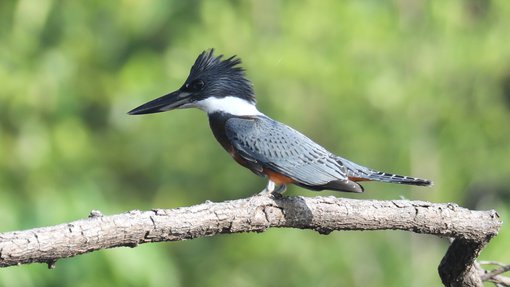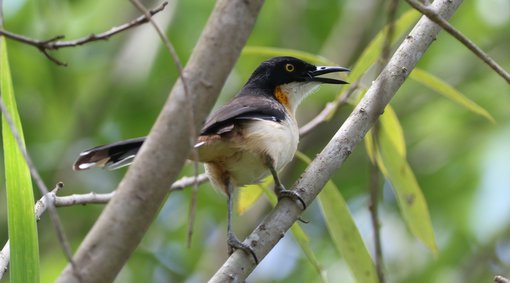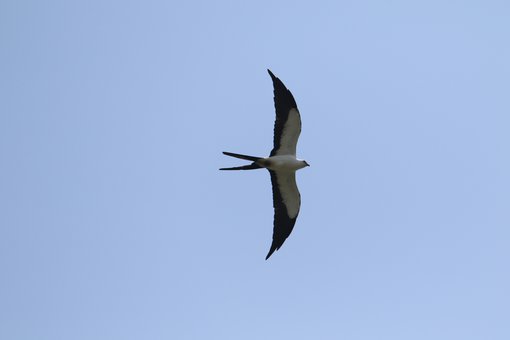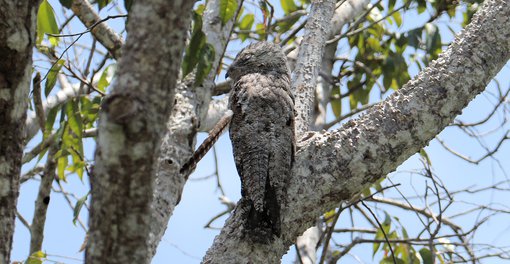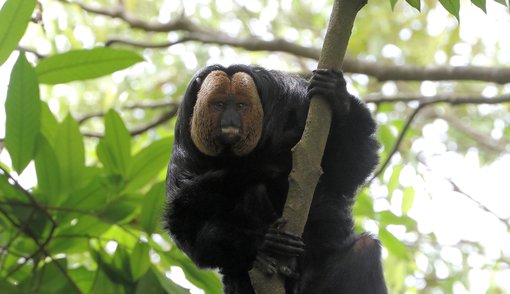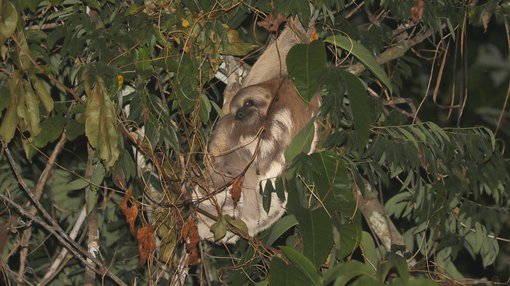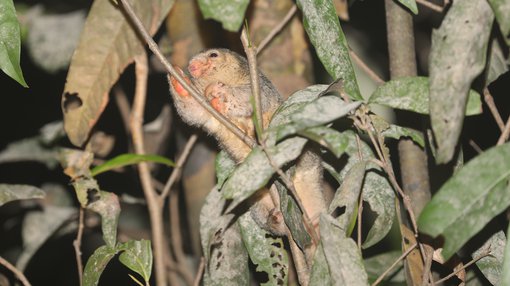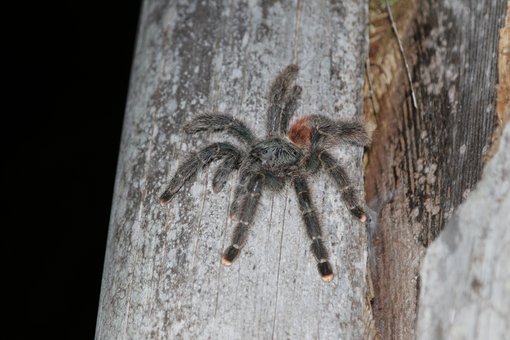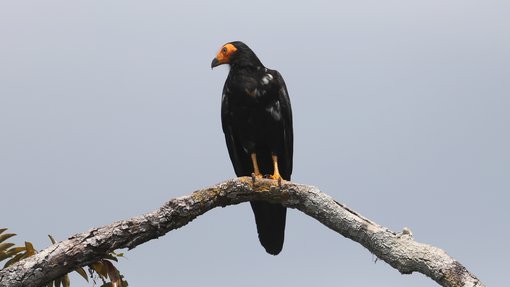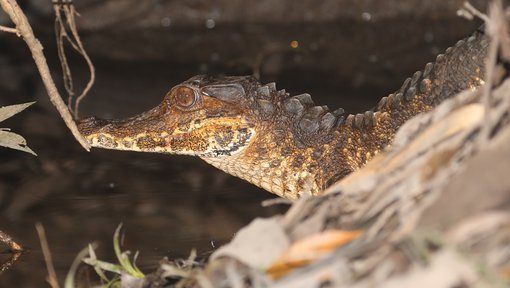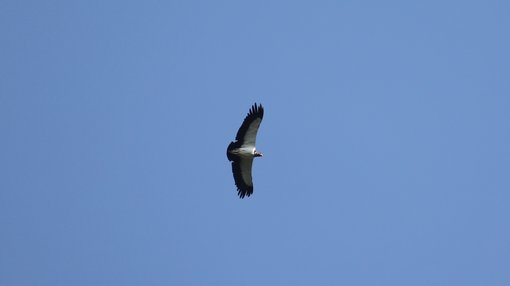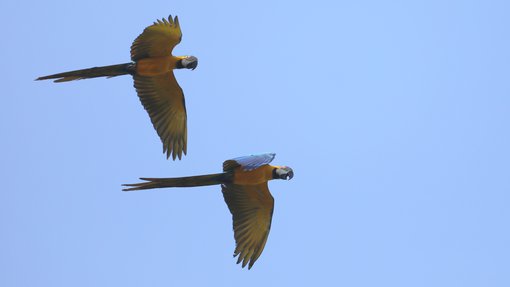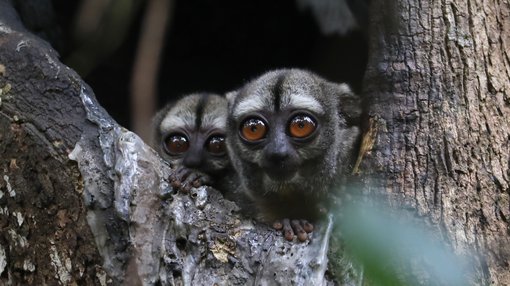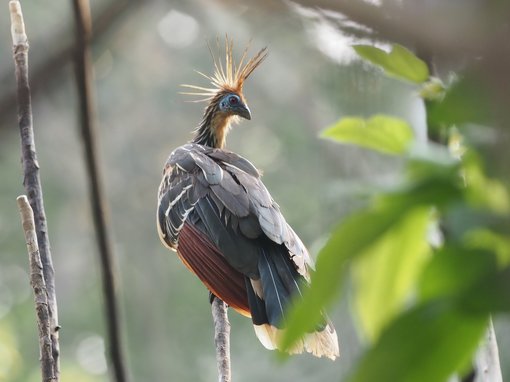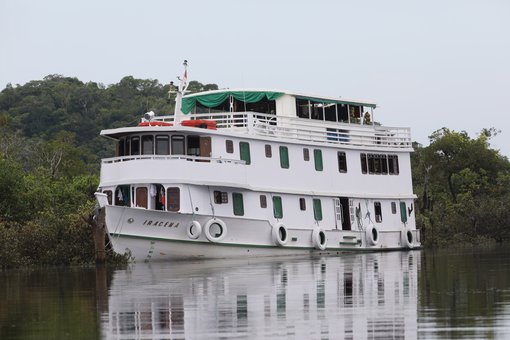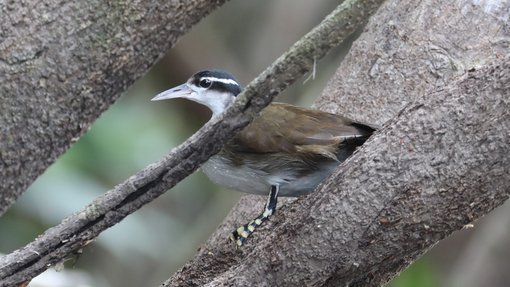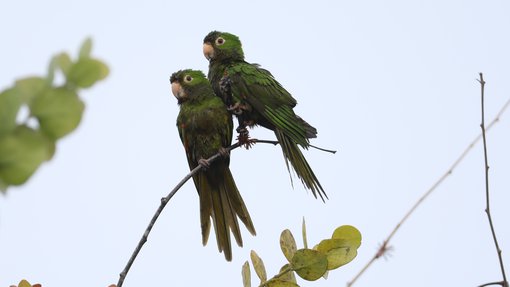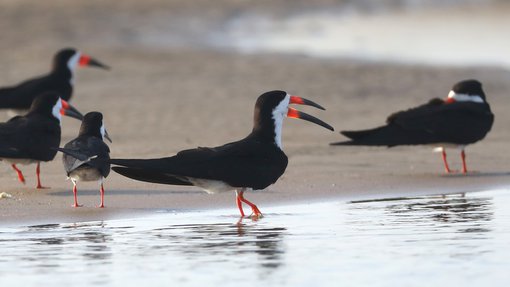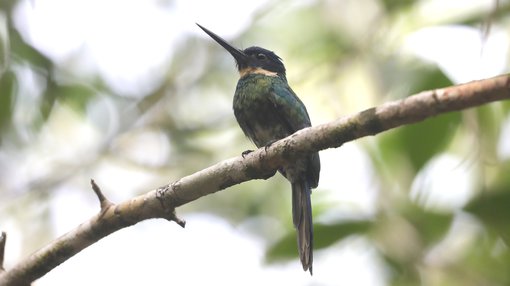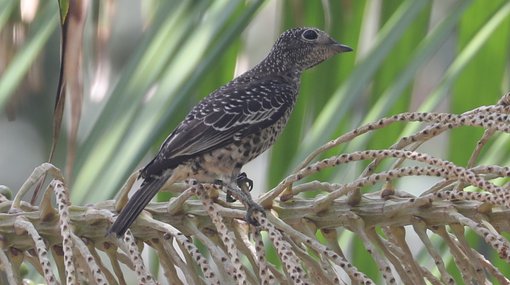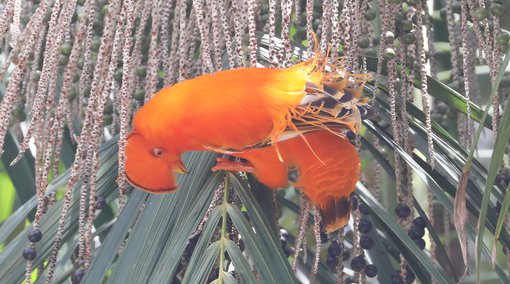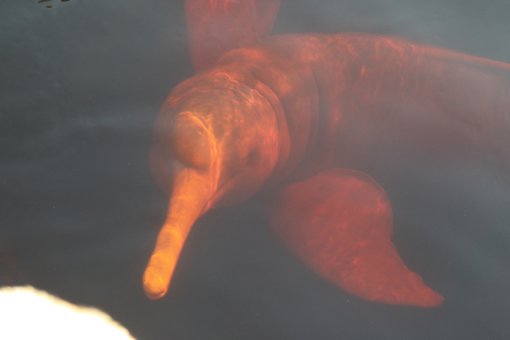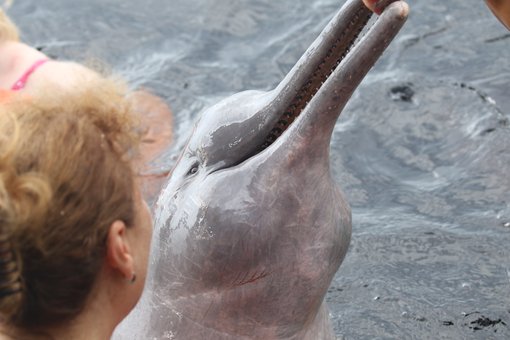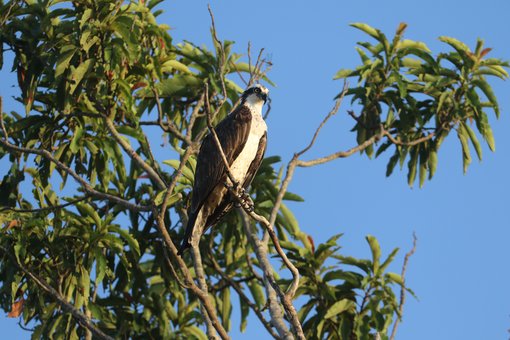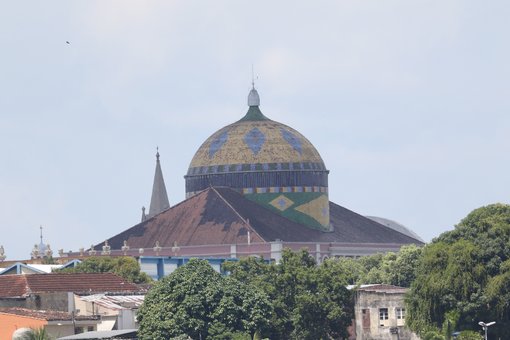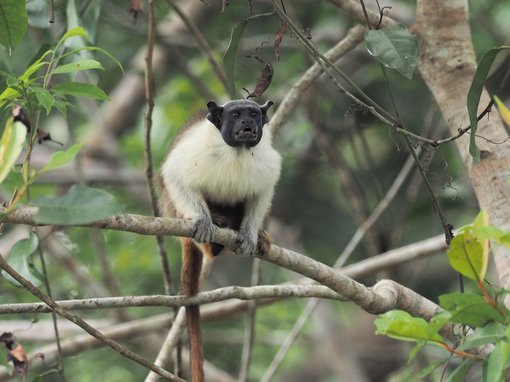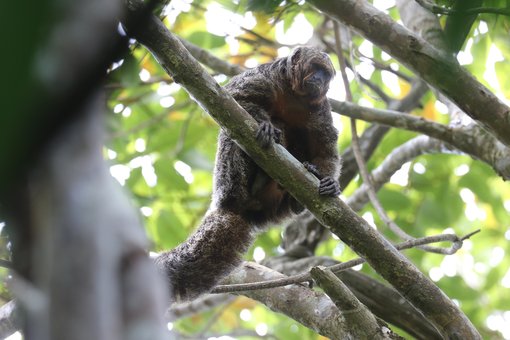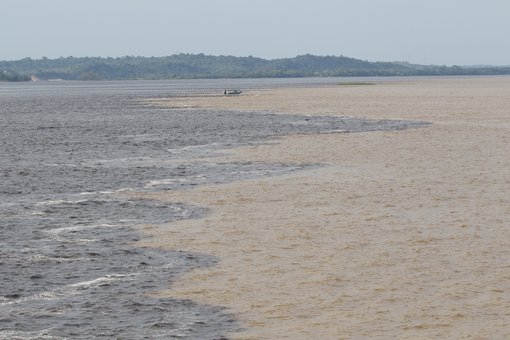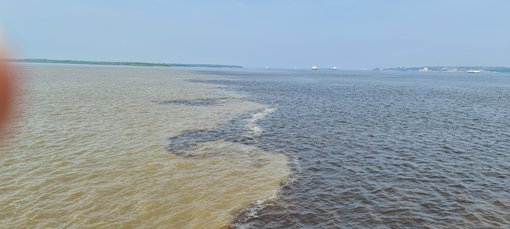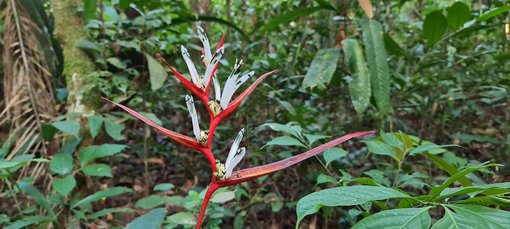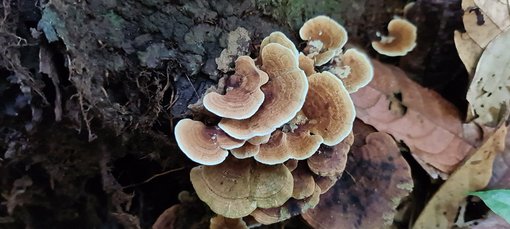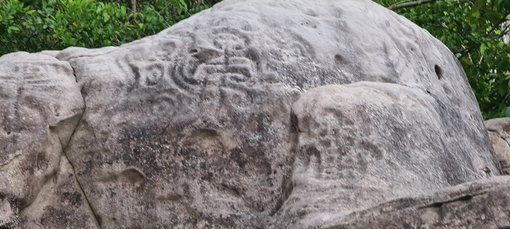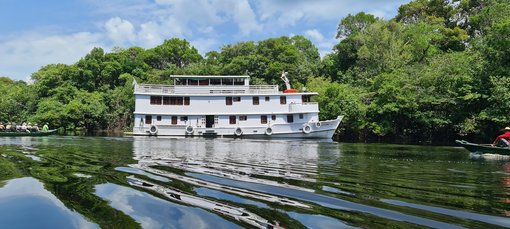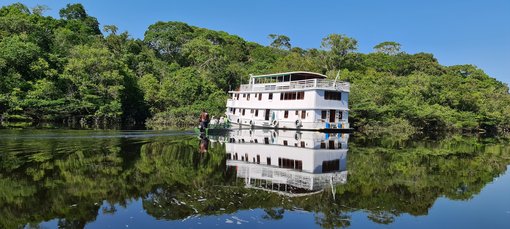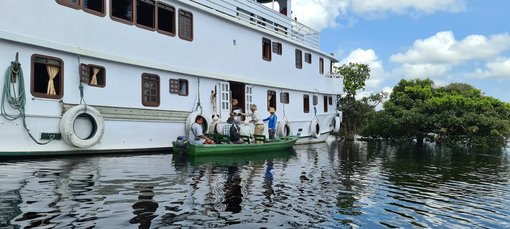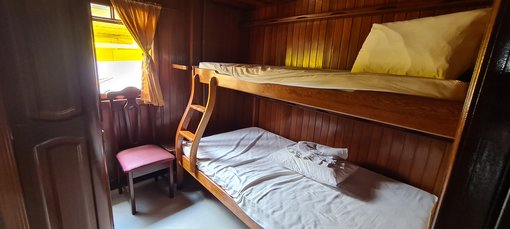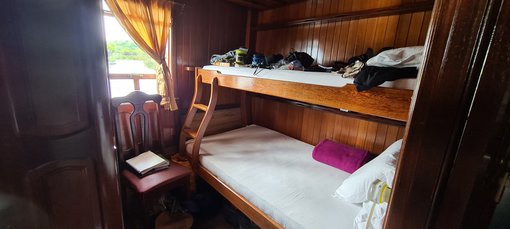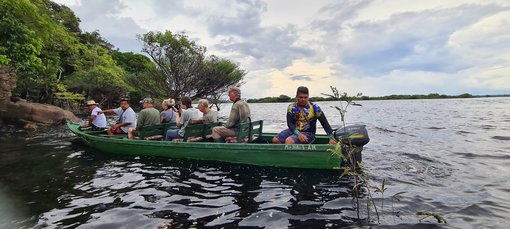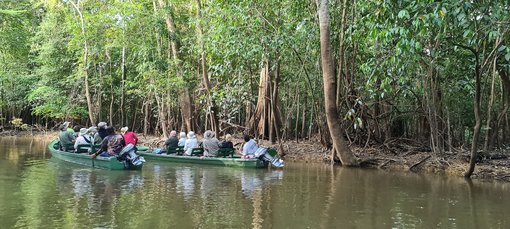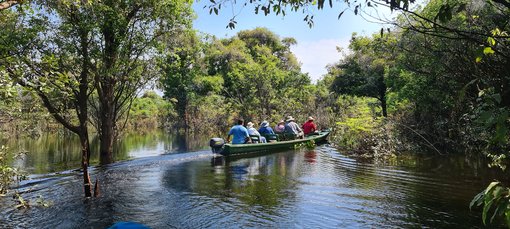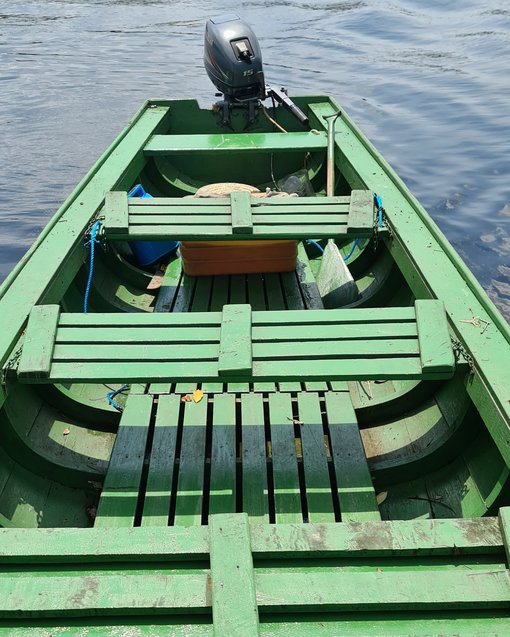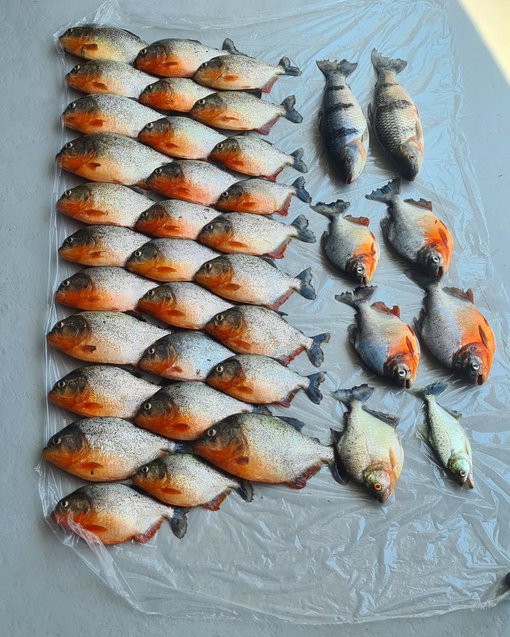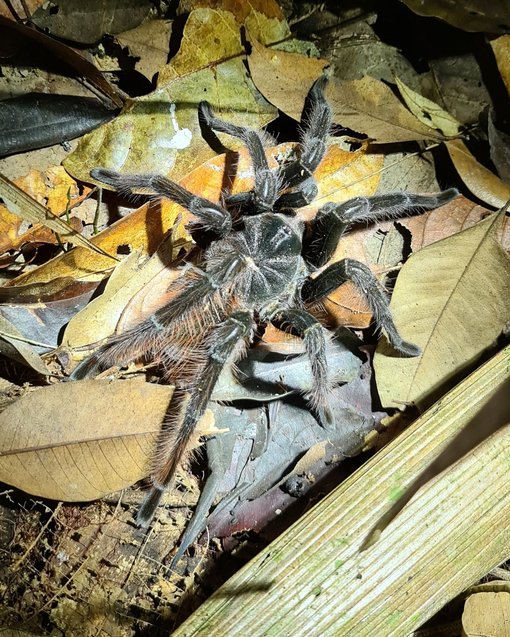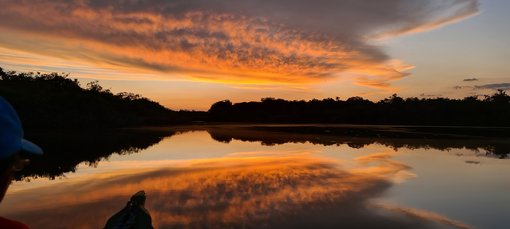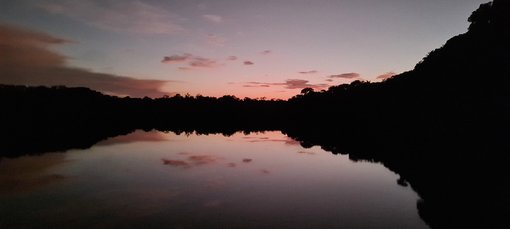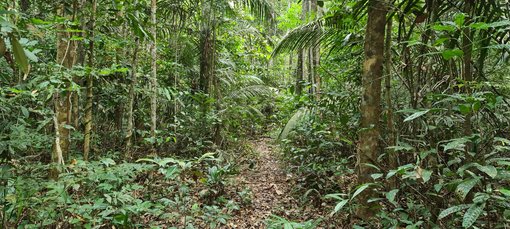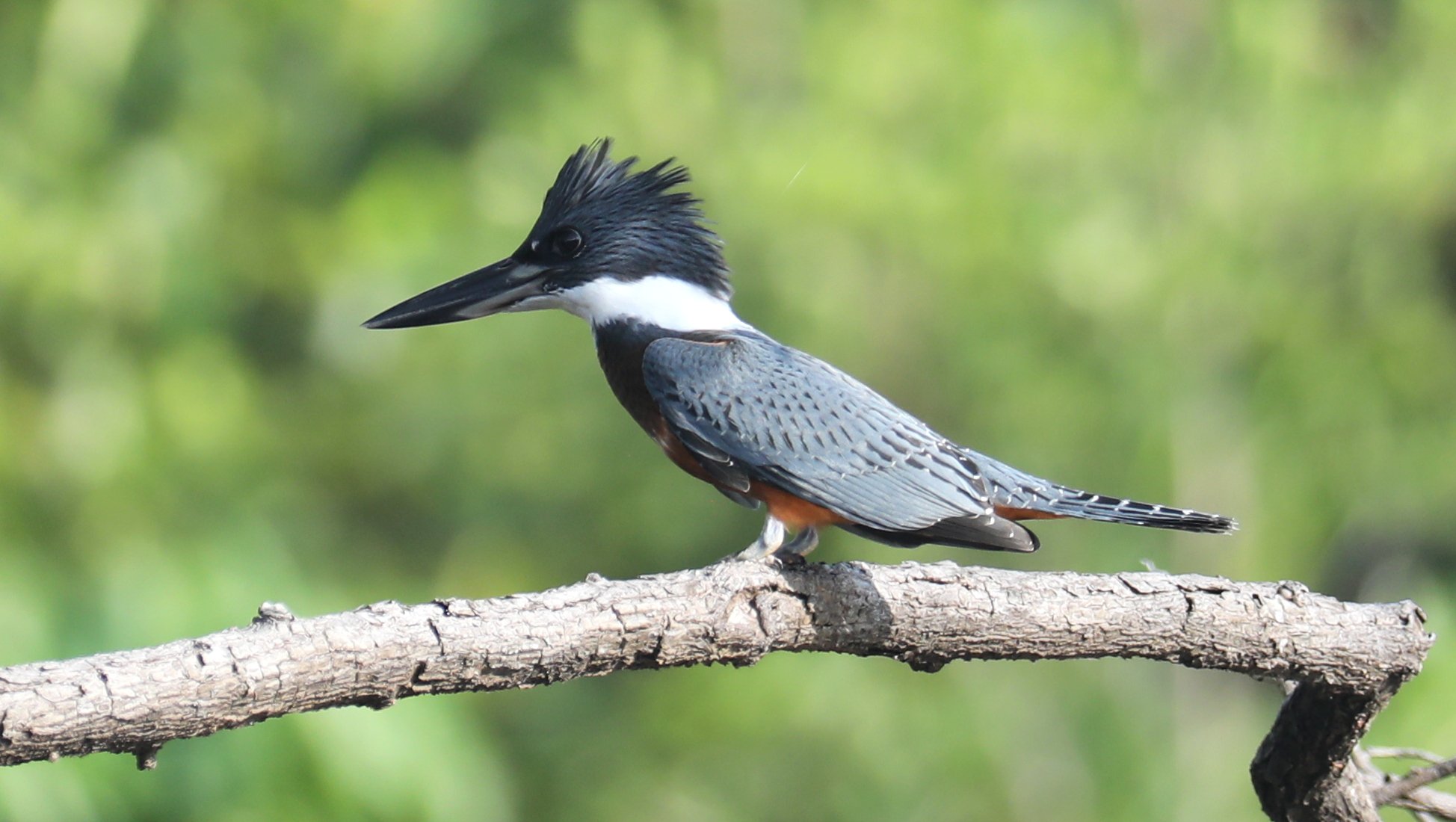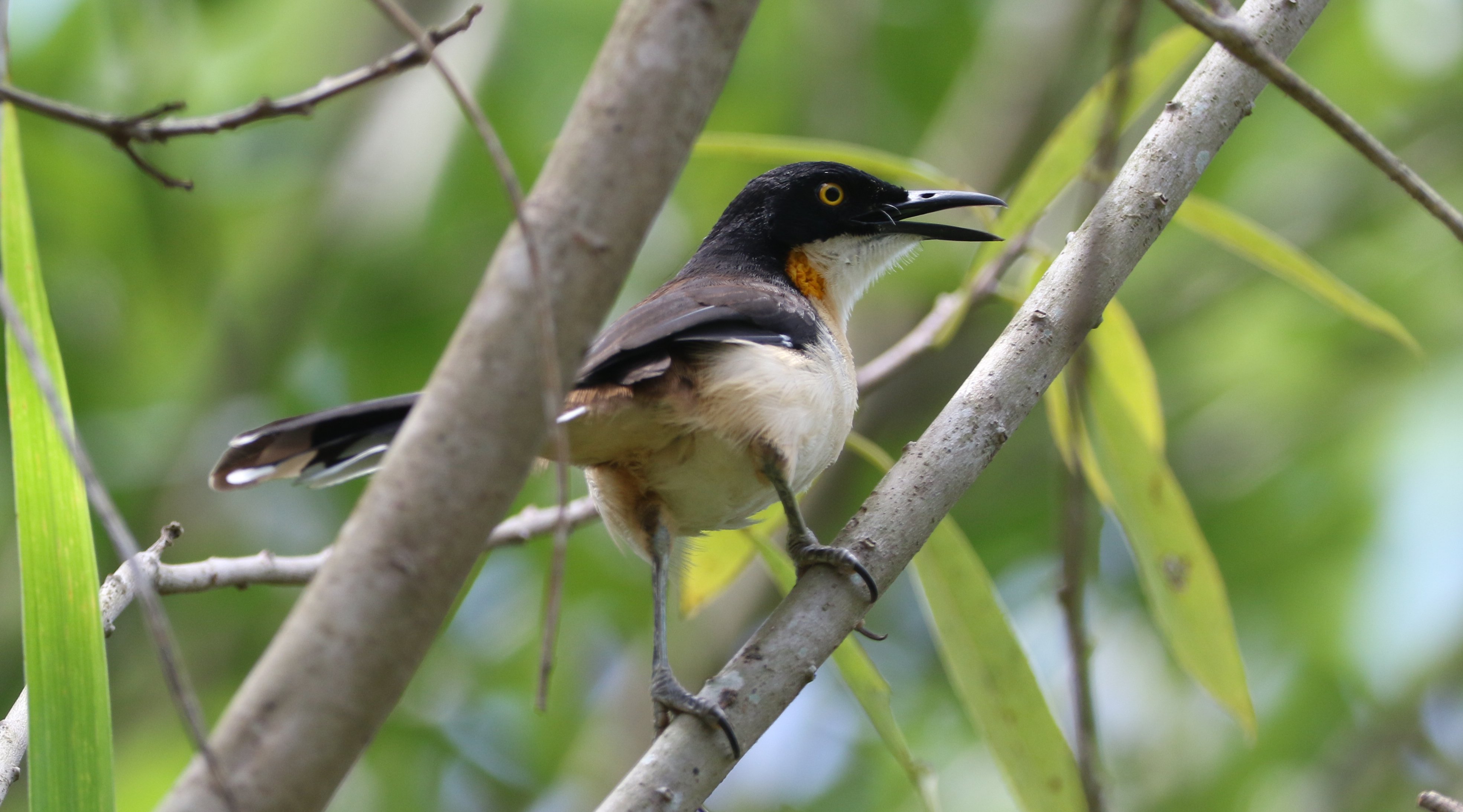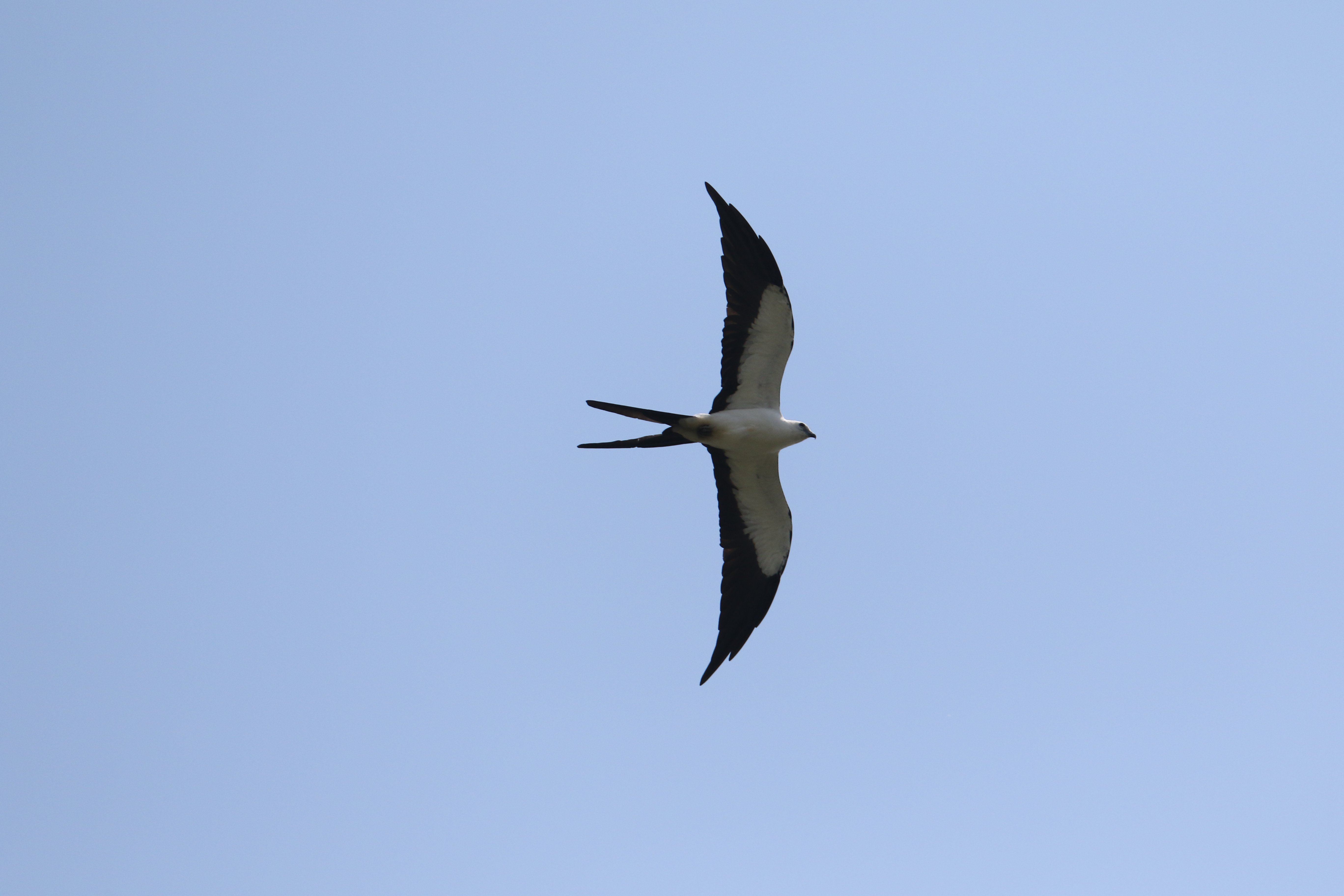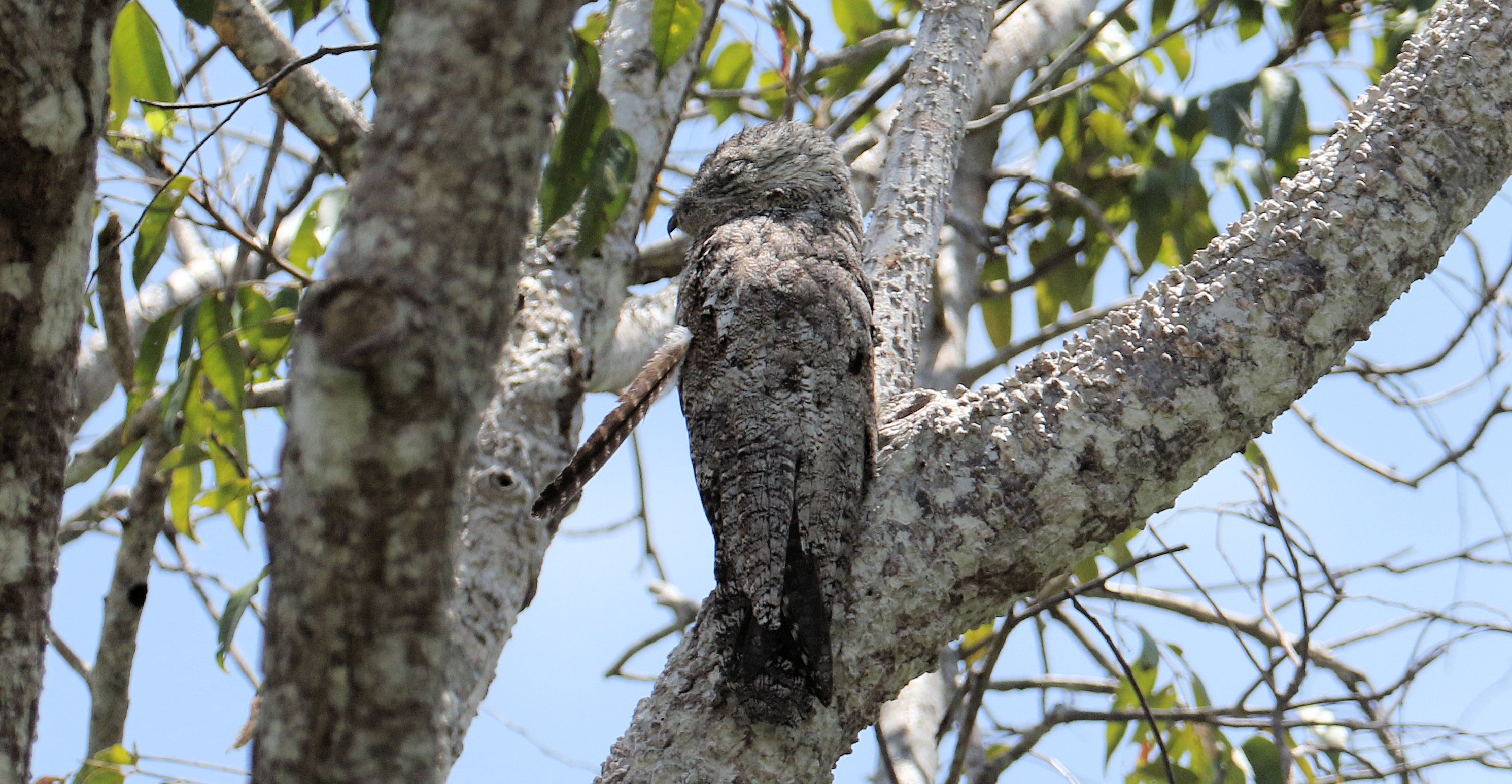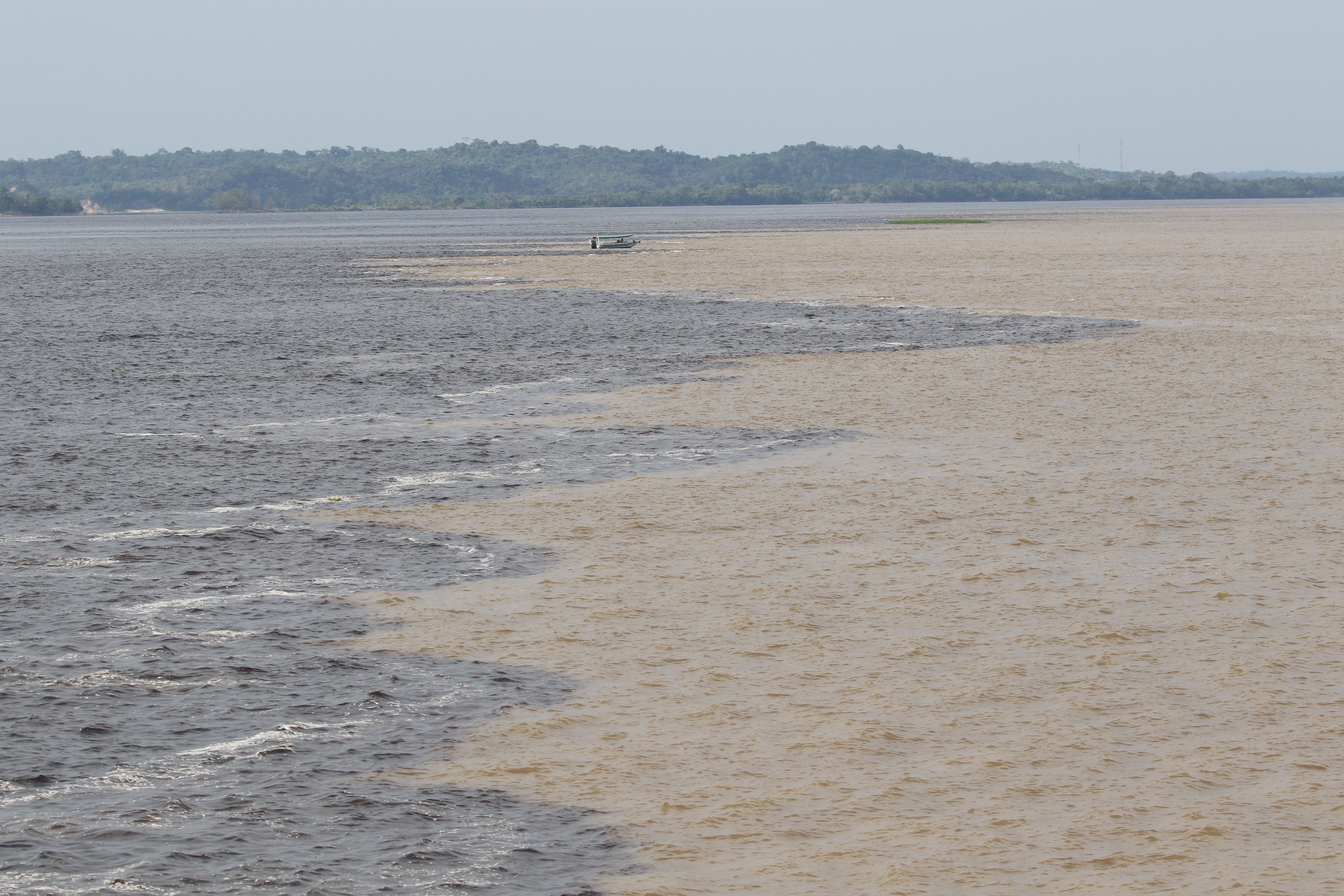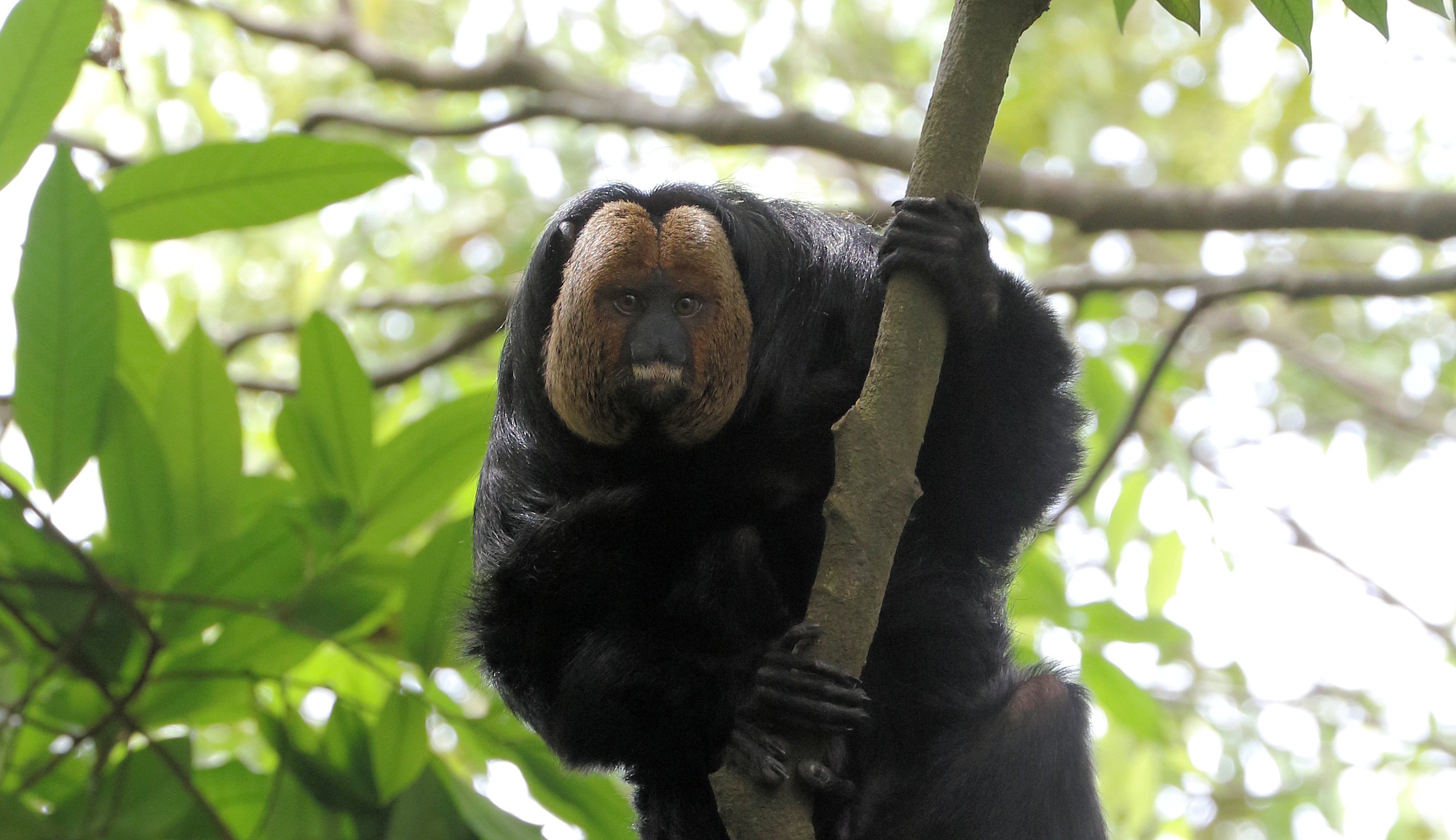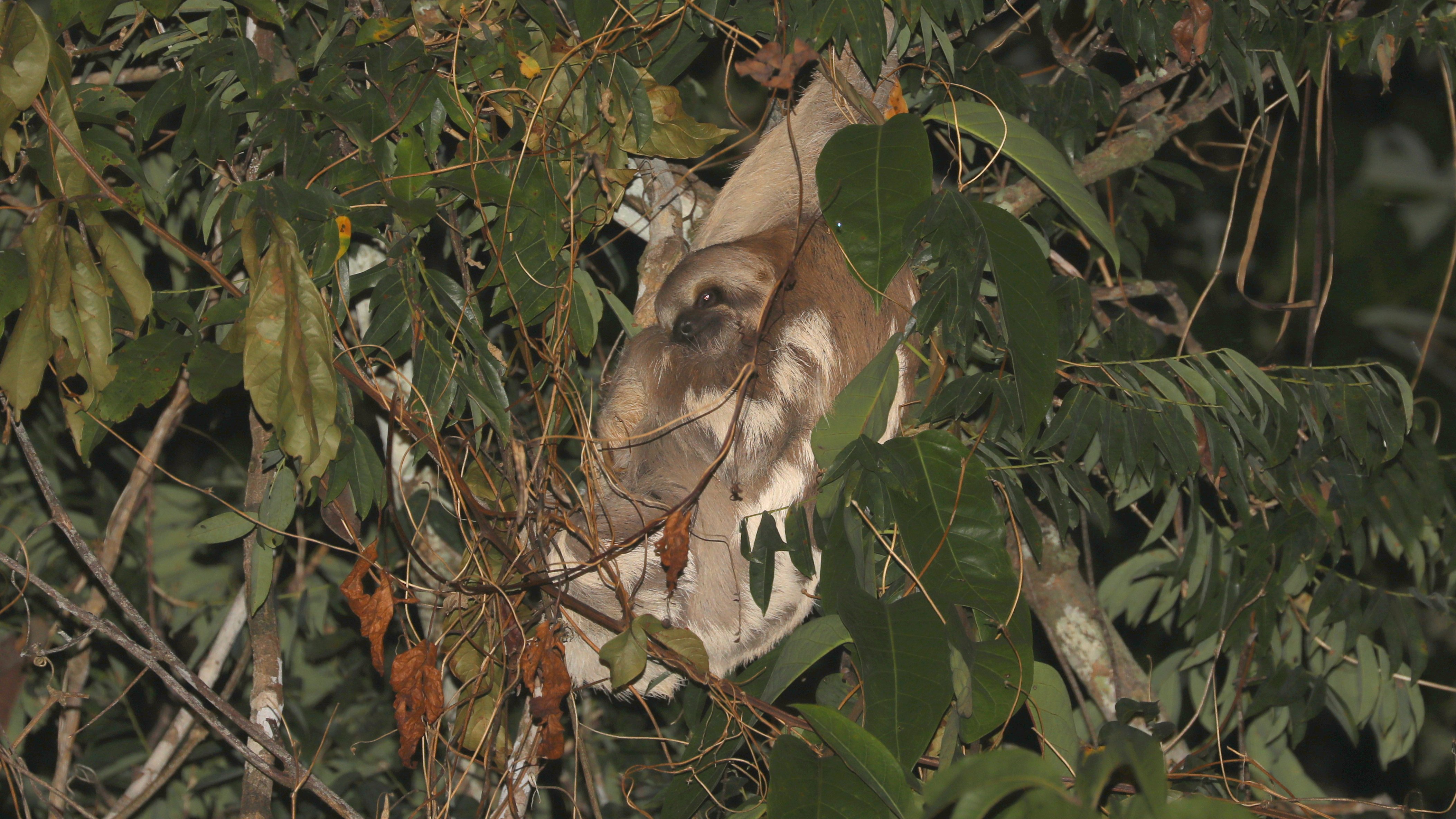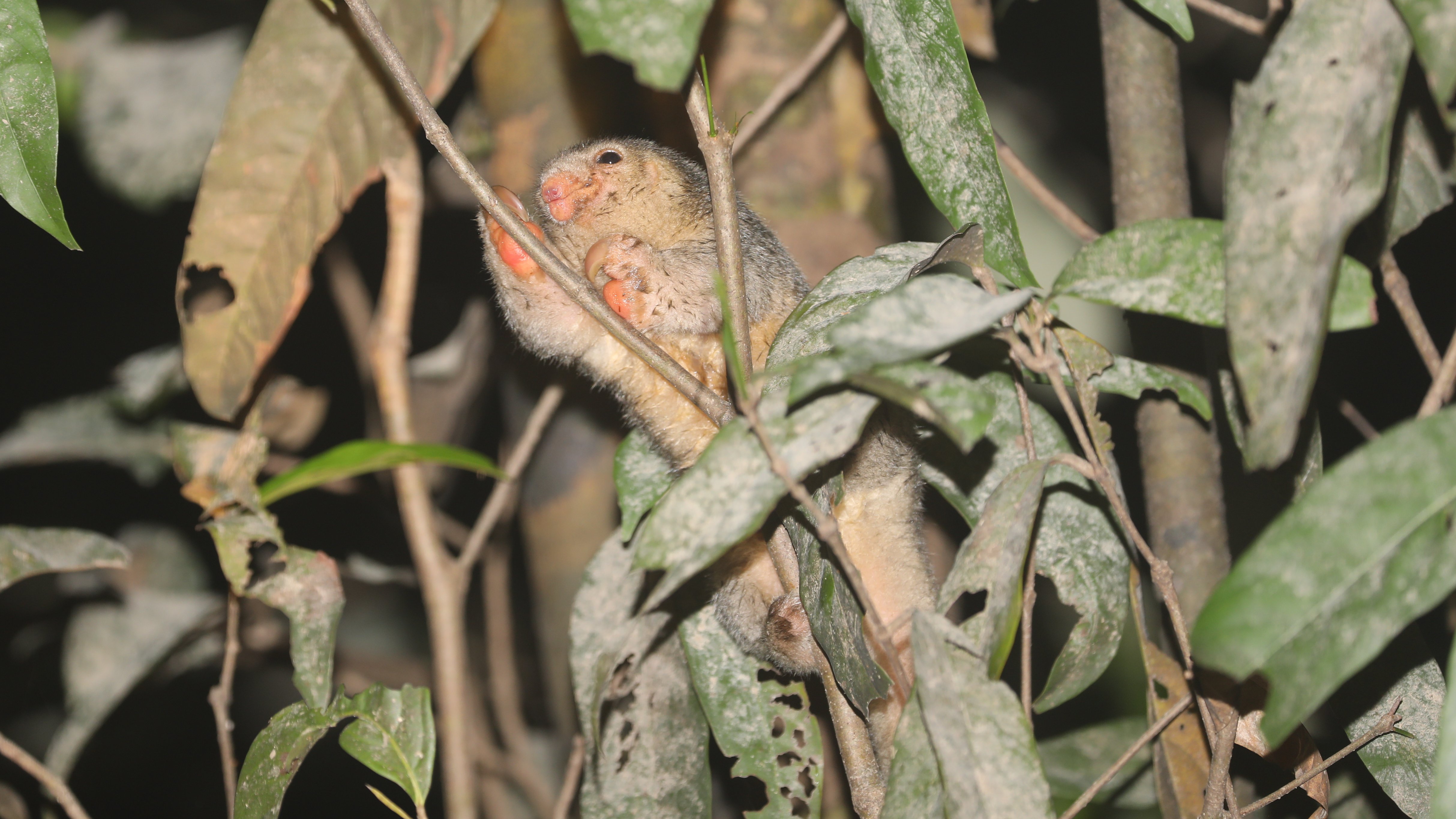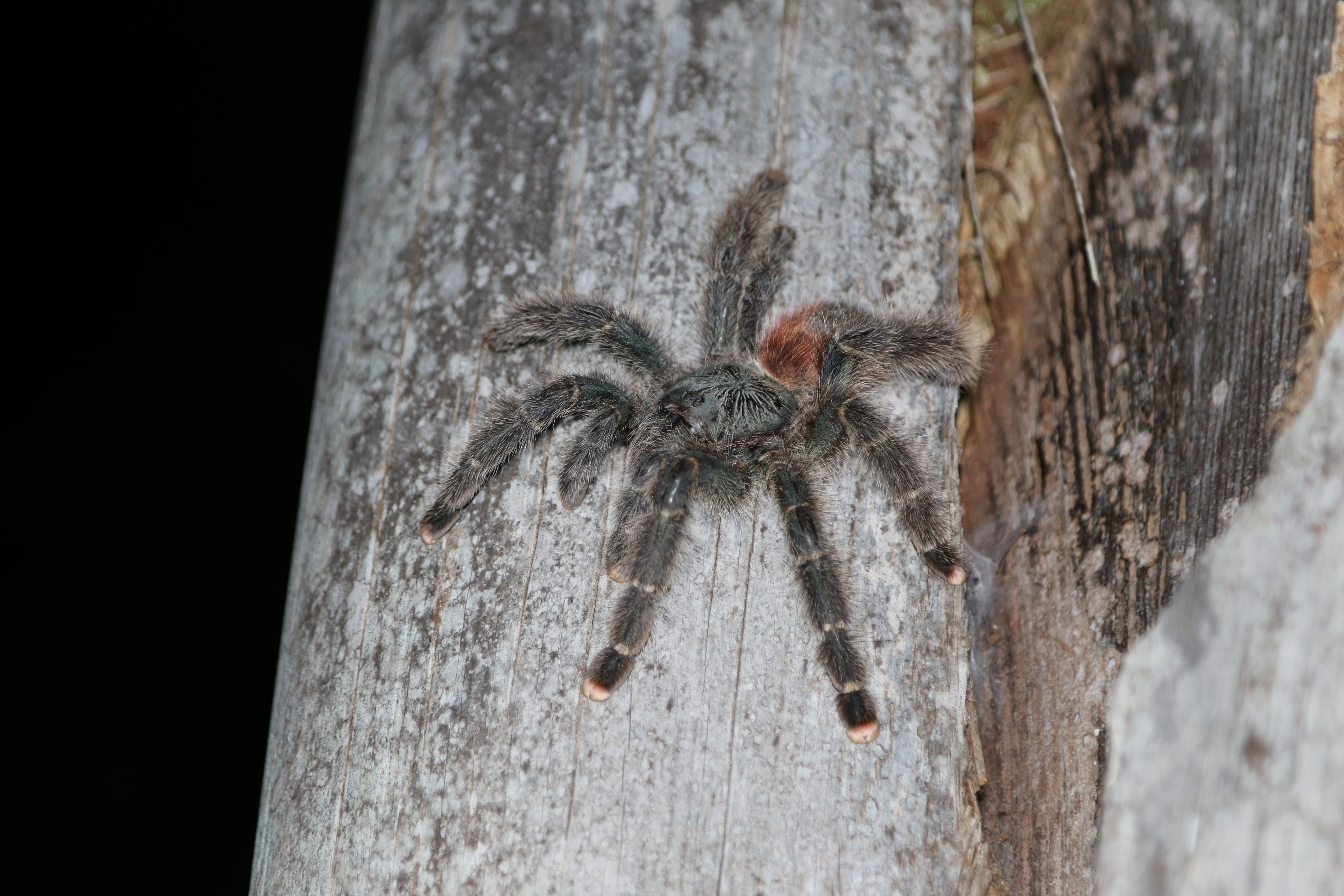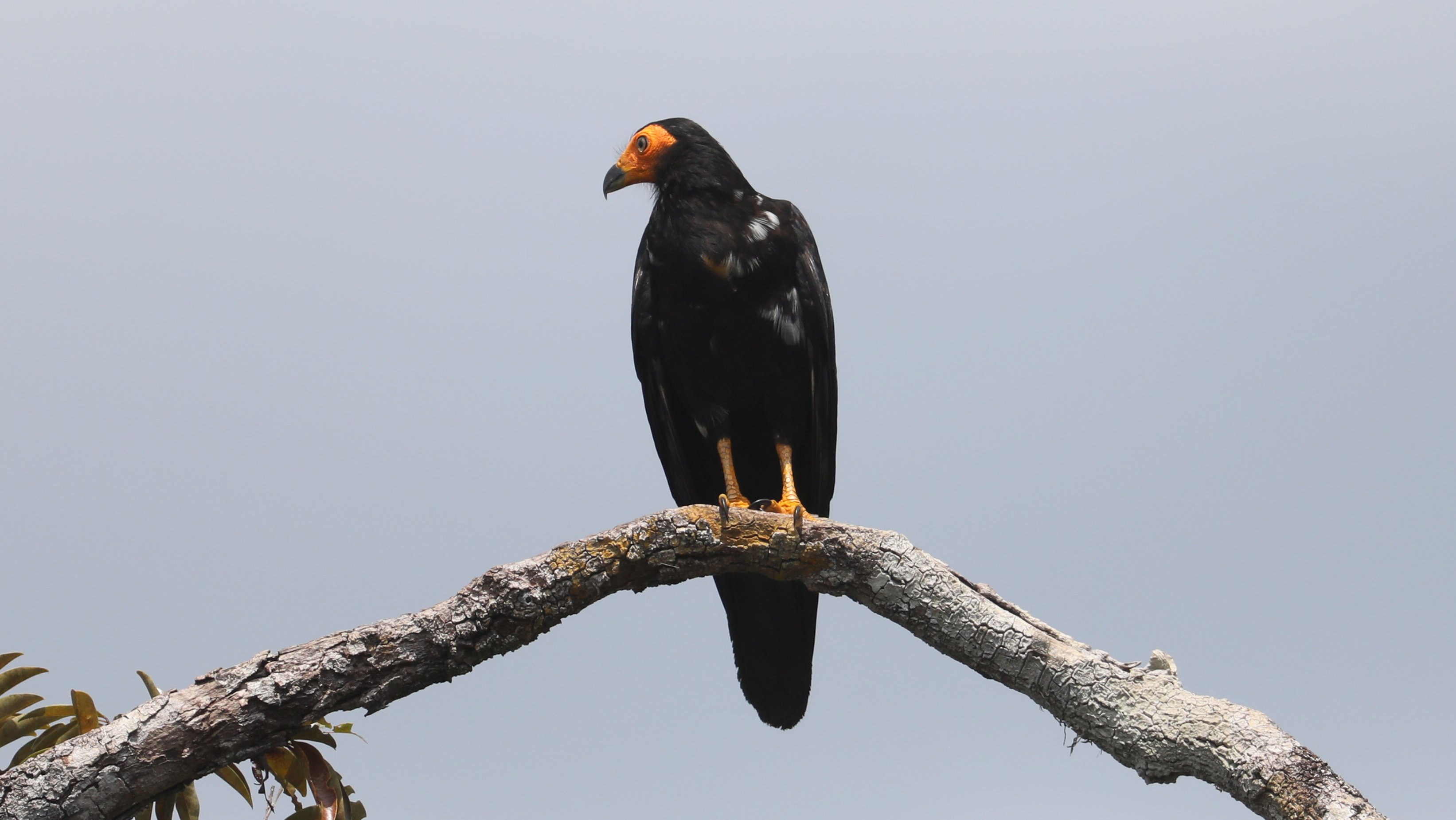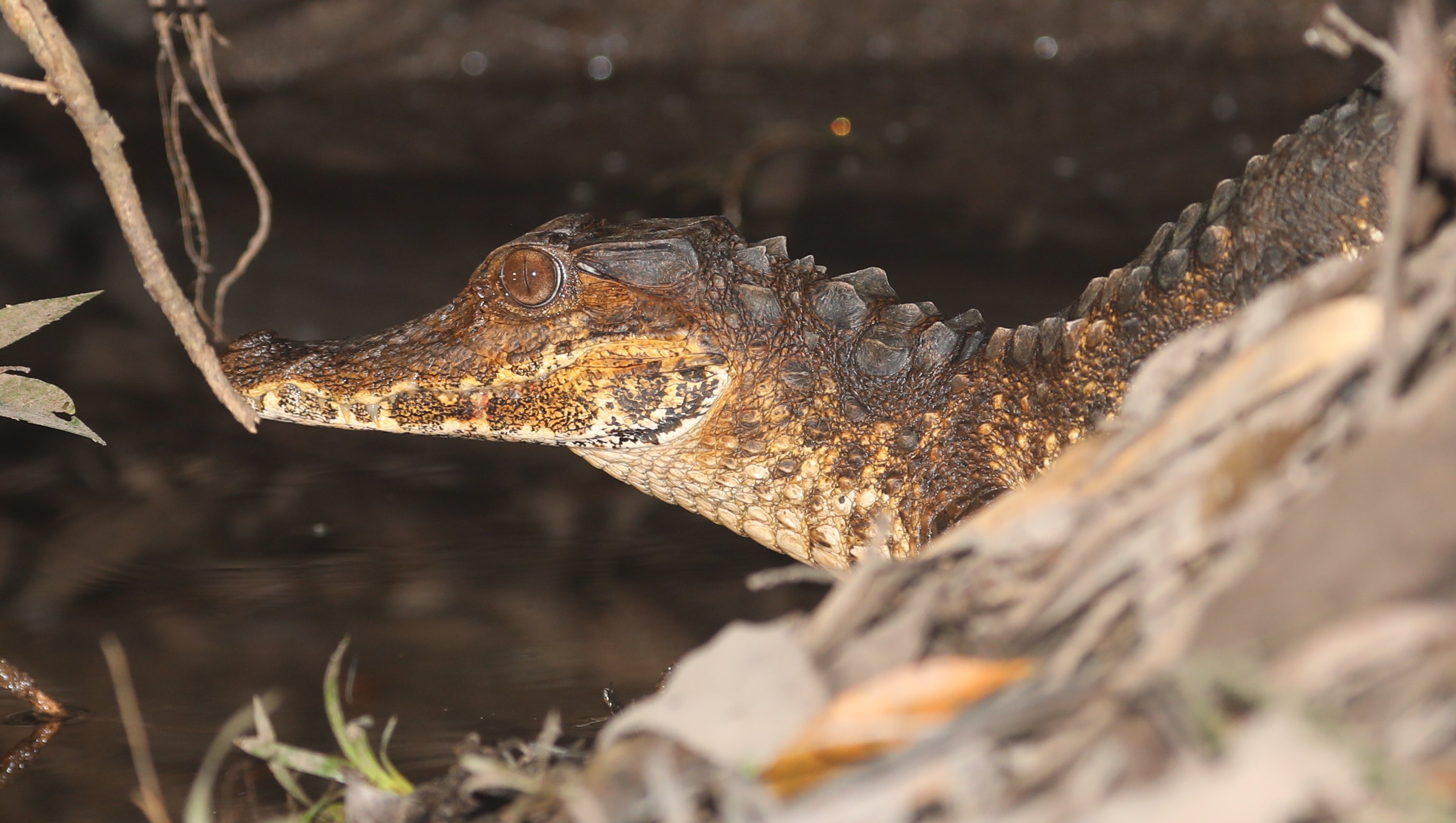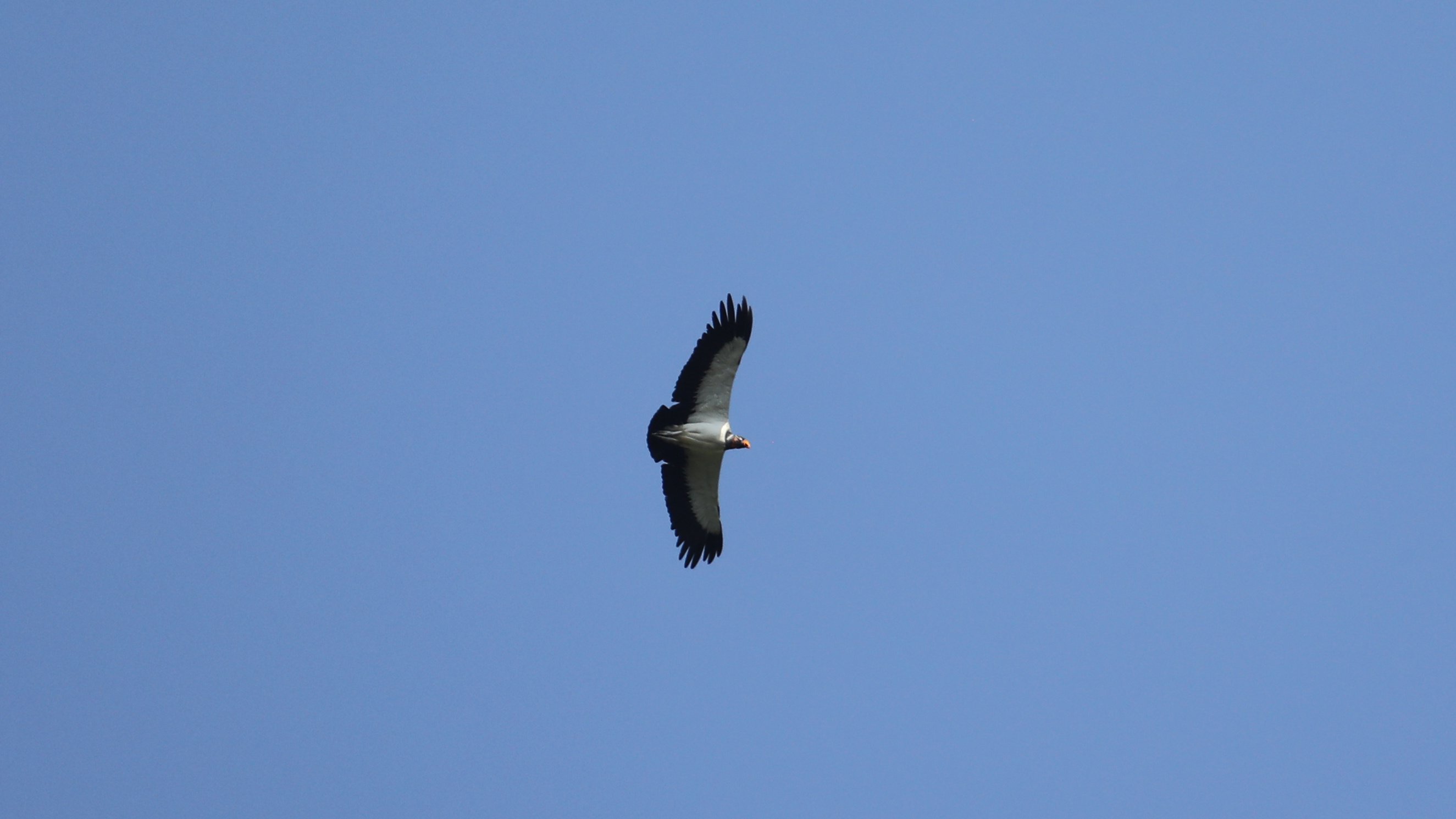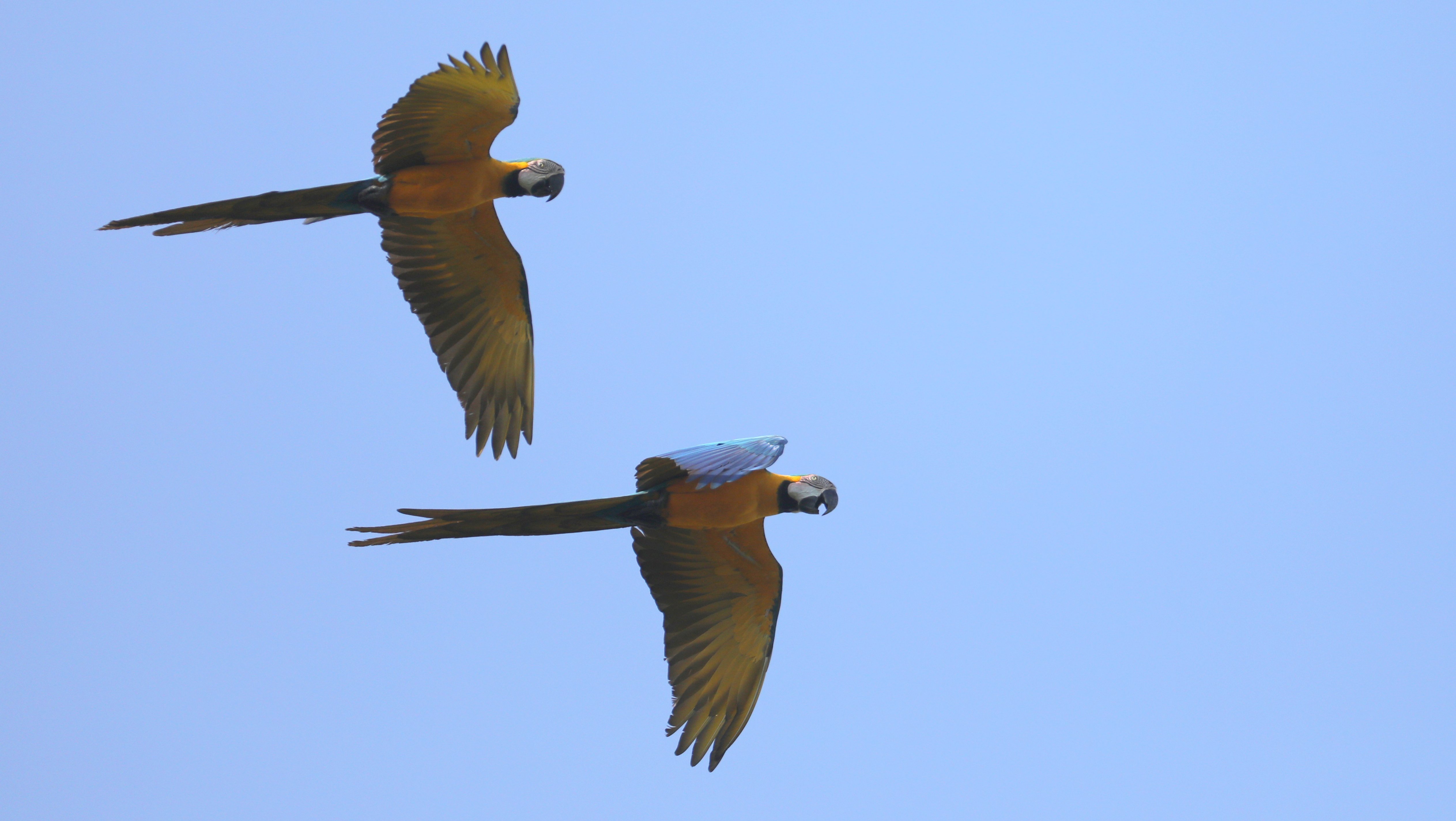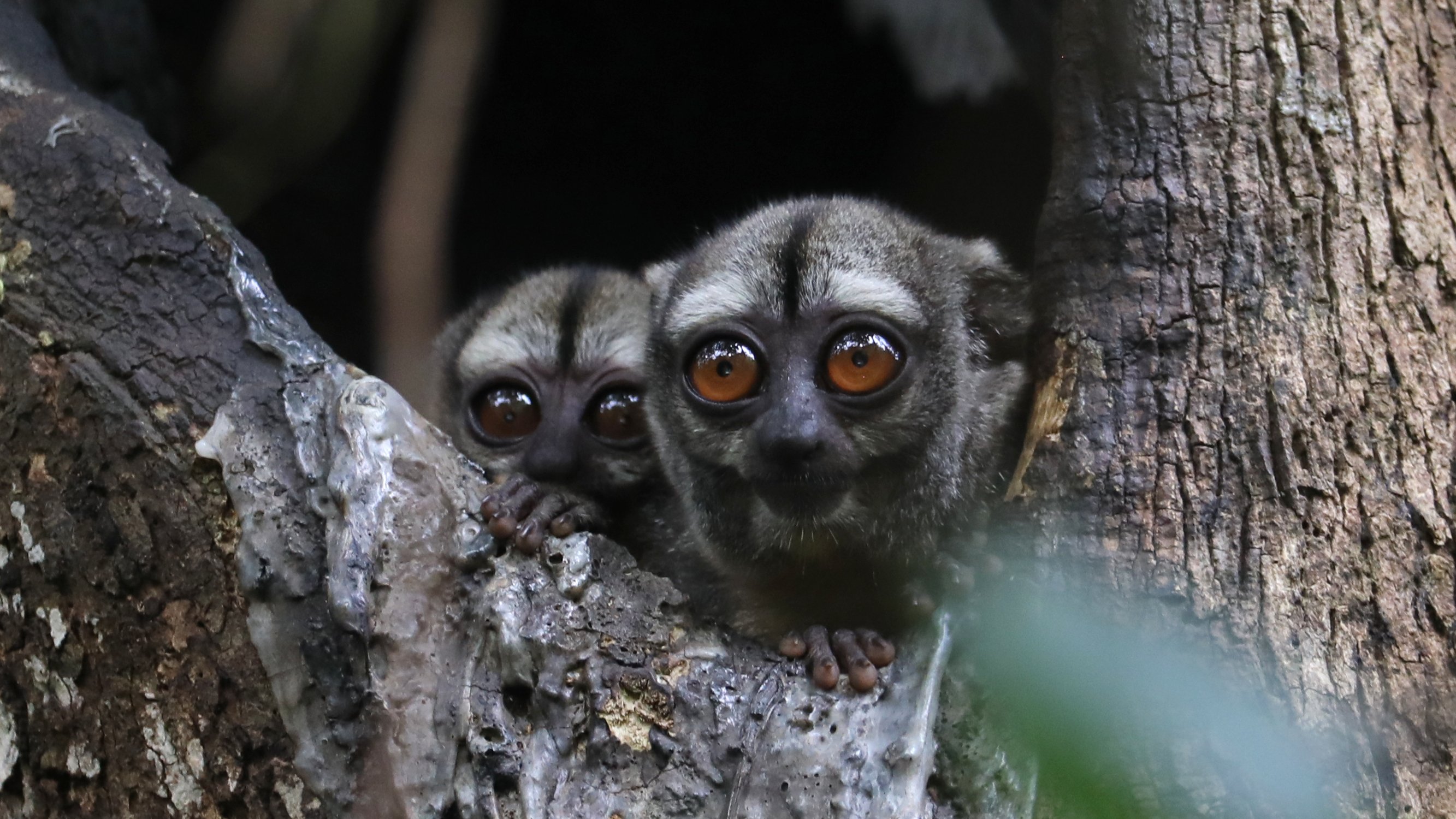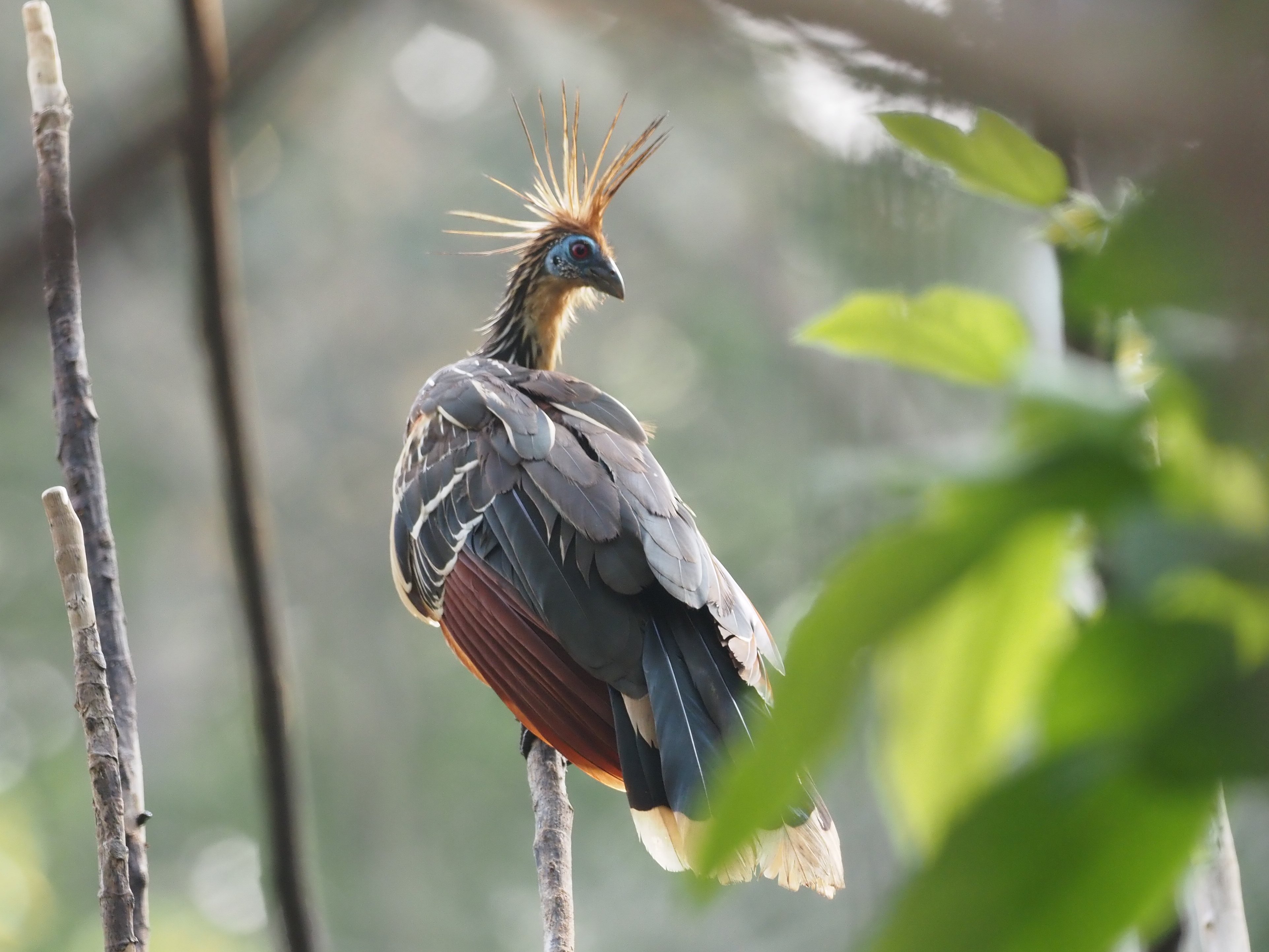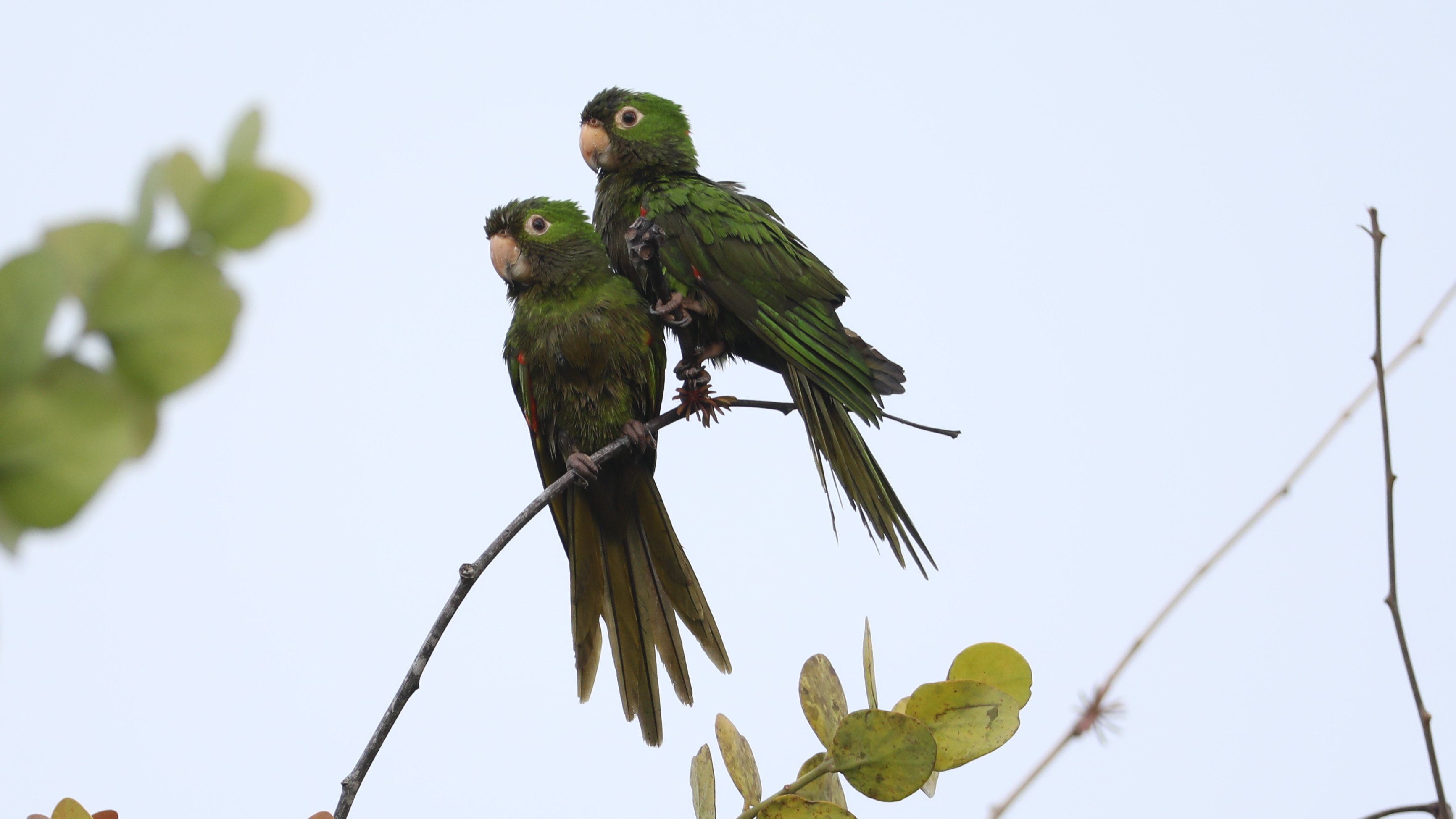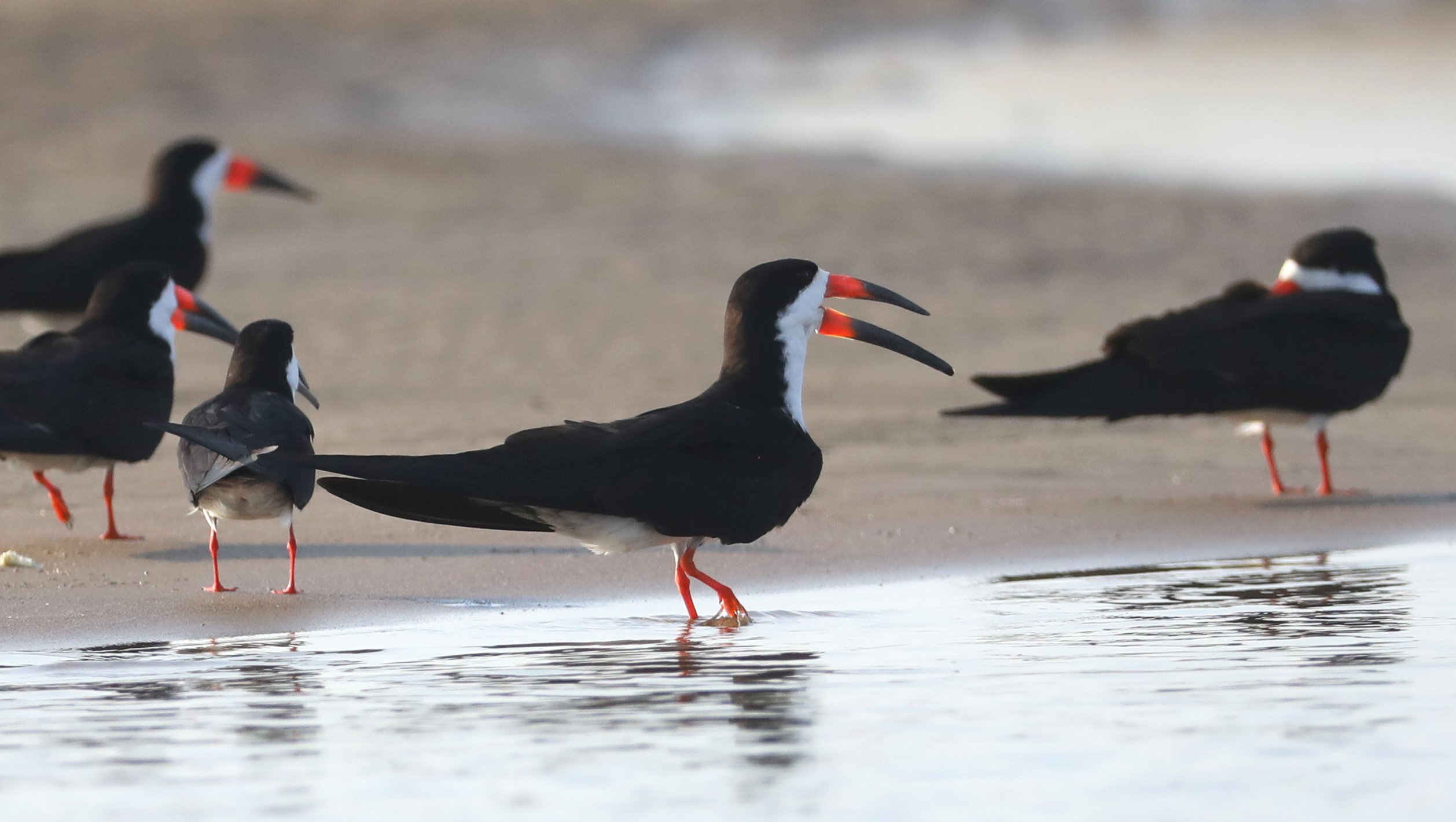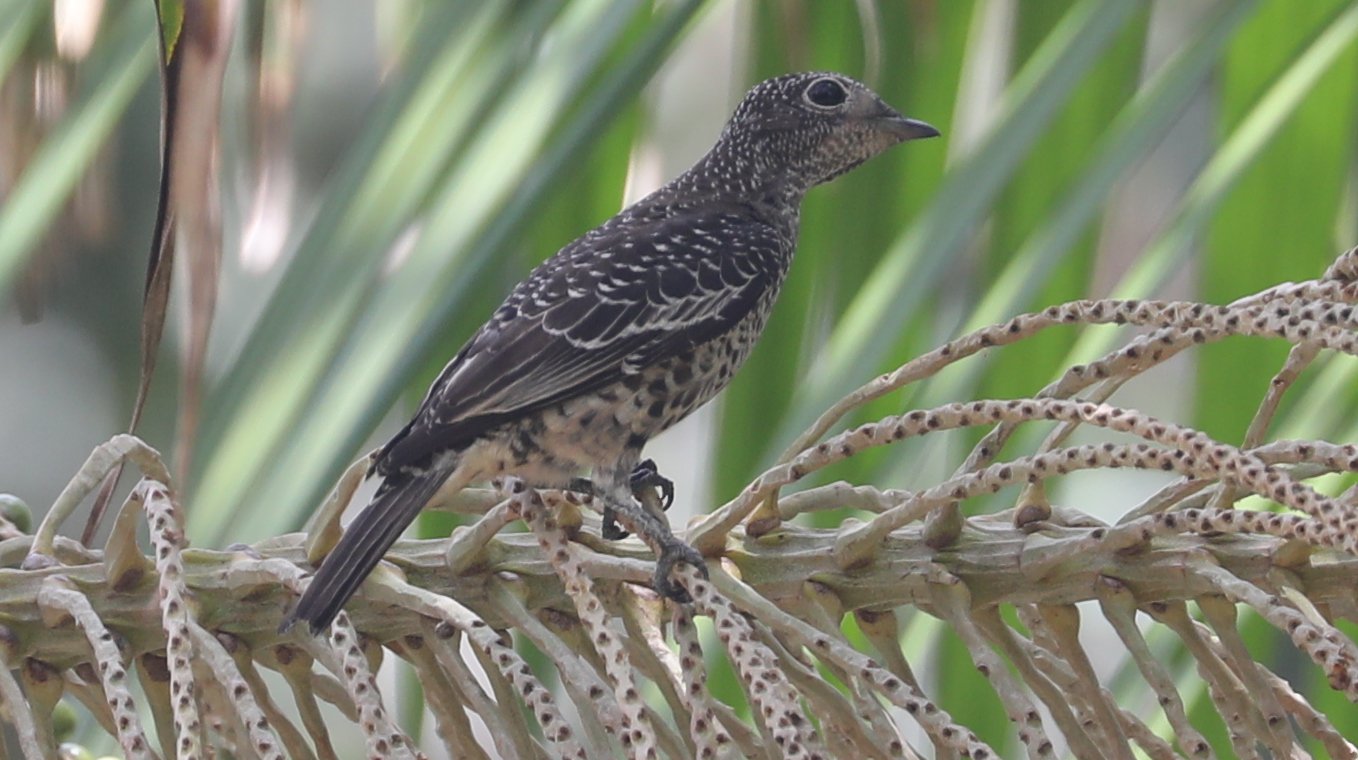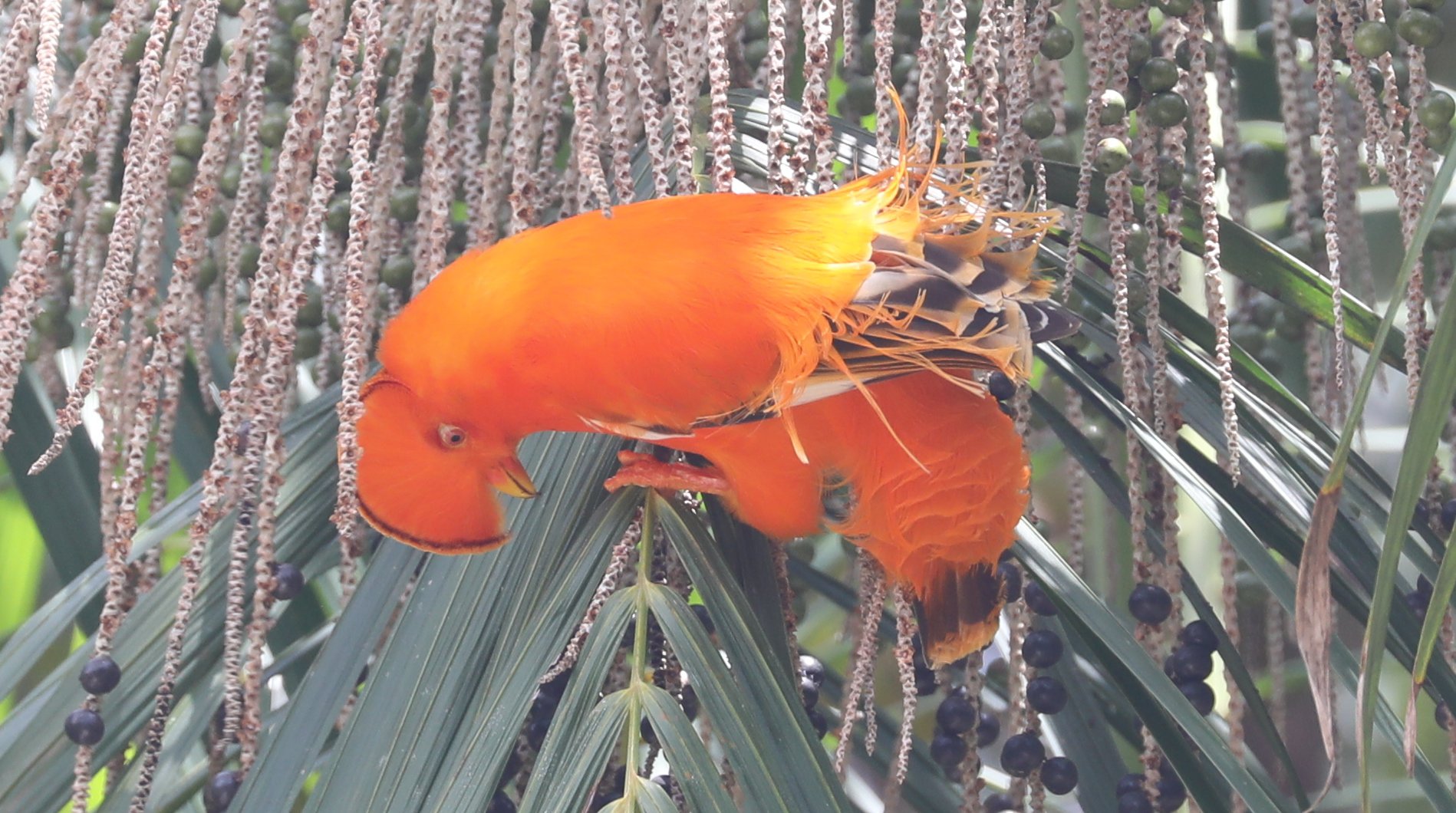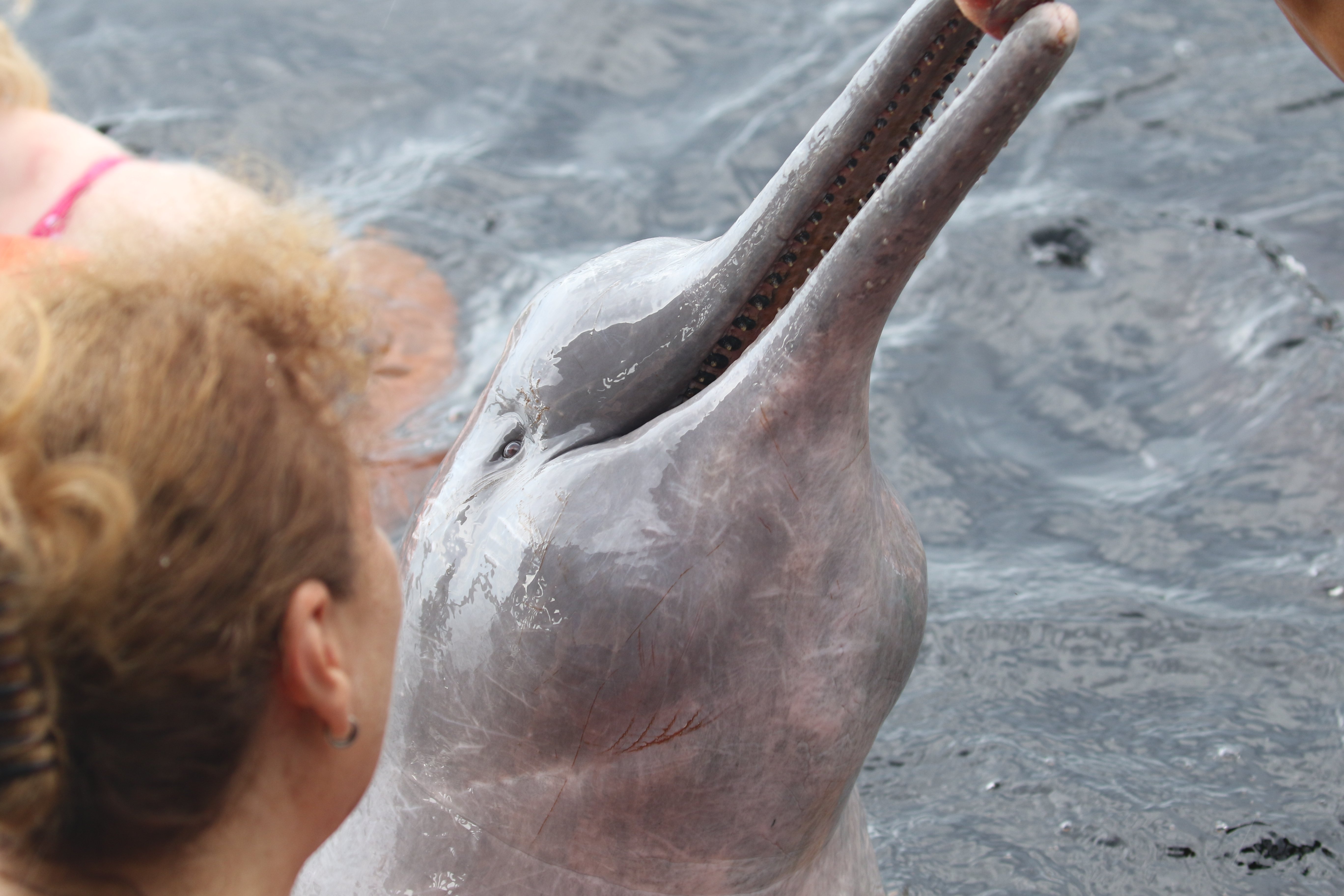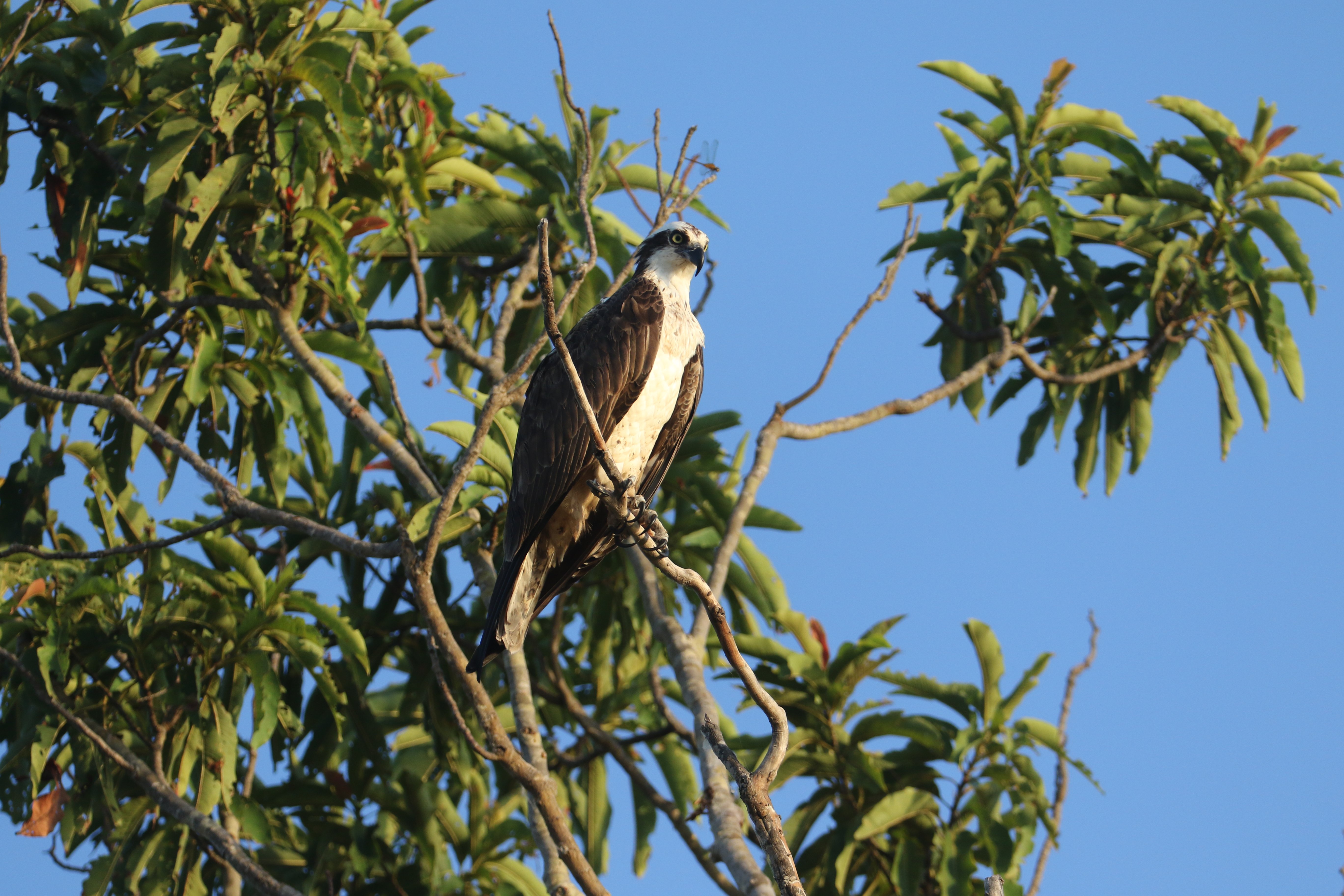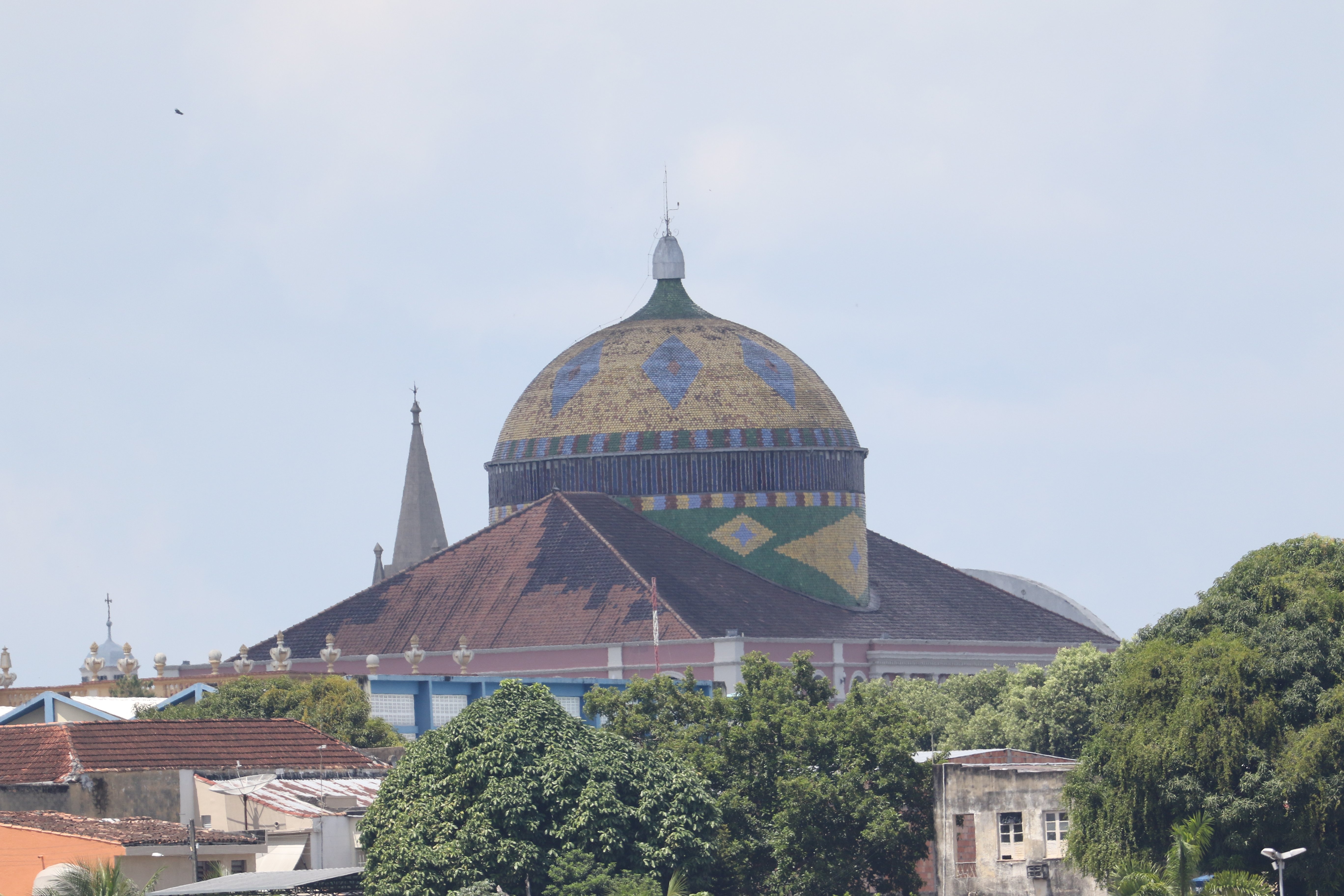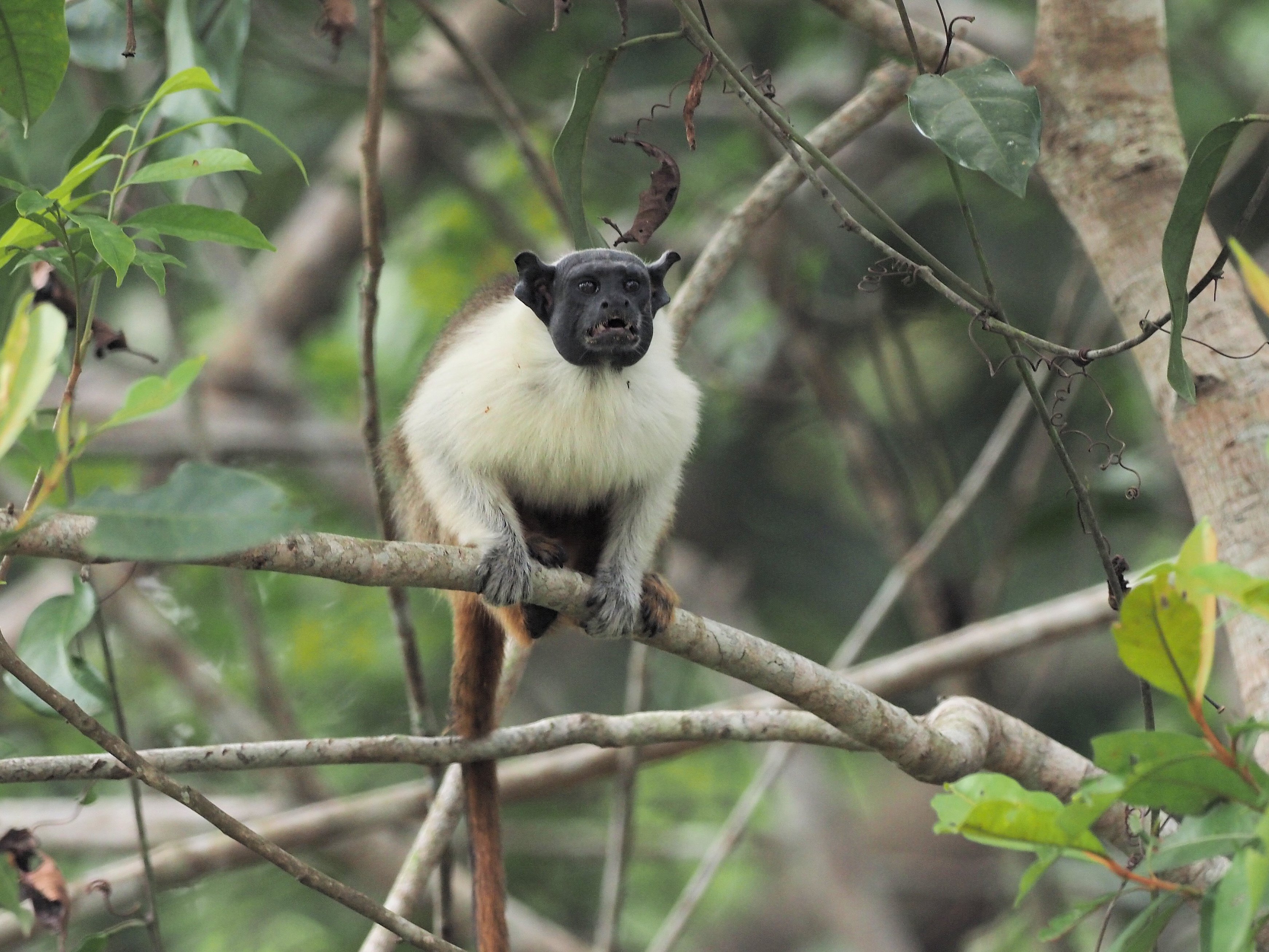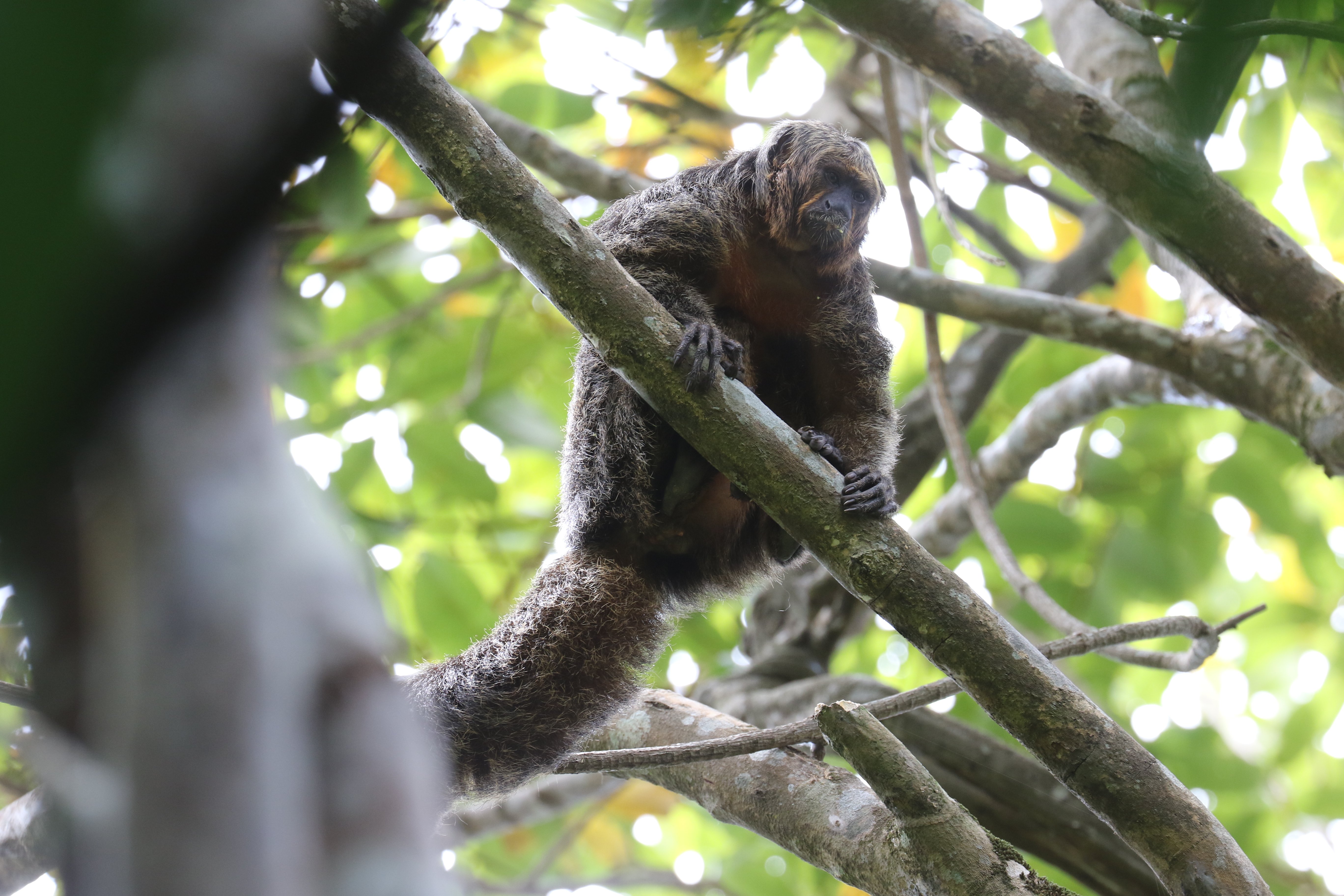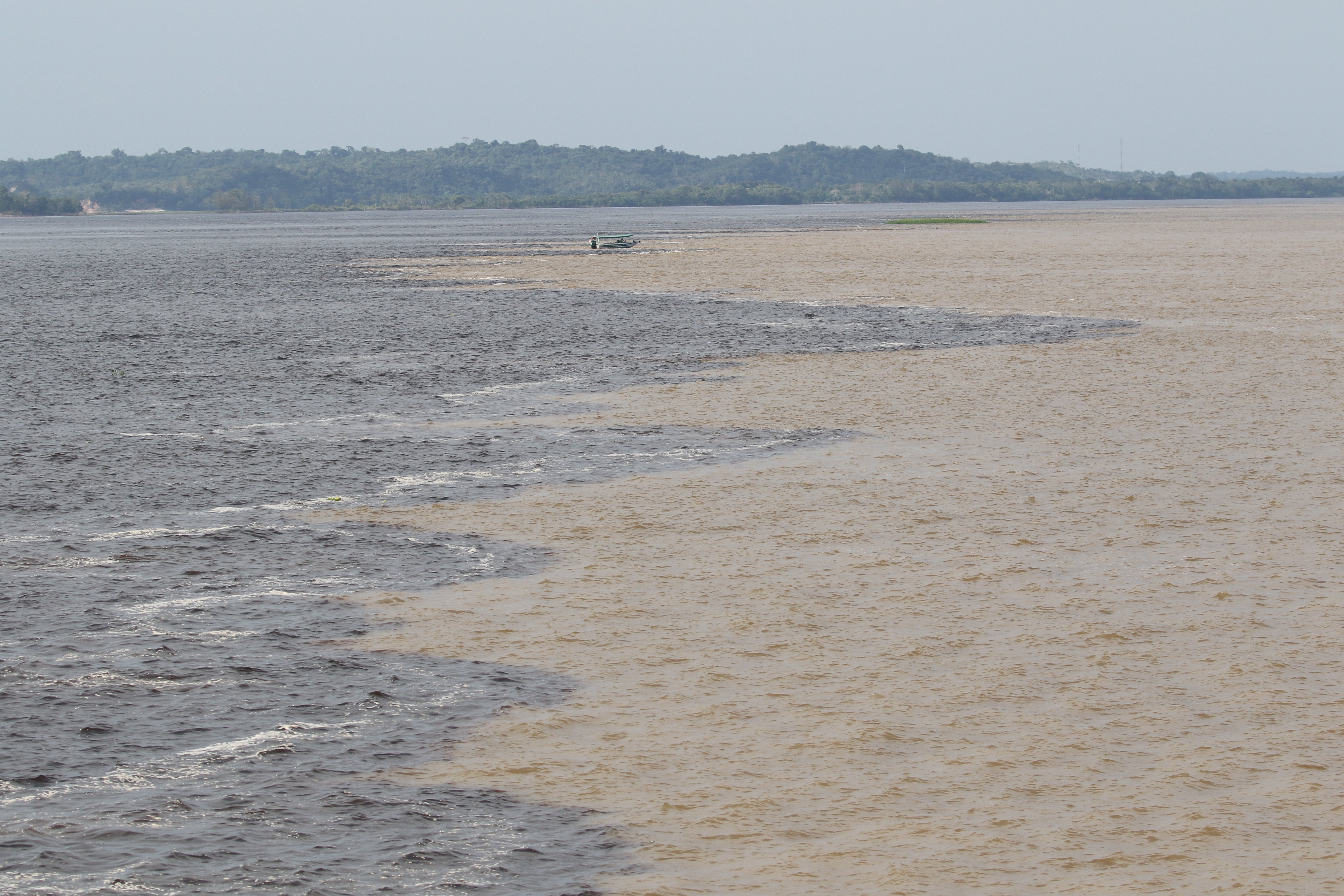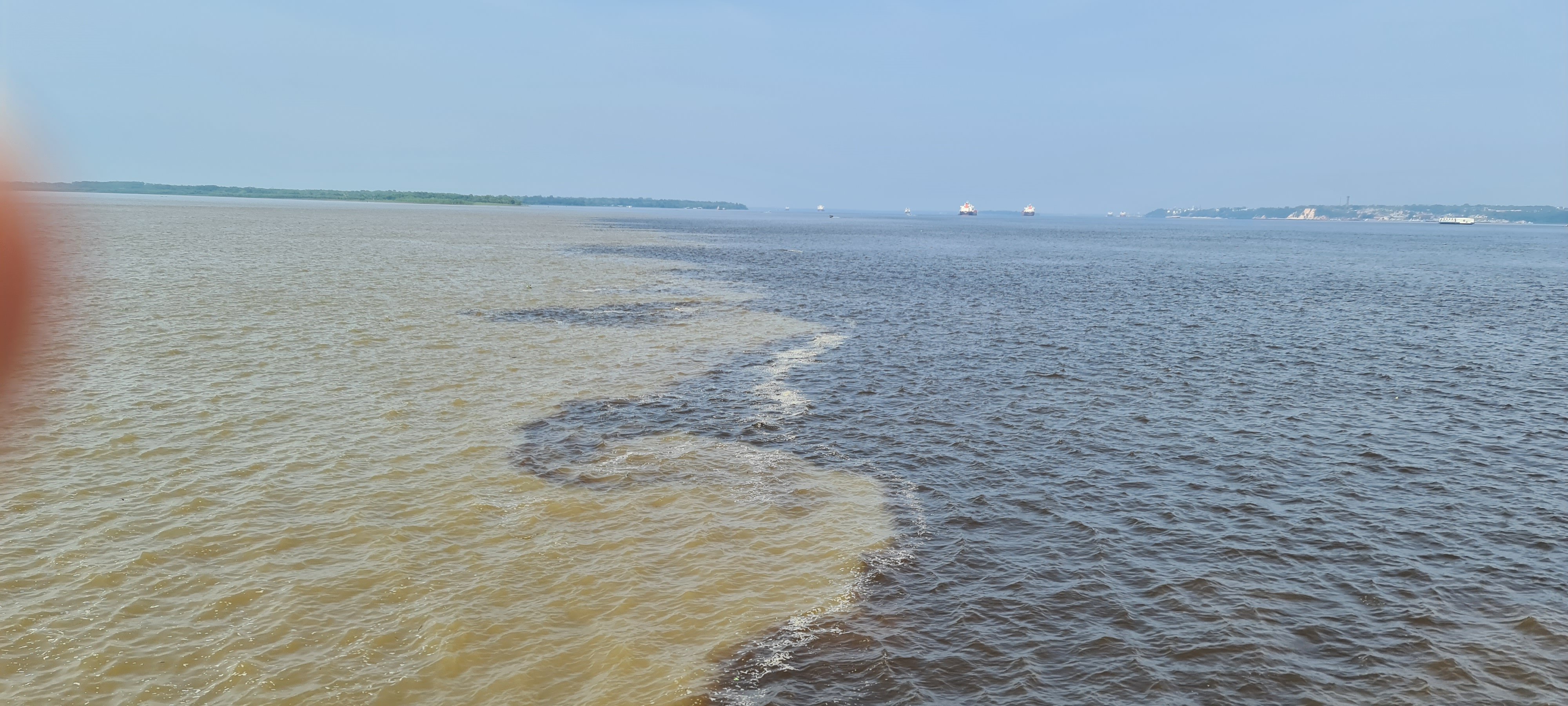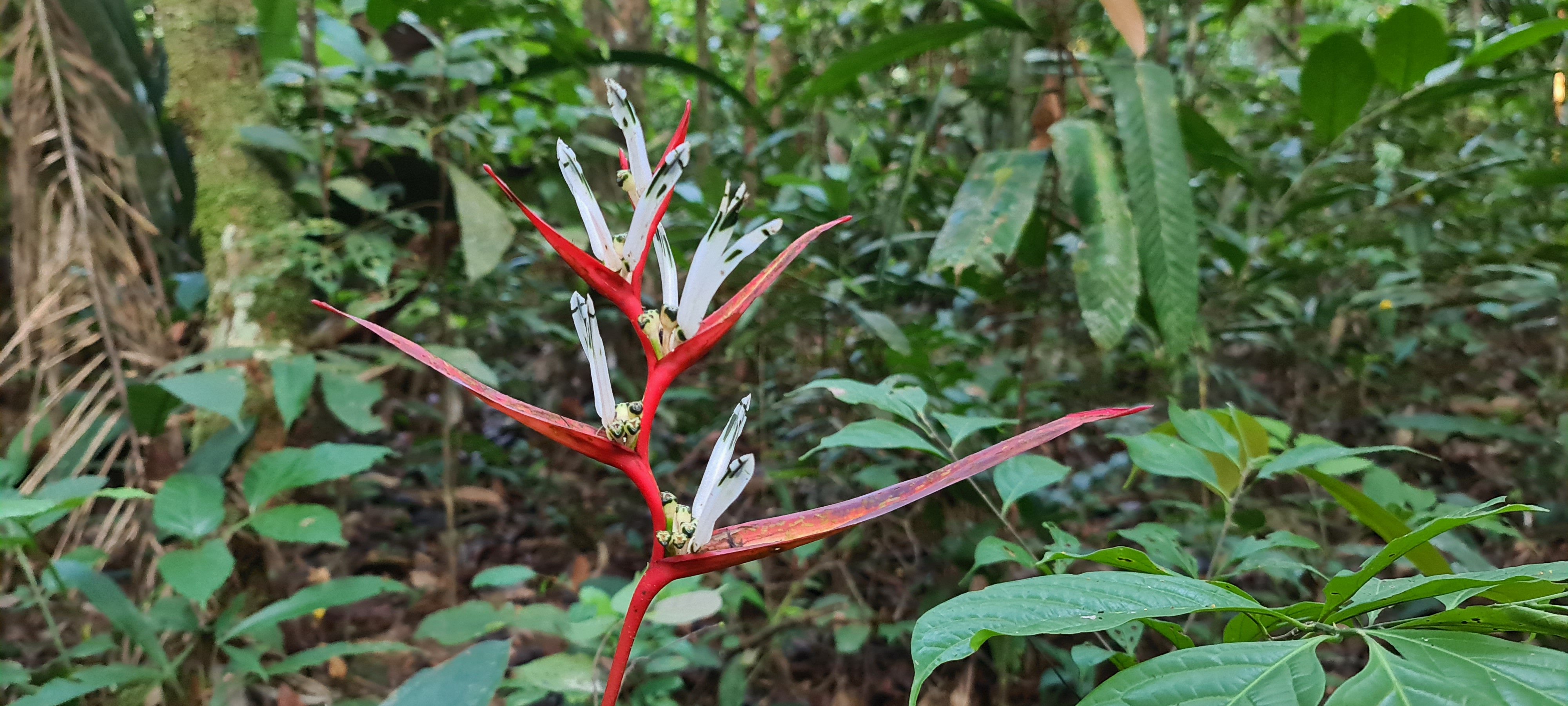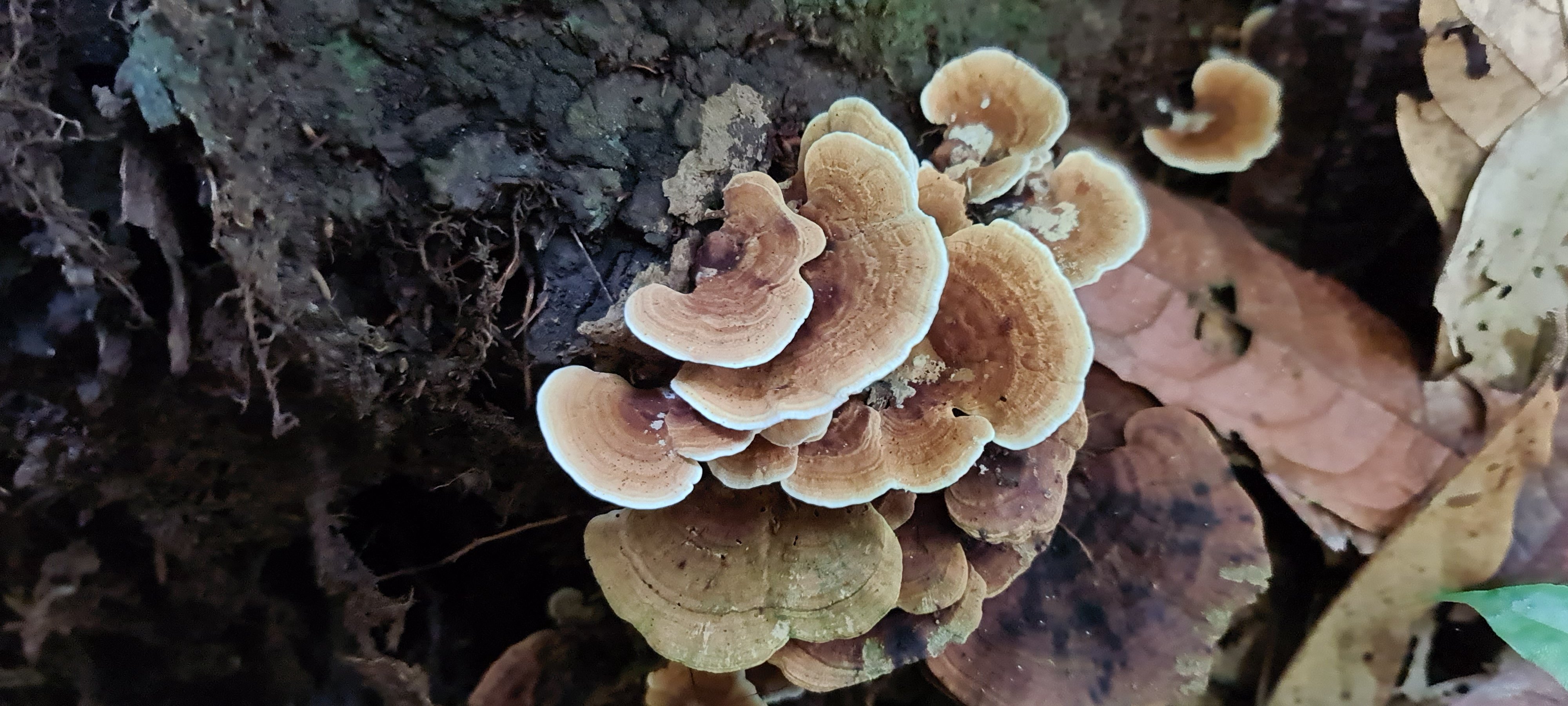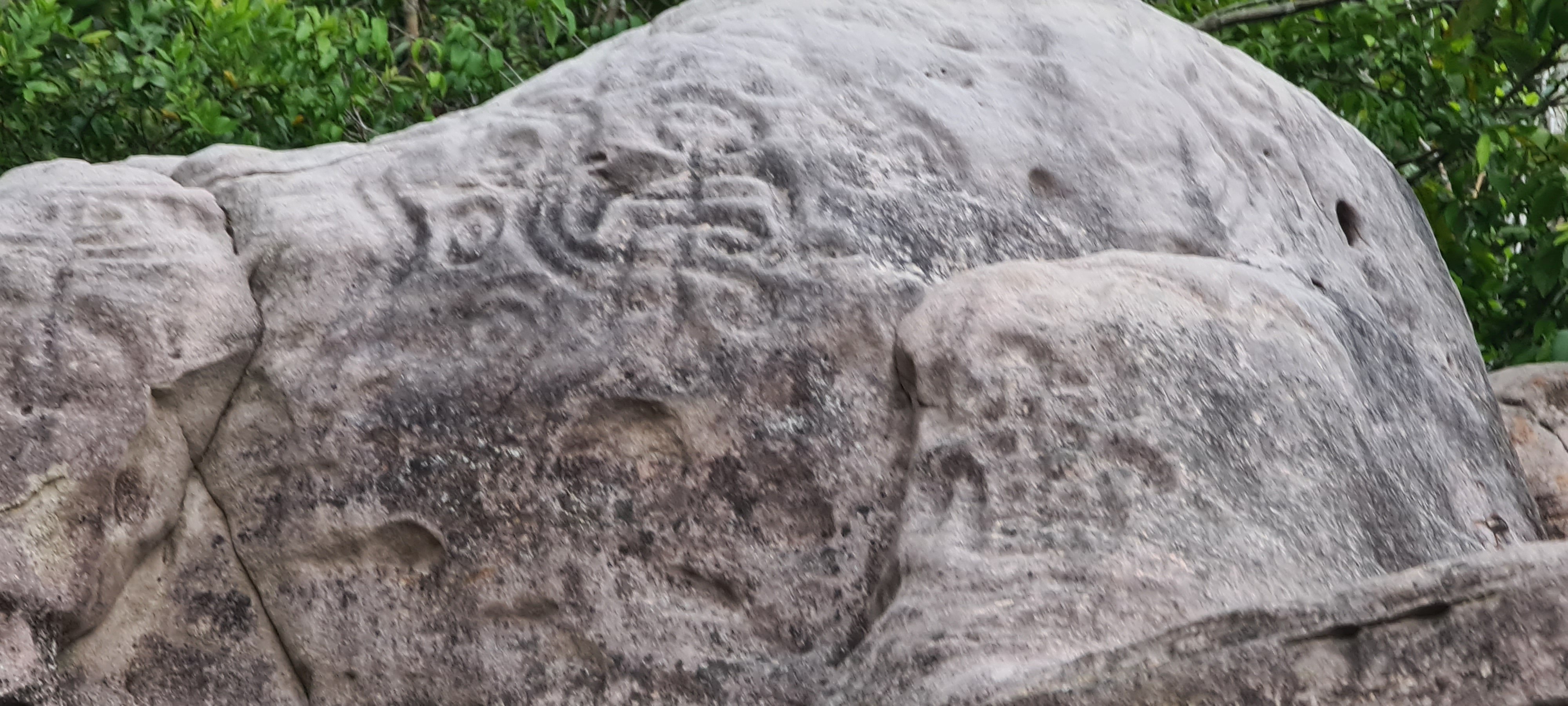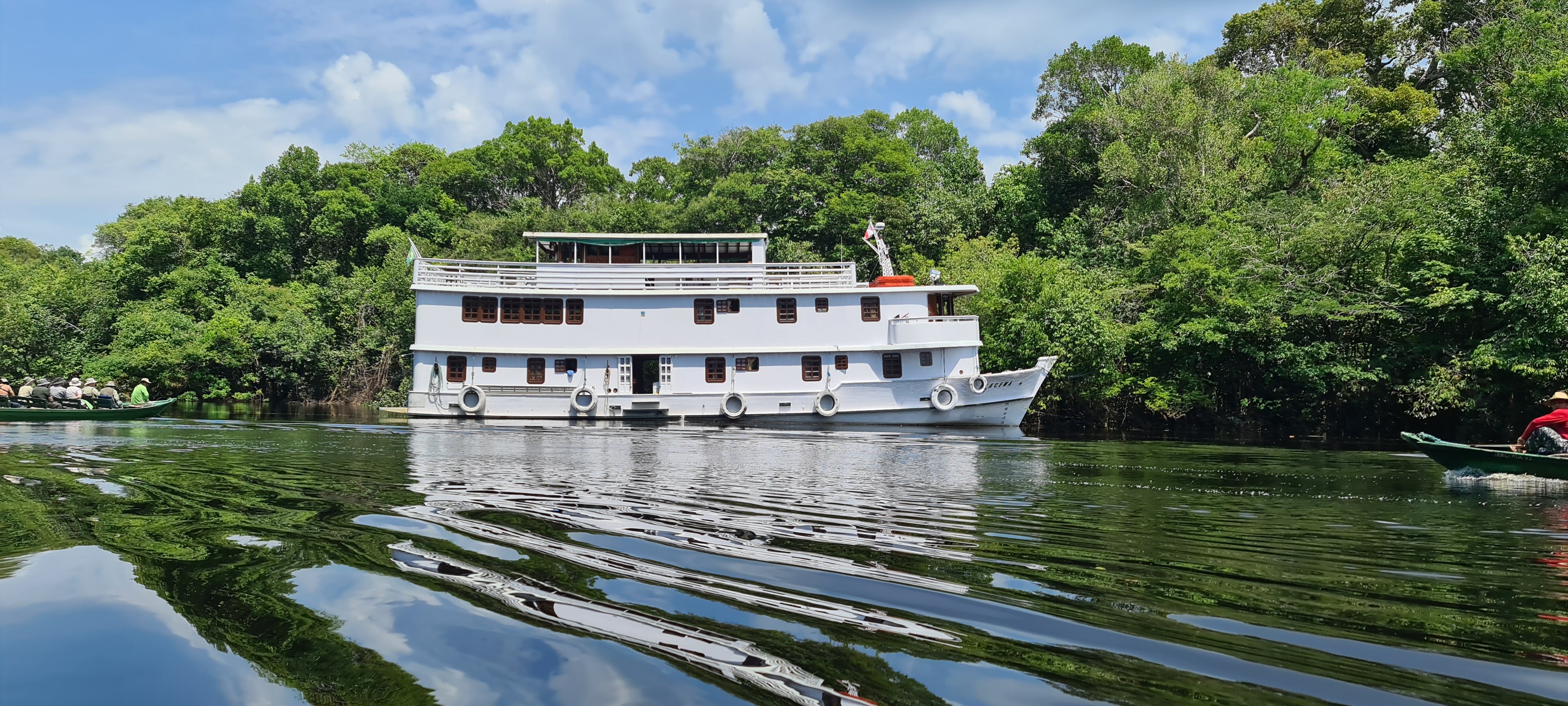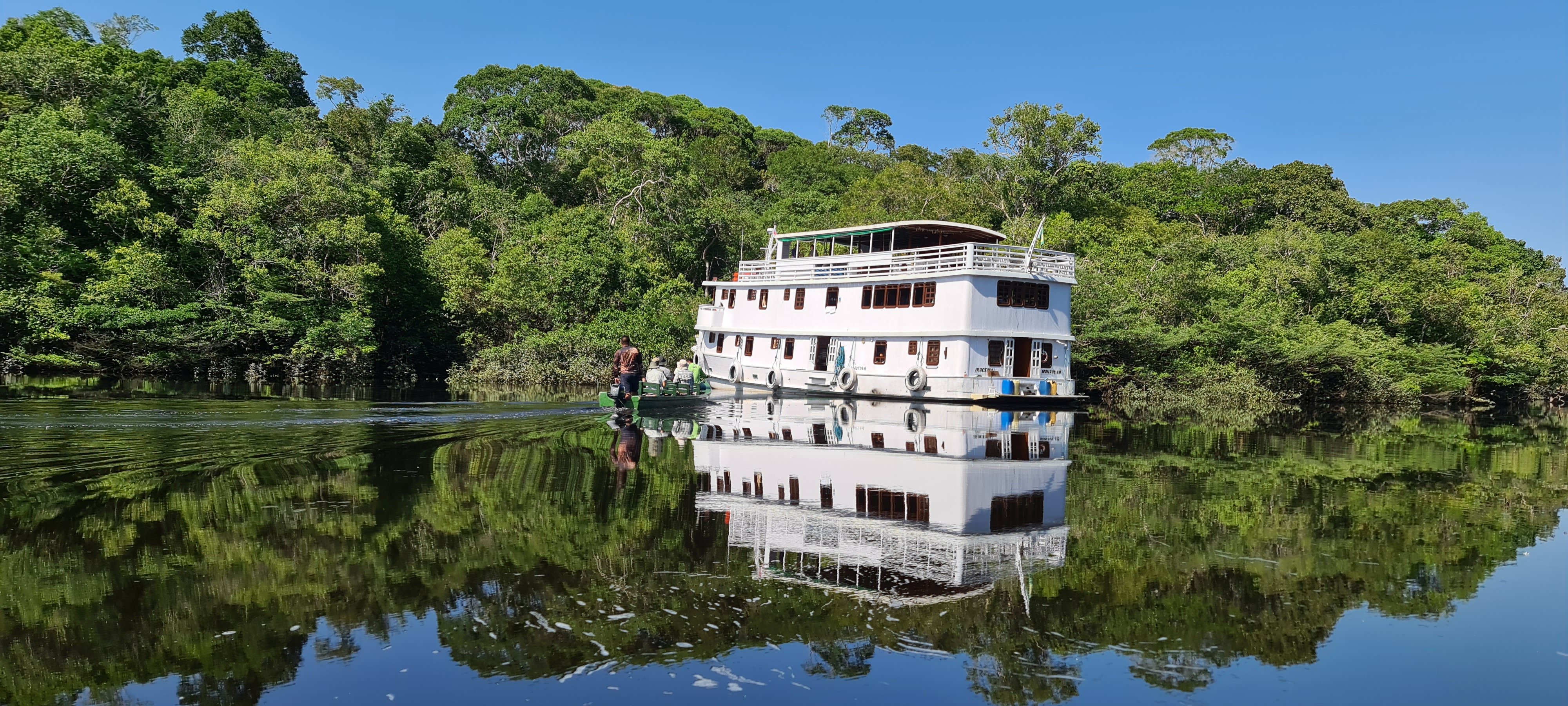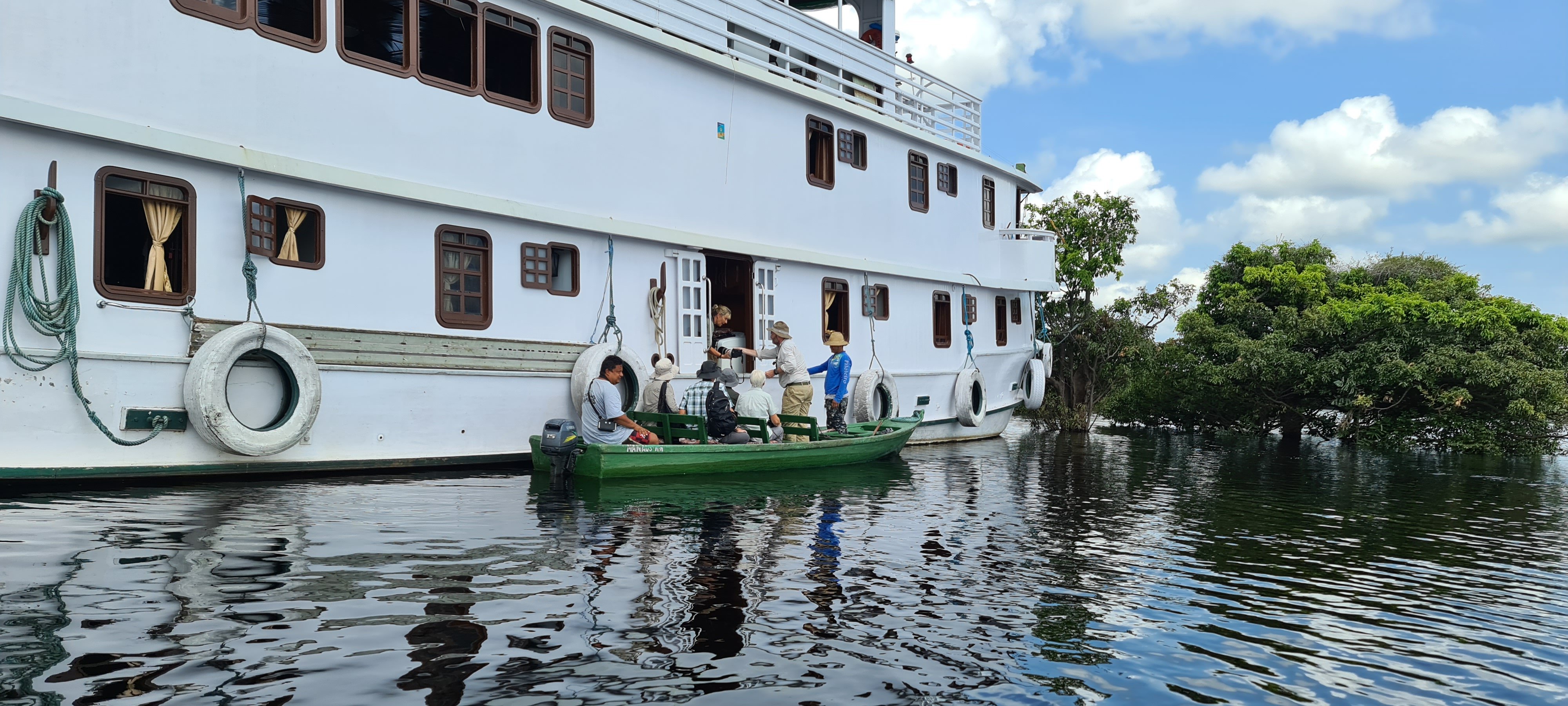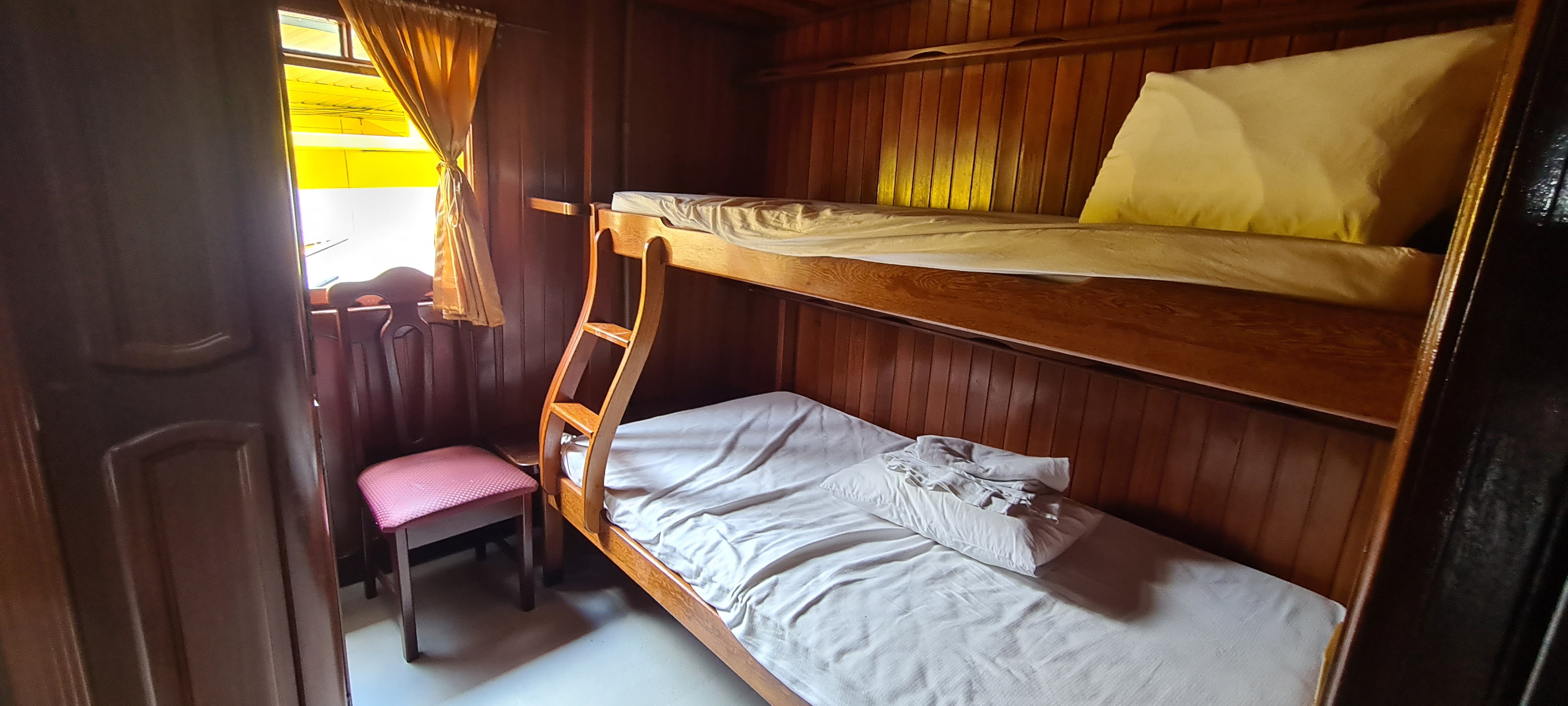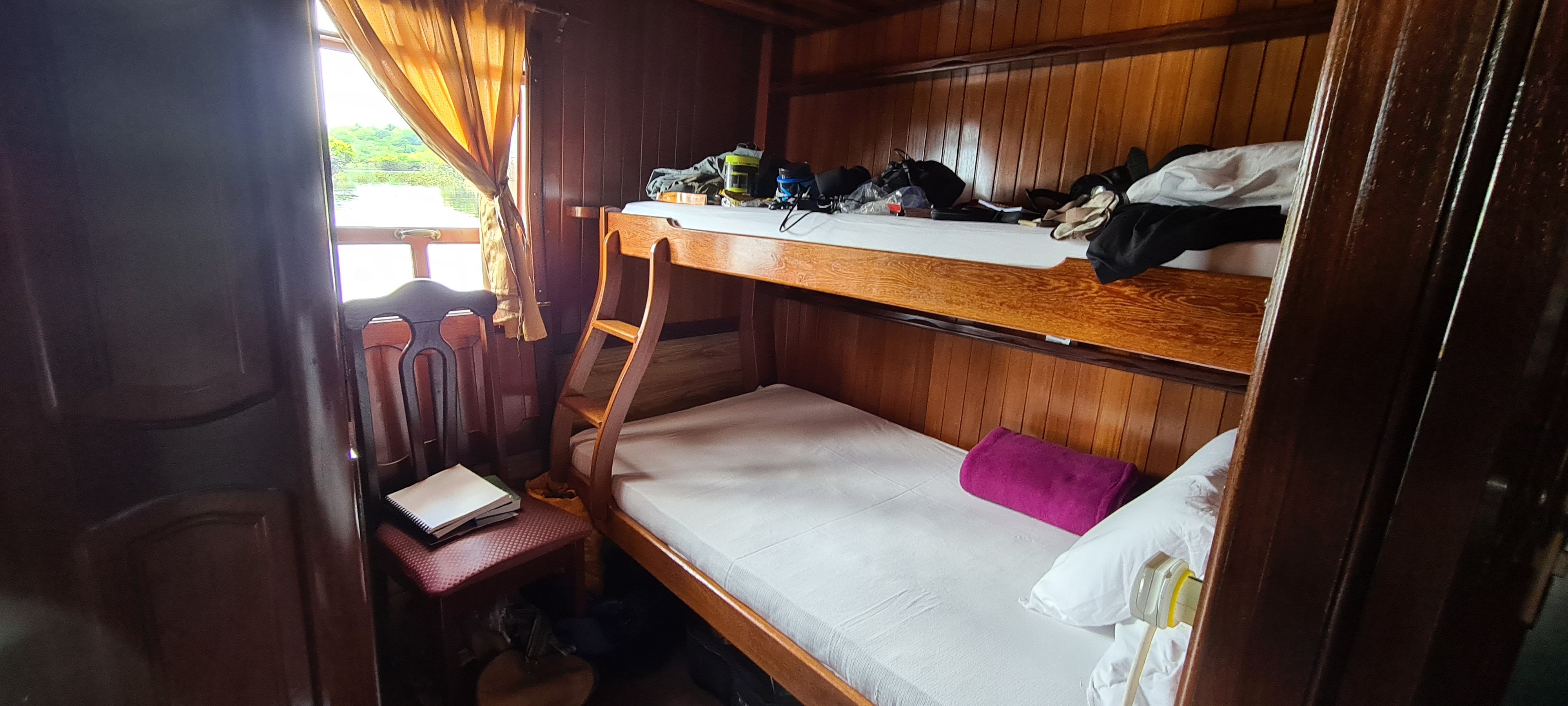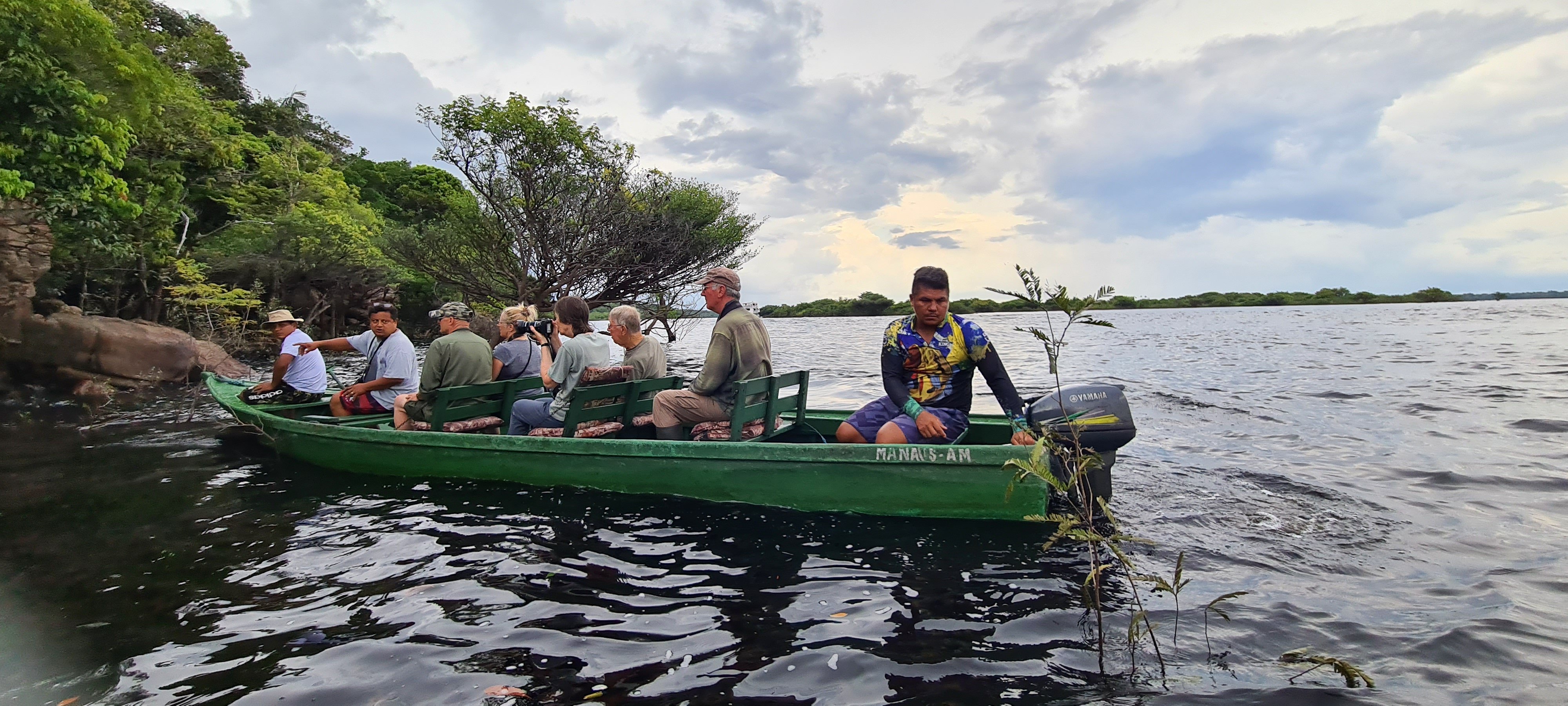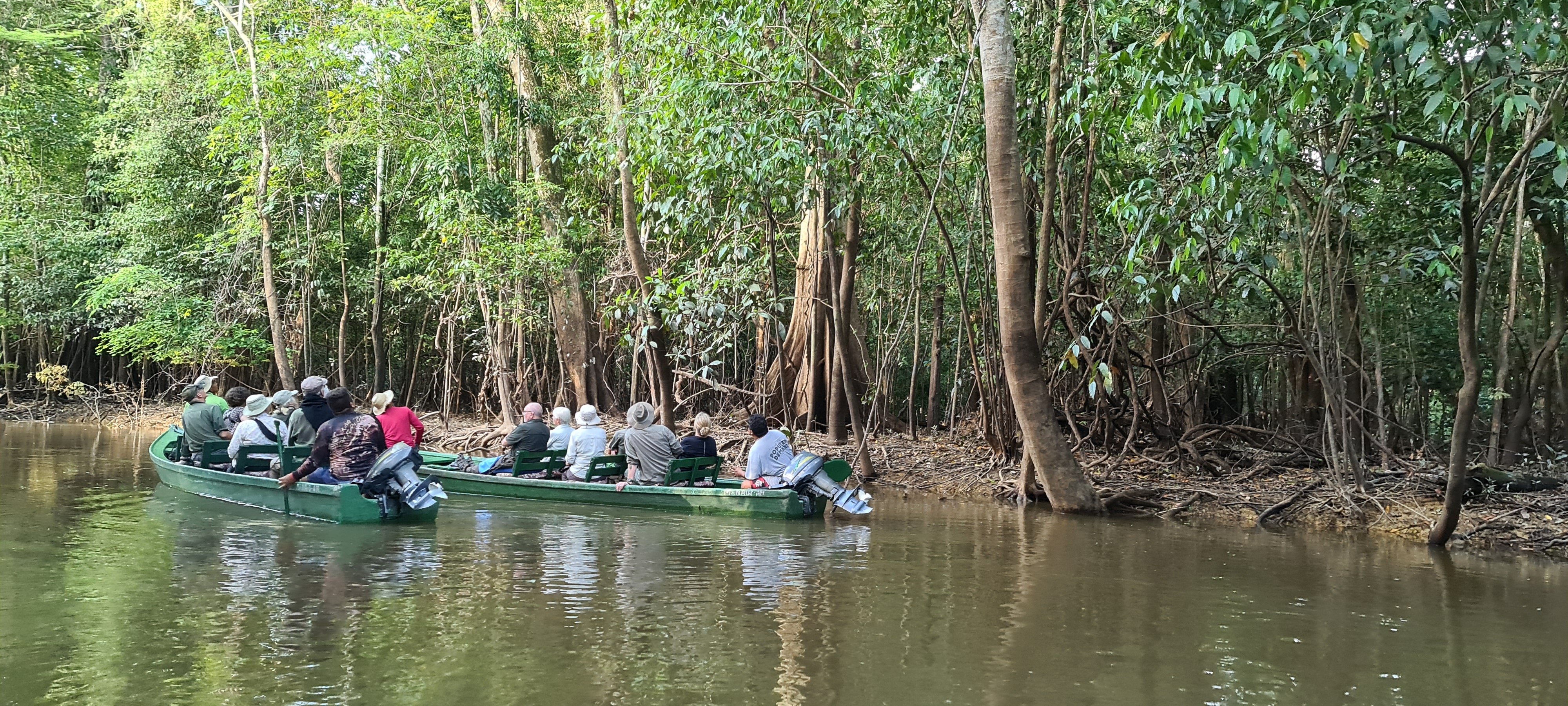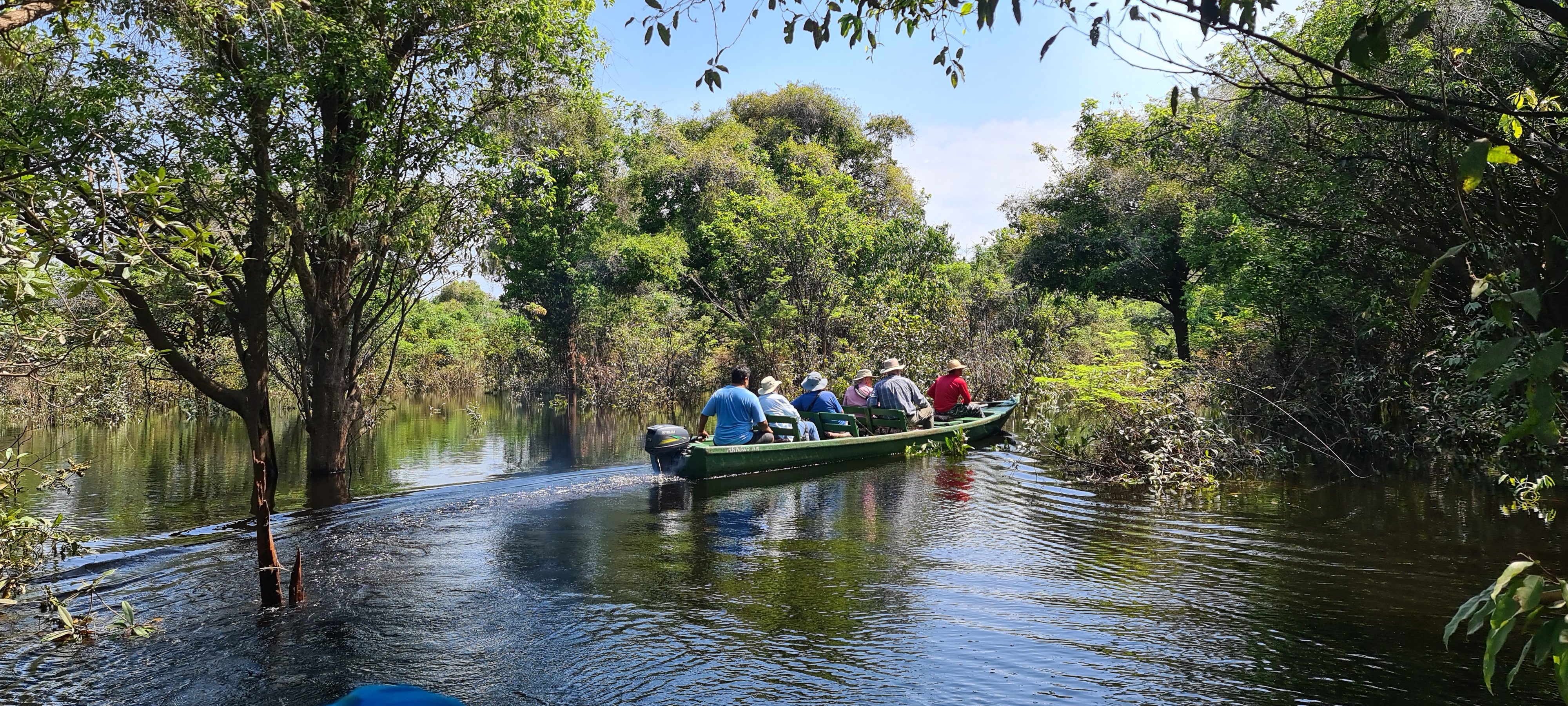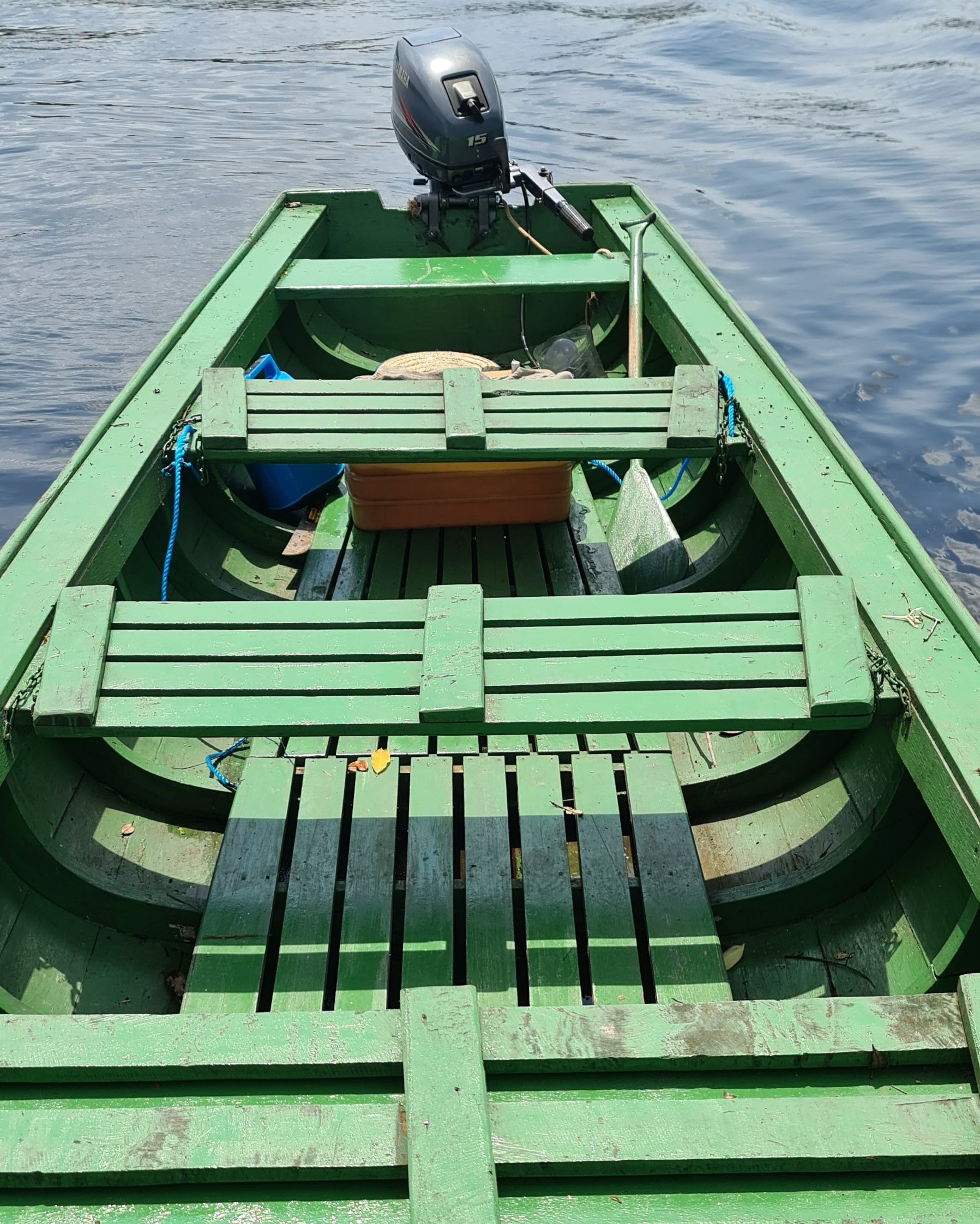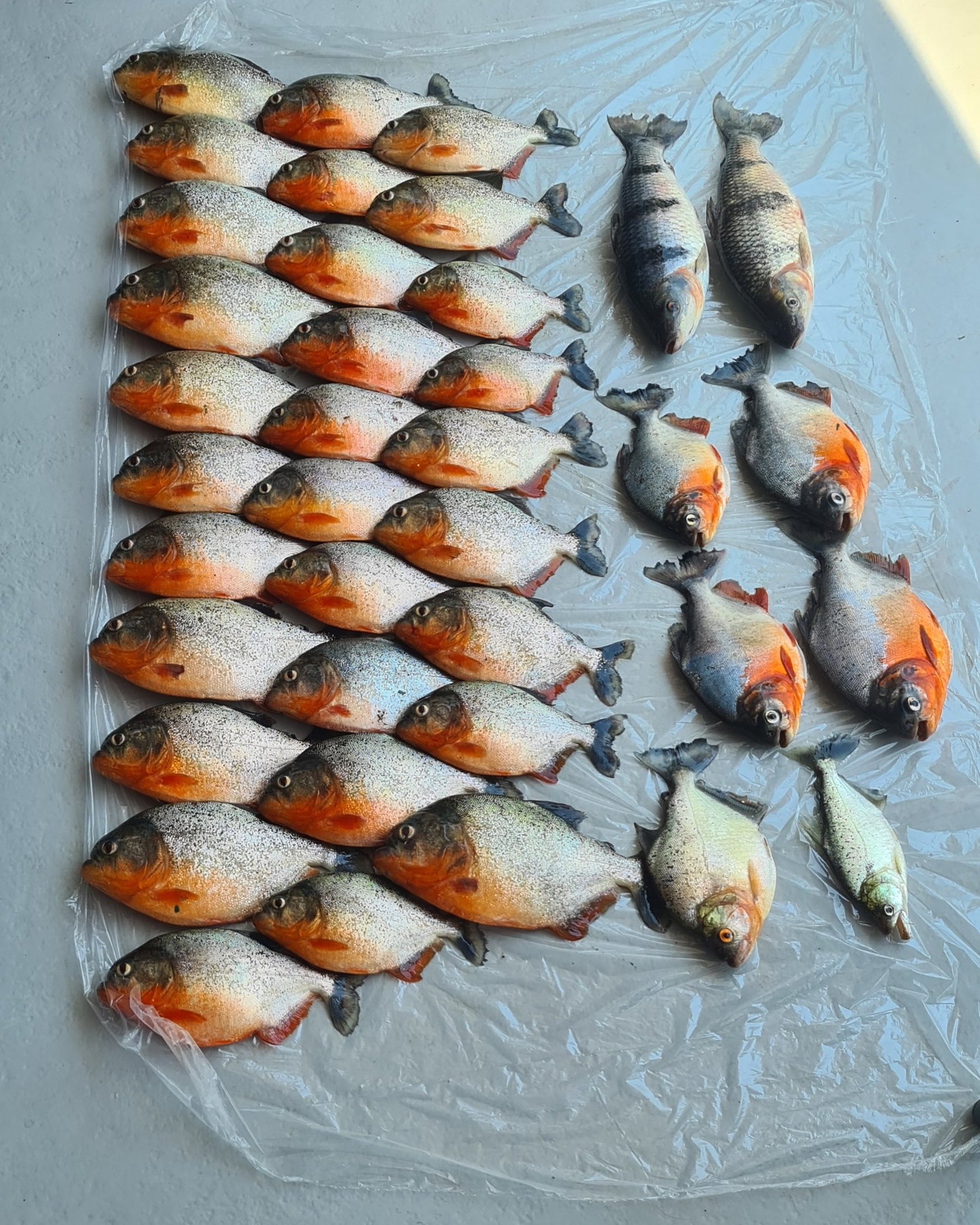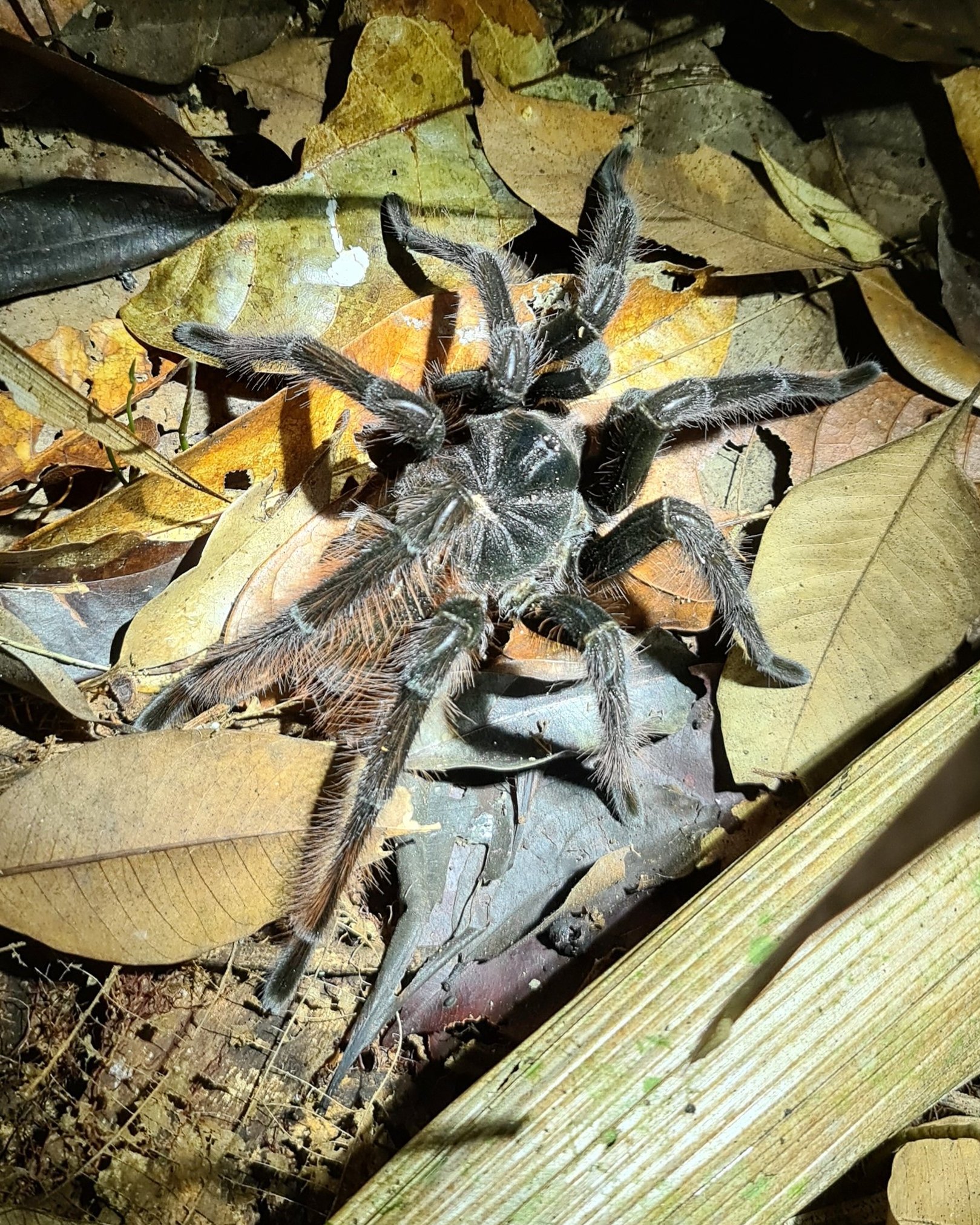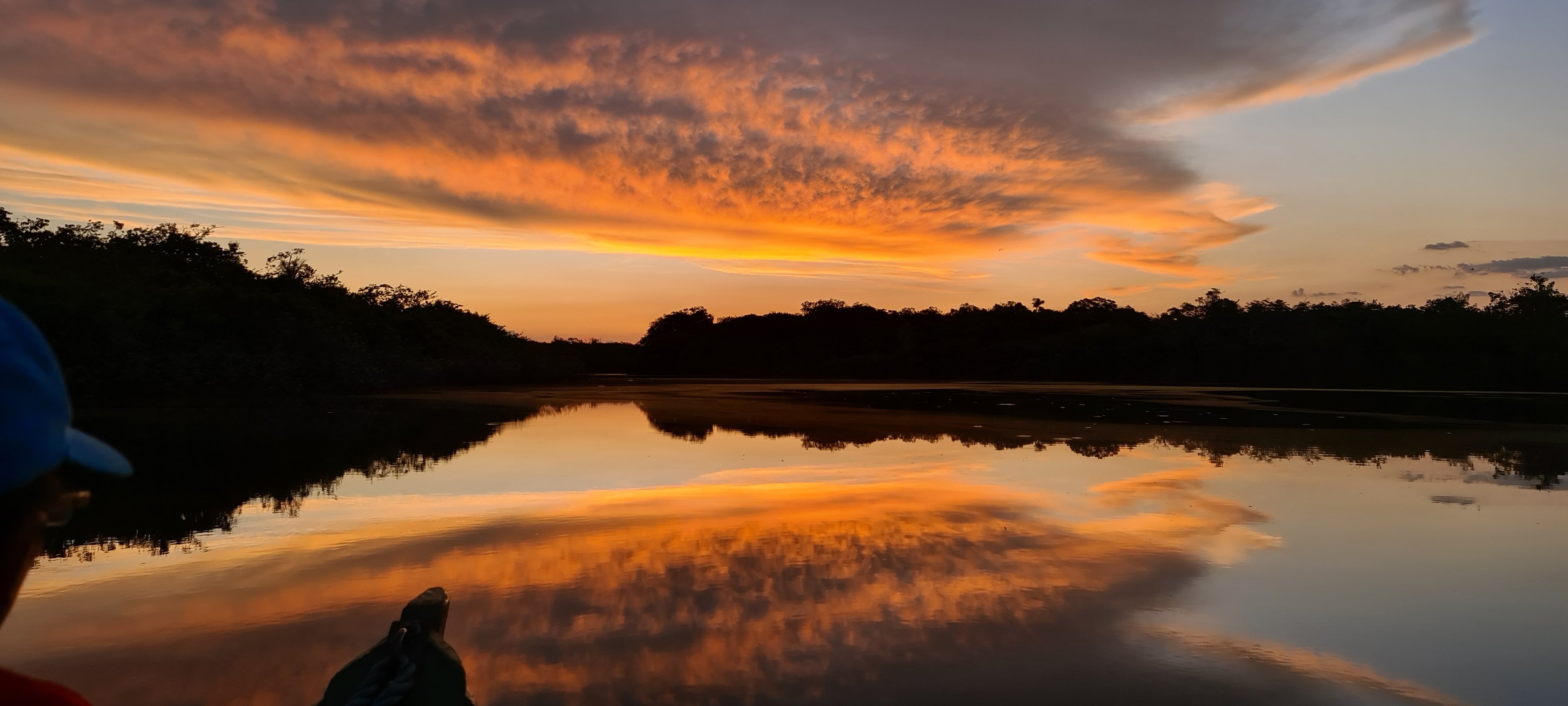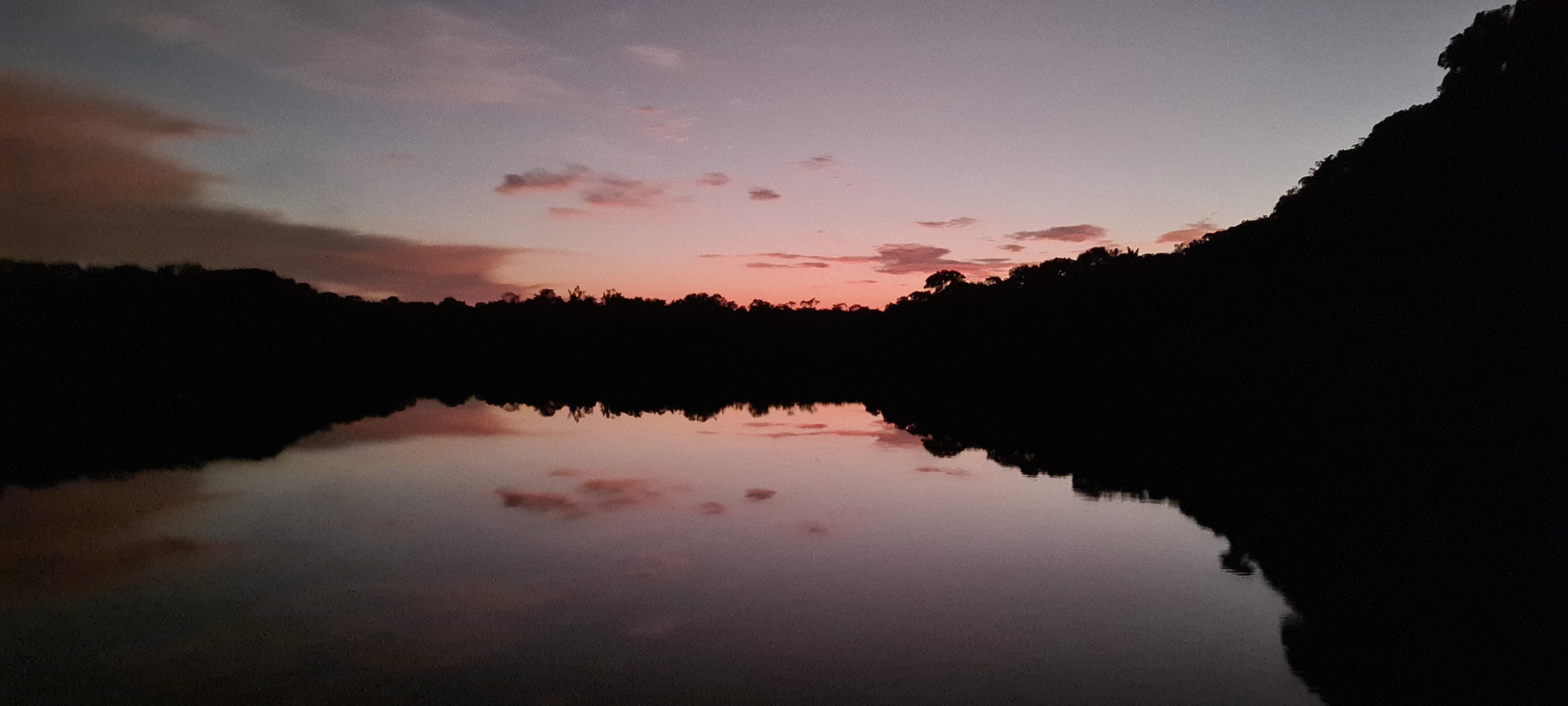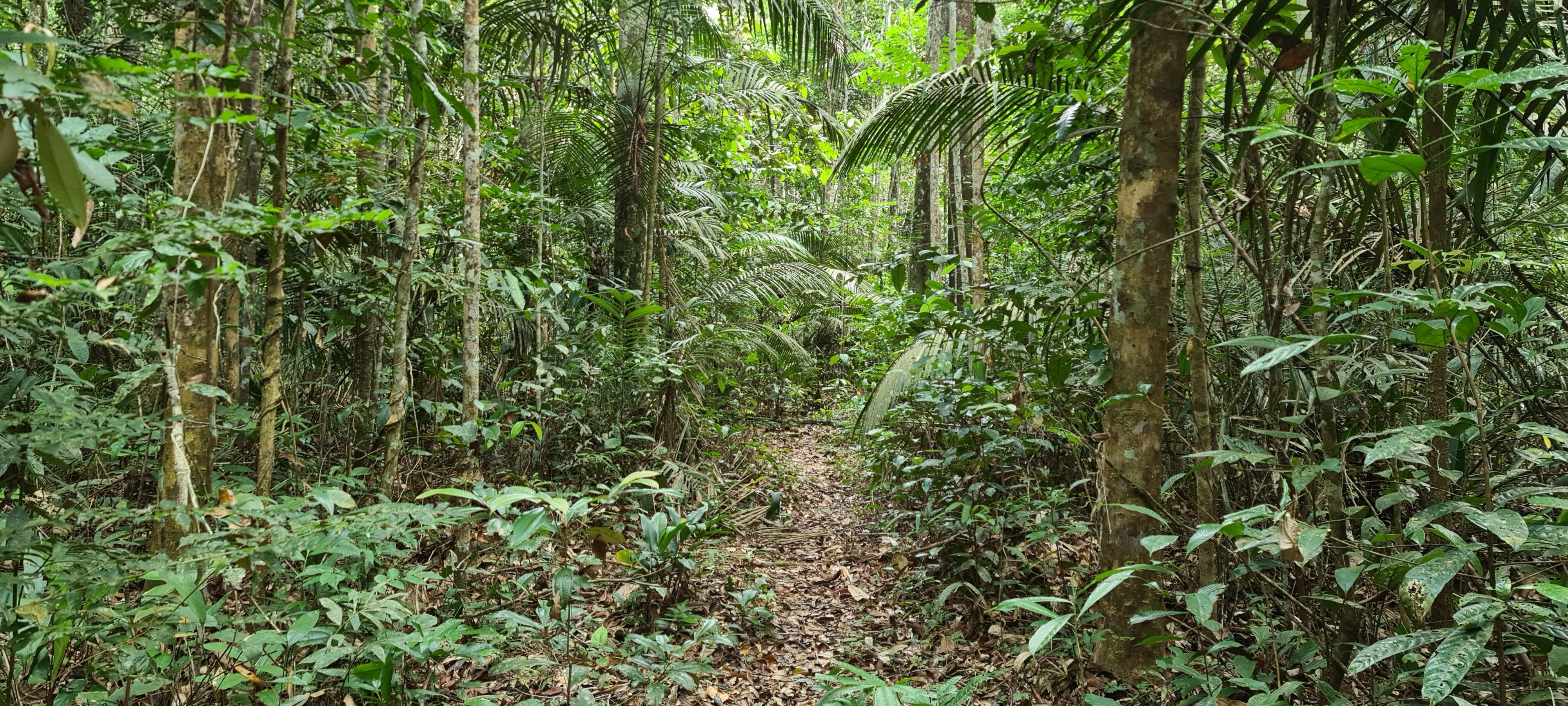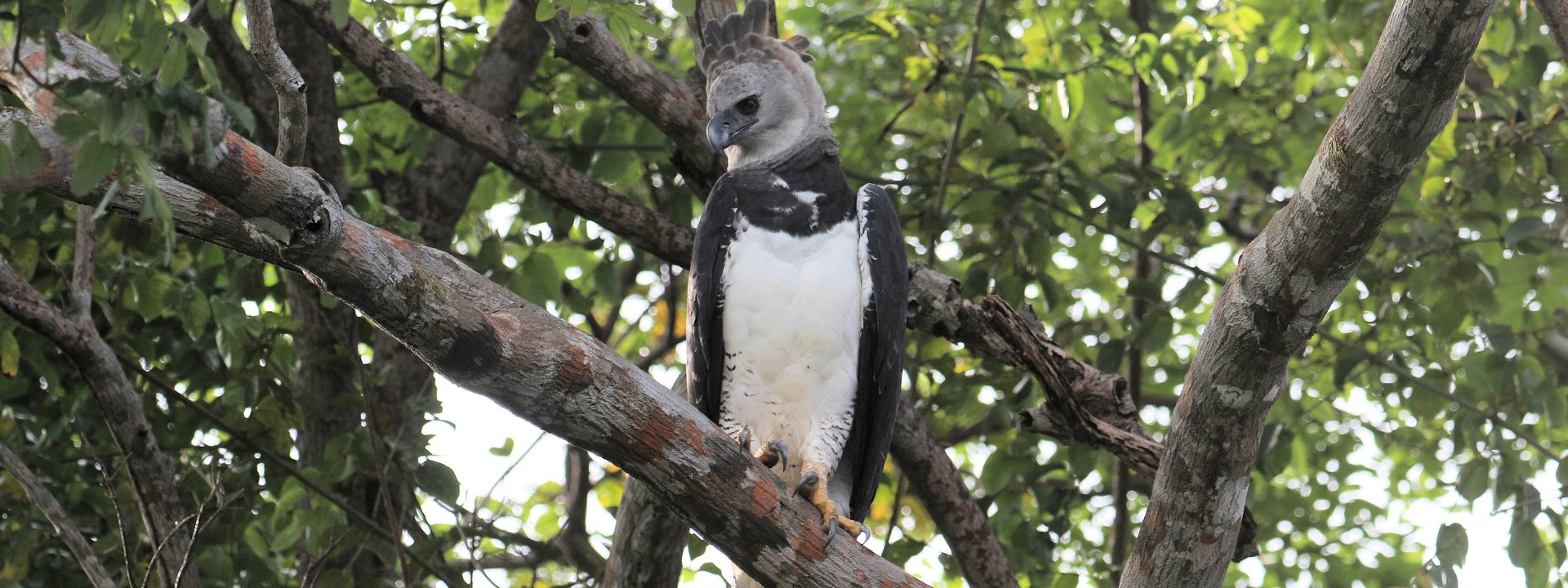Brazil
Remote Amazon Birds and Wildlife Cruise
A two week birds and general wildlife holiday cruising in remote Brazilian Amazonia on a comfortable air conditioned river boat
Run in collaboration with our sister brand WildWings, this exciting and exclusive charter spends two weeks exploring one of the most biologically diverse places on the planet, the Brazilian Amazon. Whilst many visitors to the rainforest base themselves at a single lodge and then visit the surrounding area, this trip is very different, as we will travel and sleep on a comfortable air-conditioned river boat giving us the ability to explore more widely and visit a diverse range of remote habitats.
During our holiday, we will cruise side channels, larger tributaries, and the main rivers, visit river islands and both varzea (annually flooded) and terra firme (never flooded) forests, as well as cruising past mile after mile of untouched forest. This will allow us to look for a wide range of birds and animals including colourful macaws, parrots, trogons and manakins as well as several species of monkeys, both species of Amazon River dolphins, some amazing butterflies and much more.
One of the highlights of this amazing adventure is a visit an excellent eco-tourism project where there is an opportunity to stand in the water with wild Amazon (Pink) River Dolphins as they gently swim around us – a truly unique experience and one which previous participants have described as comparable with visiting the Mountain Gorillas in Africa or Grey Whales in Baja California!
Join Chris Collins and Regina Ribeiro for a birds and general wildlife holiday with a difference and explore one of the most untouched and amazing parts of our planet.
Tour Dates & Prices
Fri 30th August 2024
Sun 15th September 2024
- Guaranteed Departure
Fri 5th September 2025
Sun 21st September 2025
- Available
Tour Cost: 17 Days from £5295 excluding flights
What's Included?
- Two Limosa/WildWings Tour Leaders
- Expert resident wildlife guide
- 14 nights’ accommodation in Brazil, including 13 on the comfortable air-conditioned river boat Iracema
- All main meals with drinking water provided during the day
- Visit to Canopy Tower on outskirts of Manaus
- All entry fees and taxes
- Checklist of birds and mammals
Cost Excludes
International and internal flights, insurance, drinks, airport meals/snacks and other items of a personal nature.
Notes
The extension in 2024 costs £995 per person (twin sharing) with a single supplement of £395. Those joining the extension will need to depart the UK on Tuesday 27 August to ensure they arrive in Manaus on Wednesday 28 August.
This includes:
- WildWings/Limosa Tour Leader
- One night at a comfortable hotel in Manaus and two nights at a rural lodge near Presidente Figueiredo
- Transport between Manaus and Presidente Figueiredo in a private bus plus excursions
- All main meals with drinking water provided during the day
- All entry fees and taxes
- Not included: insurance, drinks and other items of a personal nature.
The Land Only Tour Cost is the amount you will pay Limosa.
Despite the end of pandemic restrictions, we have taken the decision to continue to price our holidays as excluding international flights.
To keep the process as simple as possible, we are working very closely with a dedicated agent at Travel Counsellors, Sacha Barbato, who is essentially now our “in house” flight consultant.
Sacha is a highly experienced independent ATOL bonded travel agent, and his contact details are as follows: sacha.barbato@travelcounsellors.com and 01603 360099
He will be able to advise you which flights we are recommending for each holiday and will be able to book these for you.
This will also sometimes give you the option to travel from a regional airport if you prefer.
We also plan to offer a short extension to look for Guianan Cock-of-the-Rock and several other species we are unlikely to see on our main tour. Details are yet to be finalised but please contact us if you are interested in being notified when these are available.
Tour Cost: 17 Days from £5595 excluding flights
Please note that only two cabins are available at the single supplement price quoted above. Once these are sold, singles will only be available at the full cabin price. Please check availability before booking.
What's Included?
- Two Limosa/WildWings Tour Leaders
- Expert resident wildlife guide
- 14 nights’ accommodation in Brazil, including 13 on the comfortable air-conditioned river boat Iracema
- All main meals with drinking water provided during the day
- Visit to Canopy Tower on outskirts of Manaus
- All entry fees and taxes
- Checklist of birds and mammals
Cost Excludes
International and internal flights, insurance, drinks, airport meals/snacks and other items of a personal nature.
Notes
As this tour was announced more than two years in advance, we are collecting £500 deposits to secure a place. A further £1,300 payable will then be payable in September 2024 with the final balance due 3 months before departure.
The provisional price for the extension in 2025 is £1,095 per person (twin sharing) with a single supplement of £395.The price will be confirmed in summer 2024 and if this increases by more than 5% then clients can withdraw and have the extension cost refunded.
This includes:
- Limosa/WildWings Tour Leader
- One night at a comfortable hotel in Manaus and two nights at a rural lodge near Presidente Figueiredo
- Transport between Manaus and Presidente Figueiredo in a private bus plus excursions
- All main meals with drinking water provided during the day
- All entry fees and taxes
Not included: insurance, drinks and other items of a personal nature.
The Land Only Tour Cost is the amount you will pay Limosa.
Despite the end of pandemic restrictions, we have taken the decision to continue to price our holidays as excluding international flights.
To keep the process as simple as possible, we are working very closely with a dedicated agent at Travel Counsellors, Sacha Barbato, who is essentially now our “in house” flight consultant.
Sacha is a highly experienced independent ATOL bonded travel agent, and his contact details are as follows: sacha.barbato@travelcounsellors.com and 01603 360099
He will be able to advise you which flights we are recommending for each holiday and will be able to book these for you.
This will also sometimes give you the option to travel from a regional airport if you prefer.
Tour Highlights
- 13 nights cruise on a comfortable river boat exploring Brazilian Amazonia
- Visit to the 'meeting of the waters' where the Rios Negro and Solimões merge to form the mighty Amazon
- Cruise past mile after mile of untouched forest
- Explore the pristine Jaú National Park using our vessel's three comfortable motorised canoes
- Look for a spectacular range of birds including macaws, parrots, trogons and manakins
- Explore after dark looking for nocturnal mammals and birds
- Visit to an amazing canopy tower on the outskirts of Manaus where we will see canopy species at eye level
- Expertly led by Limosa's Chris Collins and English-speaking Brazilian wildlife guide, Regina Ribeiro
Outline Itinerary
Depart UK for Manaus via Sao Paulo
Arrive in Manaus with local afternoon birding if flight timings allow. Manaus (1 night)
Early morning visit to Canopy Tower. Board vessel (Iracema) and sail. Visit to the ‘meeting of the waters’ where the Rios Negro and Solimões meet to form the Amazon. Night on Iracema
Explore river islands, varzea forest, terra firme forest along the Solimões and Negro and tributaries. Visit Anavilhanas, the world’s largest river archipelago, explore Jaú National Park. Interact with wild river dolphins. Iracema (12 nights)
Disembark in Manaus. Fly to UK via Sao Paulo.
Arrive in UK
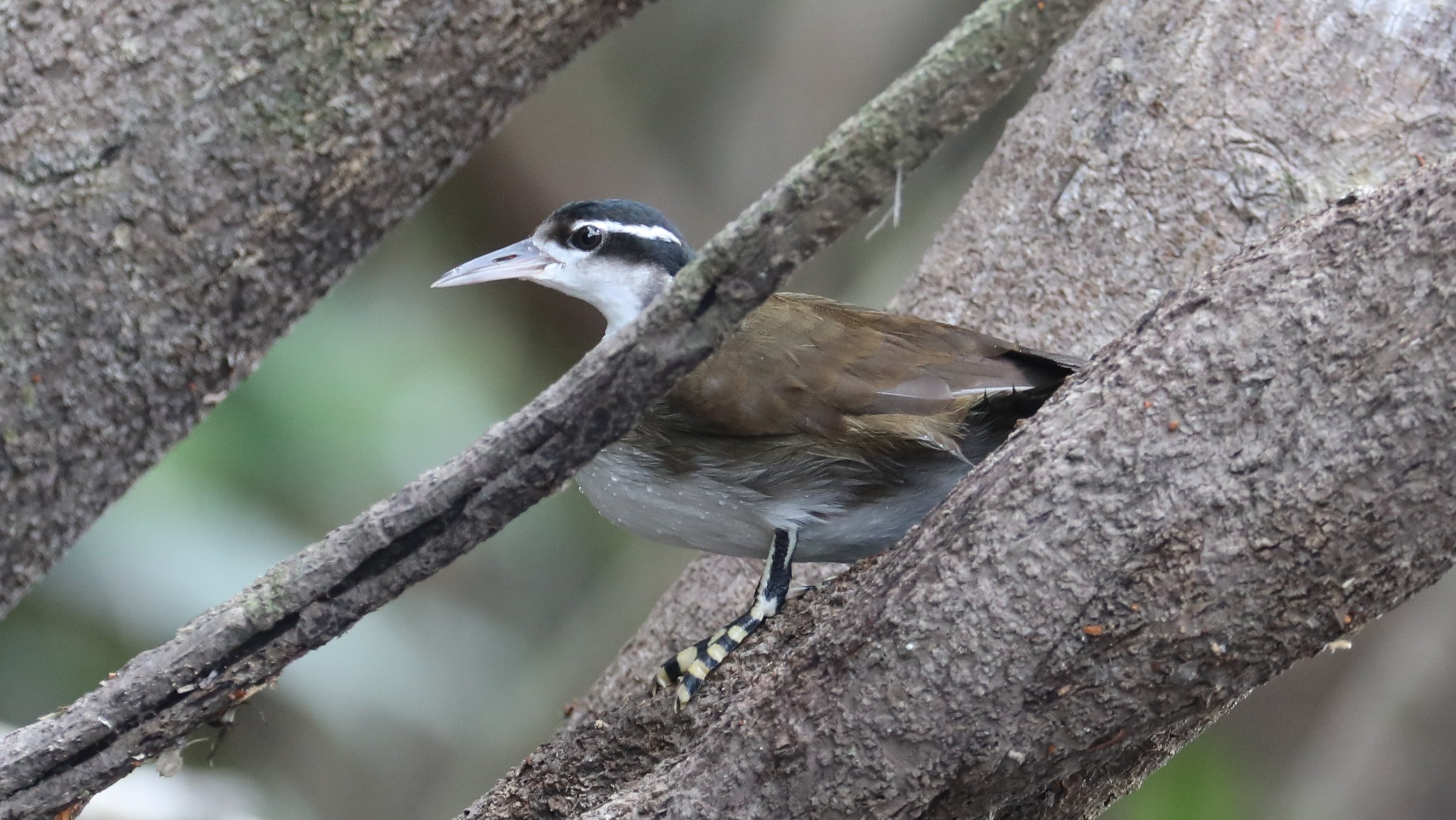
Often described as “the green lungs of the planet”, the Amazon rainforest is the most biologically diverse place on Earth and on this exciting tour run in collaboration with our sister brand WildWings, we plan to spend two weeks in this wildlife paradise.
Whilst many visitors to the rainforest base themselves at a single lodge and then explore the surrounding area, this trip is very different, as we will travel and sleep on a comfortable river boat giving us the ability to explore more widely and visit a diverse range of habitats.
Our adventure starts in Manaus, home of the famous 19th Century Opera House, where we will board our specially chartered live-aboard and home for the next two weeks. Manaus sits close to the confluence of the Rios Negro (a “black water” river) and Solimões (a “white water” river) and this is where the two merge to form the mighty Amazon. The rivers do not, however, mix for several miles and we plan to visit the ‘meeting of the waters’ to witness the extraordinary spectacle of the two seemingly flowing next to each other, separated only by their different temperatures, acidities and speeds.
We then plan to begin our adventure exploring side channels, larger tributaries, river islands and varzea (annually flooded) and terra firme (never flooded) forests. This will allow us to look for a wide range of birds and animals and our live-aboard comes equipped with motorised canoes to give us maximum flexibility. Whilst the vessel can carry 24 passengers, we are limiting this cruise to only 18. In addition, the comfortable motorised canoes can carry up to eight people, but we will limit these to six each plus a guide.
One of the places we plan to explore along the Rio Negro is Anavilhanas which is one of the world’s largest freshwater archipelagos with 400 river islands and a maze of channels and waterways. Only accessible by boat, these islands are almost entirely uninhabited and home for many interesting birds.
We hope to see several localised specialities here including Klages’s and Leaden Antwrens but there are also many colourful and or spectacular species to look for, such as the gleaming red, black and yellow Wire-tailed Manakin or extraordinary looking Amazonian Umbrellabird.
Further upstream, we plan to visit the Jaú National Park which is considered one of the most pristine reserves in Brazilian Amazonia. There is plenty of wildlife to look for here too including the range-restricted Spix’s Black-headed Uacari, an impressive black and chestnut monkey which we have seen on all our previous visits. Other rare species we have previously seen include Rufous Potoo and Nocturnal Curassow but there should be plenty of spectacular wildlife to enjoy with the possibilities including Sunbittern, Blue-and-Yellow Macaw and Pompadour Cotinga.
Cruising up the Rio Negro and its tributaries is certain to be a very special experience, with mile after mile of untouched forest and we plan to spend some of our time wildlife watching from the top deck as we travel along the river. Adopting this strategy in 2015 meant we found an extremely obliging Harpy Eagle which we watched for an hour at 20 metres range. Whilst we would be extremely fortunate to see this species so close again, it was also found on our 2022 voyage and the region does have a good population of this ‘must see’ raptor, so we certainly hope to find it on future tours.
We also plan to go cruising after dark on a number of occasions and this will give us an opportunity to look for nocturnal birds and animals. These trips can be really fascinating and over the course of the trip, we hope to find both Crested and Spectacled Owls, the bizarre looking Great Potoo and a host of nightjars and night mammals. Mammalian possibilities include Common Silky Anteater, Grey Four-eyed Opossum, Brown-throated Sloth, Spotted Paca – all of which have been found previously.
The list of birds we could see during the tour runs into the hundreds and includes some of the most colourful species on the planet including macaws (Chestnut-fronted, Red-and-Green, Scarlet and Blue-and-Yellow), toucans and aracaris (Channel-billed and White-throated Toucans, Green and Black-necked Aracaris), trogons, cotingas, and tanagers, as well as the more cryptically coloured antbirds, woodcreepers and flycatchers. This trip is, however, intended to be a general wildlife experience, rather than a hardcore birding tour, so it is important to appreciate that we will not be worrying about every ‘little brown job’ during our excursions.
This trip is also not just about birds, and we can expect to see both the Amazon (Pink) River Dolphin and the less well-known Tucuxi on a regular basis. Indeed, we hope to visit an excellent eco-tourism project where it is possible to interact with wild dolphins. It is possible to stand in the water with the dolphins as they gently swim around us – a truly unique experience and one which previous participants have described as comparable with visiting the Mountain Gorillas in Africa or Grey Whales in Baja California.
When quietly cruising or during our walks through the forest, we can also expect to see a range of monkeys as the rivers act as natural barriers and different species often occur on opposite banks with over twenty species being possible. We will count ourselves fortunate if we see even half of this total, but the possibilities include Guianan Bearded Saki, Humboldt’s White-faced Capuchin, Pied Tamarin, Humboldt’s Squirrel Monkey, Guianan Red Howler and Spix’s Night Monkey, so irrespective of your wildlife interests, this trip has plenty to offer.
For those wanting to maximize their ‘Amazon experience,’ we plan to visit an excellent canopy tower where we will be able to watch many forest bird species (and some mammals) at eye level on the morning of sailing and prior to the cruise, there will be an optional short extension to look for Guianan Cock-of-the-Rock.
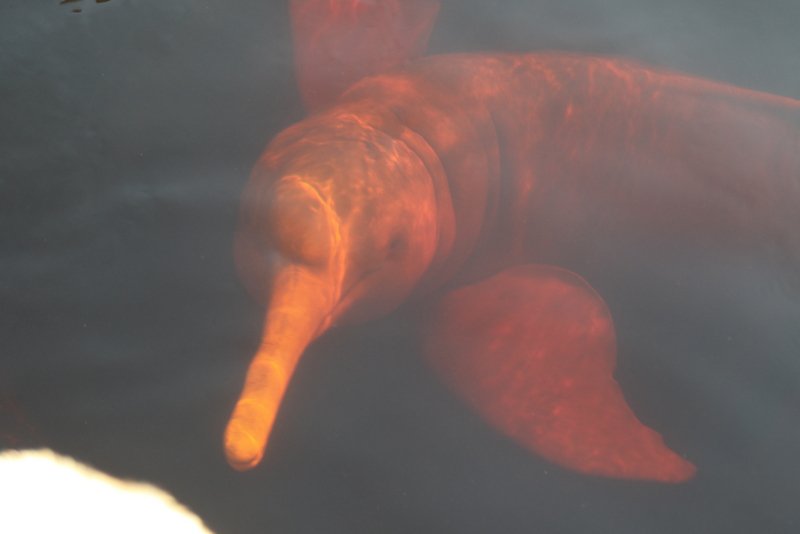
Days 1-2
FLY TO MANAUS
Our birdwatching and wildlife holiday begins with an overnight flight to Sao Paulo, followed by an internal flight to the Amazonian city of Manaus, where we arrive on the afternoon of day 2.
We will make the short journey to our hotel where our Brazilian-based guide Regina Ribeiro will be waiting to meet us. If flight schedules allow, there will be a short (and entirely optional) trip to a remnant forest patch not far from our hotel where we will look our first birds, primates, and other wildlife of our trip. This site is one of the best we know for the highly localised Pied Tamarin and locating this critically endangered monkey will be our major priority for the afternoon. Golden-faced Saki is also present, and we could also find sloths and Red-rumped Agoutis.
Although only a matter of acres in size and surrounded by the city of Manaus on three sides and the mighty Rio Negro on the other, this small area of habitat is also home to some great birds and will be a fantastic introduction to some of the species we can expect to see over the next couple of weeks. The possibilities include Little Chachalaca, White-throated Toucan, Black-necked Aracari, White-eyed Parakeet, Black Nunbird and Yellow-rumped Cacique. Night Manaus
Day 3
MANAUS CANOPY TOWER, BOARD IRACEMA, VISIT TO "MEETING OF THE WATERS"
We plan to depart our hotel before dawn, so we are at an impressive canopy tower on the outskirts of Manaus as the first rays of the sun break the horizon. This 42-metre-high structure is located in a forest reserve on the edge of town and whilst we will have to climb the two hundred or so steps to reach the top, the views and the wildlife opportunities make this well worth the effort.
Whilst we will be able to see the city centre of Manaus distantly to our south, we will have forest surrounding us on all sides and the range of species that can be found here is extremely impressive. With the top of the tower being higher than most of the nearby trees, we will be looking down on canopy species which usually one has to look up at from below making this a very special and different experience. We may well see a range of parrots and macaws flying by or perched in the treetops and species we have seen previously include Caica Parrot, Blue-headed Parrot and Red-bellied Macaw.
There may also be roving mixed flocks of fruit eating birds with colourful tanagers such as the amazing Turquoise Tanager amongst the possibilities. Toucans and aracaris could well be perched in an emergent tree warming themselves as the first rays of warming sun or we could see a bird of prey sitting quietly waiting for a potential meal to appear.
After a couple of hours or so at this special place, we will reluctantly retrace our steps and return to our hotel for a well-deserved breakfast. Having checked out of our rooms, we will then make the short journey to the wharf where our home for the next 13 nights awaits us, the comfortable river boat Iracema.
After an introduction to our vessel and crew which will probably be done whilst we sip a delicious caipirinha (the Brazilian lime cocktail), we will leave our moorings with our first destination likely to be the "meeting of the waters". As we cruise downstream, we should be able to see the famous 19th Century Opera House.
Our main objective is to reach the confluence of the Rios Negro (a “black water” river) and Solimões (a “white water” river) as this is where the two merge to form the mighty Amazon. The rivers do not, however, mix for several miles and we will see the extraordinary spectacle of the two seemingly flowing next to each other, separated only by their different temperatures, acidities, and speeds. There are likely to be river dolphins and both Large-billed and Yellow-billed Terns where the two rivers merge as different fish species tend not to swim from one river into the other.
As the light begins to fade, we are likely to see flocks of parrots flying over as they head for their roosts but after dark (and subject to weather) we will almost certainly head out in the canoes for our first nocturnal excursion. Every night trip is different, but we are likely to visit a place where the density of Great Potoos is exceptional and we could see at least a dozen of these large birds. Related to nightjars, the cryptic plumage makes these difficult to spot during the day as they sit on a branch out of sight but after dark the birds come to the water’s edge, and we should get some great views. Night Iracema
Days 4 - 15
EXPLORING RIO NEGRO, ANAVILHANAS, JAU NATIONAL PARK AND MUCH MORE
We will keep our schedule as flexible as possible but over the twelve days we have aboard Iracema, we plan to explore side channels, larger tributaries, river islands and varzea (annually flooded) and terra firme (never flooded) forests. This will allow us to look for a wide range of birds and animals.
Our air-conditioned vessel comes equipped with three comfortable motorised canoes to give us maximum flexibility and whilst Iracema can carry 24 passengers, we are limiting this cruise to only 18. In addition, the canoes can carry up to eight people, but we will limit these to six each plus a guide.
One of the places we plan to explore along the Rio Negro is Anavilhanas which is one of the world’s largest freshwater archipelagos with 400 river islands and a maze of channels and waterways. Only accessible by boat, these islands are almost entirely uninhabited and home to many interesting birds. We hope to see several localised specialities including Klages’s and Leaden Antwrens but there are many more widespread species such as the stunning red and yellow Wire-tailed Manakin, the extraordinary looking Amazonian Umbrellabird as well as Festive Parrot, Green-tailed Jacamar and much more.
Further upstream, we plan to visit the Jaú National Park which is considered one of the most pristine reserves in Brazilian Amazonia. There is plenty of wildlife to look for here including the range-restricted Spix’s Black-headed Uacari, a spectacular black and chestnut coloured monkey which we have seen on all our previous visits. The rare Rufous Potoo and Nocturnal Curassow have both been found previously but there should be plenty of colourful wildlife to enjoy as this region is, for example, an excellent place to find Blue-and-Yellow Macaws.
Cruising up the Rio Negro and its tributaries is certain to be a very special experience, with mile after mile of untouched forest and we plan to spend some of our time wildlife watching from the top deck of Iracema as we travel along the river. Some of our previous clients have described this as akin to "birding from a floating canopy tower" and adopting this strategy in 2015 meant we found an extremely obliging Harpy Eagle which we watched for an hour at 20 metres range with a more distant encounter in 2022.
Depending on the location, we also plan to go cruising after dark on several occasions and this will give us an opportunity to look for nocturnal birds and animals. These trips can be really fascinating and over the course of the trip, we hope to find both Crested and Spectacled Owls, both Great and Common Potoos and a host of nightjars and night mammals. Mammalian possibilities include Common Silky Anteater, Grey Four-eyed Opossum, Brown-throated Sloth, Spotted Paca – all of which have been seen on previous trips.
The list of birds we could see during the tour runs into the hundreds and includes some of the most colourful species on the planet including macaws (Chestnut-fronted, Red-and-Green, Scarlet and Blue-and-Yellow), toucans and aracaris (Channel-billed and White-throated Toucans, Green and Black-necked Aracaris), trogons, cotingas, and tanagers, as well as the more cryptically coloured antbirds, woodcreepers and flycatchers. This trip is, however, intended to be a general wildlife experience, rather than a hardcore birding tour, so it is important to appreciate that we will not be worrying about every ‘little brown job’ during our excursions.
This trip is also not just about birds, and we can expect to see both the Amazon (Pink) River Dolphin and the less well-known Tucuxi on a regular basis. Indeed, we intend to visit an excellent eco-tourism project where it is possible to interact with completely wild dolphins. Standing in the water, the dolphins gently swim around us – a truly unique experience and one which previous participants have described as comparable with visiting the Mountain Gorillas in Africa or Grey Whales in Baja California.
When quietly cruising or during our walks through the forest, we can also expect to see a range of monkeys as the rivers act as natural barriers and different species often occur on opposite banks with over twenty species being possible. We will count ourselves fortunate if we see even half of this total, but the possibilities include Guianan Bearded Saki, Humboldt’s White-faced Capuchin, Pied Tamarin, Humboldt’s Squirrel Monkey, Guianan Red Howler and Spix’s Night Monkey, so irrespective of your wildlife interests, this trip has plenty to offer. Iracema (12 further nights)
Day 16
DISEMBARK IRACEMA, FLY TO UK
During our final night aboard our helpful and expert crew will navigate Iracema back to Manaus and after breakfast, we will reluctantly disembark.
It is only a short drive to the airport, and we will fly to Sao Paulo where we connect with an overnight flight to the UK.
Day 17
ARRIVAL IN UK
Arrival in the UK where our birds and wildlife tour to the Brazilian Amazon concludes.
PRE-CRUISE EXTENSION
2024: Tuesday 27 - Saturday 31 August (5 days)
2025: Tuesday 2 - Saturday 6 September (5 days)
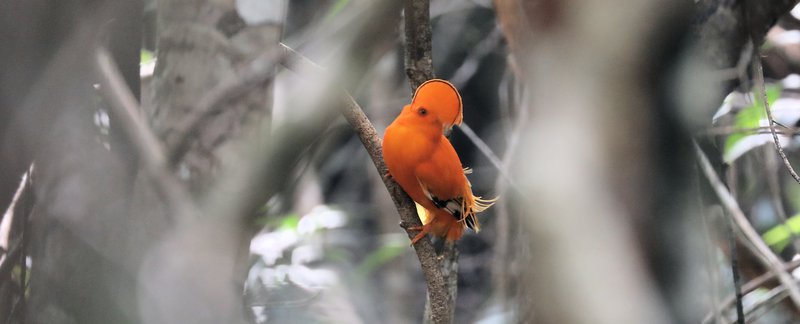
Guianan Cock-of-the-Rock - this stunning male was photographed at the lek close to the lodge where we plan to stay © Chris Collins
Subject to demand, we plan to offer a short extension (three additional nights) to visit a modest lodge 2-3 hours north of Manaus where it is possible to visit a lek of Guianan Cock-of-the-Rock and look for a number of other species which we are unlikely to see on our cruise including Guianan Red and Purple-breasted Cotingas.
Days 1-2
FLY TO MANAUS
The extension begins with an overnight flight to Sao Paulo, followed by an internal flight to the Amazonian city of Manaus, where we arrive on the afternoon of day 2.
Depending on flight schedules, we should arrive at our hotel in Manaus by the middle of the afternoon and after an opportunity to freshen up, we will explore a remnant forest patch not far from our hotel where we will look our first birds, primates and other wildlife of our trip. This site is one of the best we know for the highly localised Pied Tamarin and locating this critically endangered monkey will be our major priority for the afternoon. Golden-faced Saki is also present, as well as Red-rumped Agouti.
Although only a matter of acres in size and surrounded by the city of Manaus on three sides and the mighty Rio Negro on the other, this small area of habitat is also home to some great birds and will be a fantastic introduction to some of the species we can expect to see over the next couple of weeks. The possibilities include Little Chachalaca, White-throated Toucan, Black-necked Aracari, White-eyed Parakeet, Black Nunbird and Yellow-rumped Cacique. Night Manaus
Day 3
DEPART FOR PRESIDENTE FIGUEIREDO
We will have another opportunity to explore the forest habitat near our hotel and if we failed to find any of the primates the previous afternoon, we will have a second chance to locate them as on some occasions they can be tricky to find. Other possibilities include a couple of species of sloths plus a surprisingly good range of birds.
We will then leave Manaus and head north towards the small town of Presidente Figueiredo where we will base ourselves at a small rural lodge for a couple of nights. Although modest in nature, it is perfectly comfortable with air conditioning and private bathrooms.
The journey from Manaus should take about three hours but we may make a few stops along the way if we see any interesting wildlife or habitat, but our plan is to arrive at our accommodation in time for lunch.
Our reason for coming here is because there is a lek of the stunning Guianan Cock-of-the-Rock only a few minutes’ walk from our accommodation and we plan to make at least one visit during our stay to enjoy the spectacle of the stunning males as they congregate only a matter of metres away. For much of the time, the birds are likely to be silent but, occasionally, we may hear their extraordinary calls, and should a female show up, their behaviour can become somewhat frenzied.
To minimise disturbance to the birds, visits to the lek are limited to 40 minutes (and flash photography is not allowed) but this should give us ample time to enjoy and photograph these amazingly colourful birds before walking back to our lodge.
Other possibilities could include Bronzy Jacamar, Black-spotted Barbet, White-lored Euphonia and after dark, we will explore to see if we can find any nocturnal mammals, owls, nightjars or potoos. Night Presidente Figueiredo
Day 4
PRESIDENTE FIGUEIREDO
We have a full day to explore around our lodge and the environs of Presidente Figueiredo and will, no doubt, want to make a second visit to the lek.
There is a modest trail network in the forest near the lodge, but it is also well worth spending time in the clearing around the lodge as a great range of birds can also be found here including both Guianan Red and Purple-breasted Cotingas and should there be any fruiting trees here, Guianan Cock-of-the-Rock will also sometimes come here to feed.
As well as looking for birds, we may also go exploring in our bus and hope to find the Midas, or Golden-handed, Tamarin which was seen on our 2022 and 2023 visits. Night Presidente Figueiredo
Day 5
DEPART PRESIDENTE FIGUEIREDO FOR MANAUS
We will spend the early part of the morning exploring around the lodge and will then set off back to Manaus where we will aim to arrive in the middle of the afternoon in order to meet up with those who did not come on the extension. Night Manaus
The extension in 2024 costs £995 per person (twin sharing) with a single supplement of £395.
This includes:
- WildWings/Limosa Tour Leader
- One night at a comfortable hotel in Manaus and two nights at a rural lodge near Presidente Figueiredo
- Transport between Manaus and Presidente Figueiredo in a private bus plus excursions
- All main meals with drinking water provided during the day
- All entry fees and taxes
Not included: insurance, drinks and other items of a personal nature.
Please note: the number of participants who can come on the extension is restricted (less than on the cruise) as there are only a limited number of rooms at the lodge where we plan to base ourselves. Places on the extension will, therefore, be offered strictly on a "first come, first served" basis.To minimise disturbance at the Cock-of-the-Rock lek flash photography is not permitted.
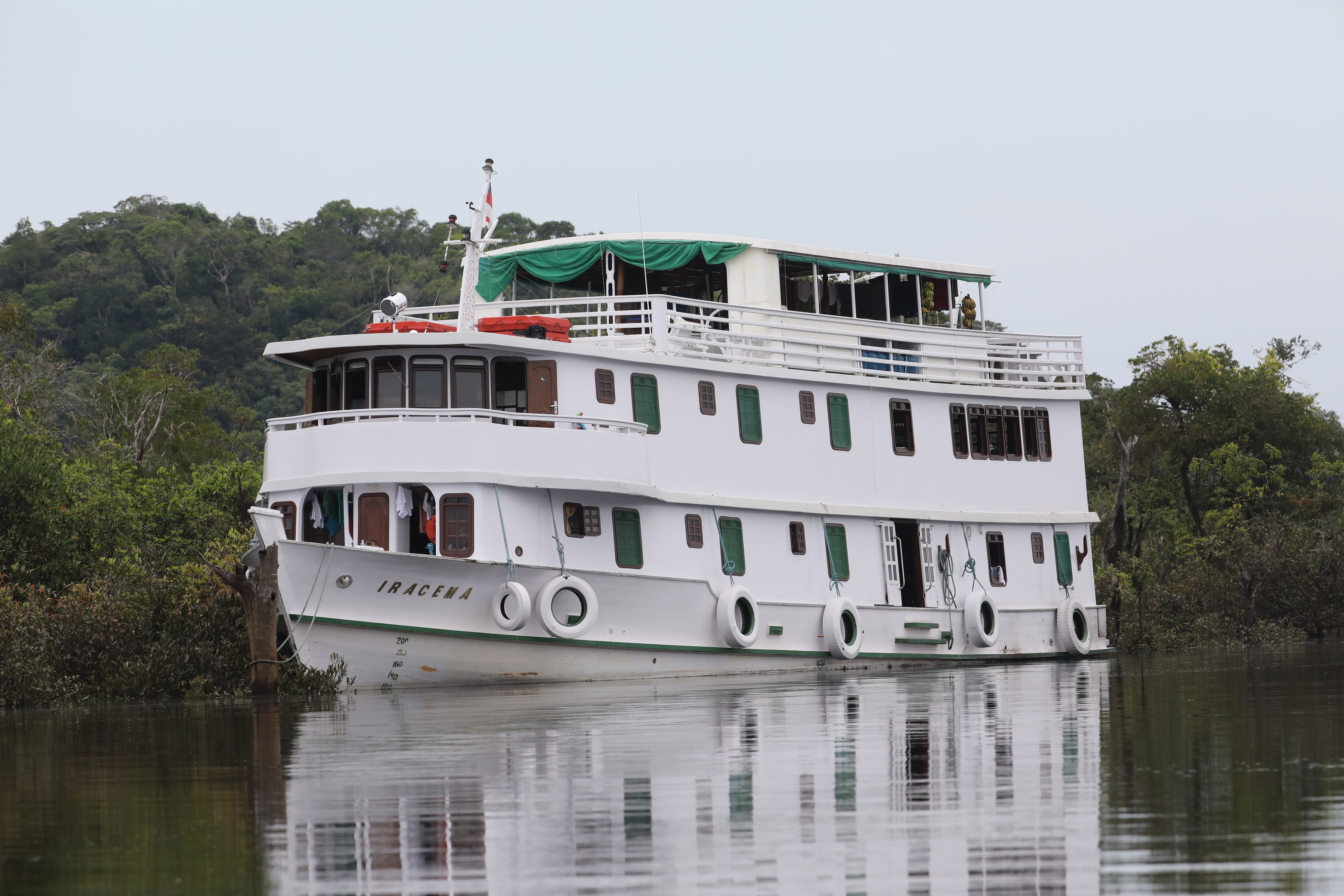
WHAT TO EXPECT
A 17-day birdwatching and general wildlife tour in association with our sister brand WildWings to the Brazilian Amazon with thirteen nights on the comfortable, but not luxurious, river boat, Iracema.
We will be spending much of our trip exploring remote regions well away from ‘civilisation’ with, for example, only very occasional access to a mobile telephone signal! Please don't expect to be checking your emails on a regular basis on this holiday!
Our itinerary once aboard the vessel is flexible and we will adjust this to maximise on your experience with a short briefing every evening to outline our plans for the following day.
Most of our excursions will be made using our vessel’s three motorised canoes, although there will be some opportunities for some, generally short walks in the forest. We may be in the canoes for 3-4 hours at a time but are usually able to find somewhere to land to stretch our legs or for a “comfort break”.
When we do occasionally offer longer walks, there will generally be a second option of a canoe ride for those who prefer this.
Boarding the motorised wooden canoes requires reasonable mobility but should not be a problem for average individuals. If in doubt, please contact us.
As with all wildlife tours to the tropics, be prepared for early starts, getting out in the field at daybreak, typically followed by a siesta during the hottest and least ‘birdy’ part of the day before venturing out again mid-late afternoon.
On some mornings, we are likely to have breakfast at approximately 05:30 but there will be other occasions when we go out for a couple of hours and then come back for breakfast, although there will invariably be coffee and cake available beforehand. On at least one occasion, we will aim to leave well before daybreak to be out on the river as the forest birds and animals wake up for the start of the new day.
There is no compulsion to join the excursions and you may, of course, elect to stay onboard the main vessel at any time if you wish.
On some evenings, we will offer canoe rides after dinner to look for nocturnal birds and other wildlife. These trips may be for a couple of hours or so and occasionally longer.
There may periodically be the opportunity to go for a refreshing swim in the river and you will definitely want to bring some suitable clothes for our ‘swim’ with the river dolphins.
Birds are inevitably the most conspicuous inhabitants of the forest, so will be our primary focus on the tour but we will also look for primates, other mammals, and an array of butterflies.
WEATHER
As Manaus is just three degrees south of the Equator, the climate is tropical with daytime temperatures typically reaching a high of about 33C (90F) in Manaus in August-September, although we will generally be back on Iracema from late morning until the middle of the afternoon.
Although we are not visiting during the wet season, we still may encounter an occasional and sometimes heavy downpour, so we would certainly recommend a poncho (to keep your gear dry) and an umbrella. Our experience is that “breathable” fabrics often do not work well in humid tropical conditions and your best option may be a cheaper plastic poncho.
We would certainly recommend bringing some protection against the sun and a hat with a wide brim (to protect the back of your neck) is advisable.
INSECTS
Although mosquitos and other biting insects are present and you will need to check with your GP Practice about malaria, our experience is that generally these types of insects are in lower numbers on the black water Rio Negro which is where we will spend most of our time.
BIRDS
220-260 species
MAMMALS
20-35 species
ACCOMMODATION
Our vessel has cabins on two decks and an open but covered top deck which is great for wildlife watching. All decks are connected by a staircase which have handrails.
Each cabin is for two people with a private bathroom and air-conditioning, though this is only turned on at night for sleeping and during the heat of the day if we are travelling between locations. The private bathrooms have a sink, toilet and cool-water shower (the water is not heated but it is lukewarm and refreshing). There are also reading lights by each bed.
The cabins have comfortable bunk beds with a ladder to access the top bunk. There is also a cupboard in each cabin to store your possessions.
The main deck has eight of the cabins, the second deck has the other four passenger cabins, plus the bar/dining saloon/lounge and a small library.
A limited laundry service is available onboard although everything has to be line dried so there are no guarantees how long this will take.
We suggest that ideally you bring enough clothes for most of the trip. You can wash small items yourself and hang them on the top deck where there is usually a breeze or ask one of the crew to wash items for you. There are no set rates for the laundry service but they will certainly appreciate a tip for their efforts!
For our night in Manaus, we stay in a good quality tourist hotel where all rooms have private facilities.
MEALS
All main meals (and drinking water provided during the day) are included in the tour price, commencing with dinner at our hotel in Manaus on Day 2 and concluding with breakfast on Day 16 prior to disembarking Iracema and our flight home.
Meals on Iracema are buffet-style and usually comprise a tasty range of meat, fish and vegetarian options for lunch and dinner. Due to the remoteness of our trip, we are unable to cater for very specific dietary requirements but vegetarians, for example, should have no major problems.
Mineral water is available from a series of coolers, and we would encourage you to bring a suitable water bottle to fill this up.
There is a modest bar aboard which sells a range of alcoholic and soft drinks. This is run on a ‘chit system’ and you can pay in cash (US dollars or Brazilian Reals) or by credit card at the end of the trip.
WALKING
Most of our excursions will be in Iracema’s three motorised canoes and we may not land on all excursions. Where we do, walks are taken at a gentle pace, however, there are only a handful of places we visit with forest trails.
Comfortable shoes or sandals should be fine when we are aboard Iracema but we would strongly recommend bringing some wellington boots for our walks as it can be muddy stepping from the canoe onto the shore and in the forest, with the possibility of occasionally having to stand in shallow water/mud to get in and out of the canoes.
GROUND TRANSPORT
We will travel by private air-conditioned minibus between Manaus airport and our hotel and then when we return to the airport at the end of the trip. When on our cruise, almost all excursions will be by canoe with occasional landings.
The canoes are open, with wooden bench seats, on which two participants will sit. Cushions are available onboard. The seats have back support.
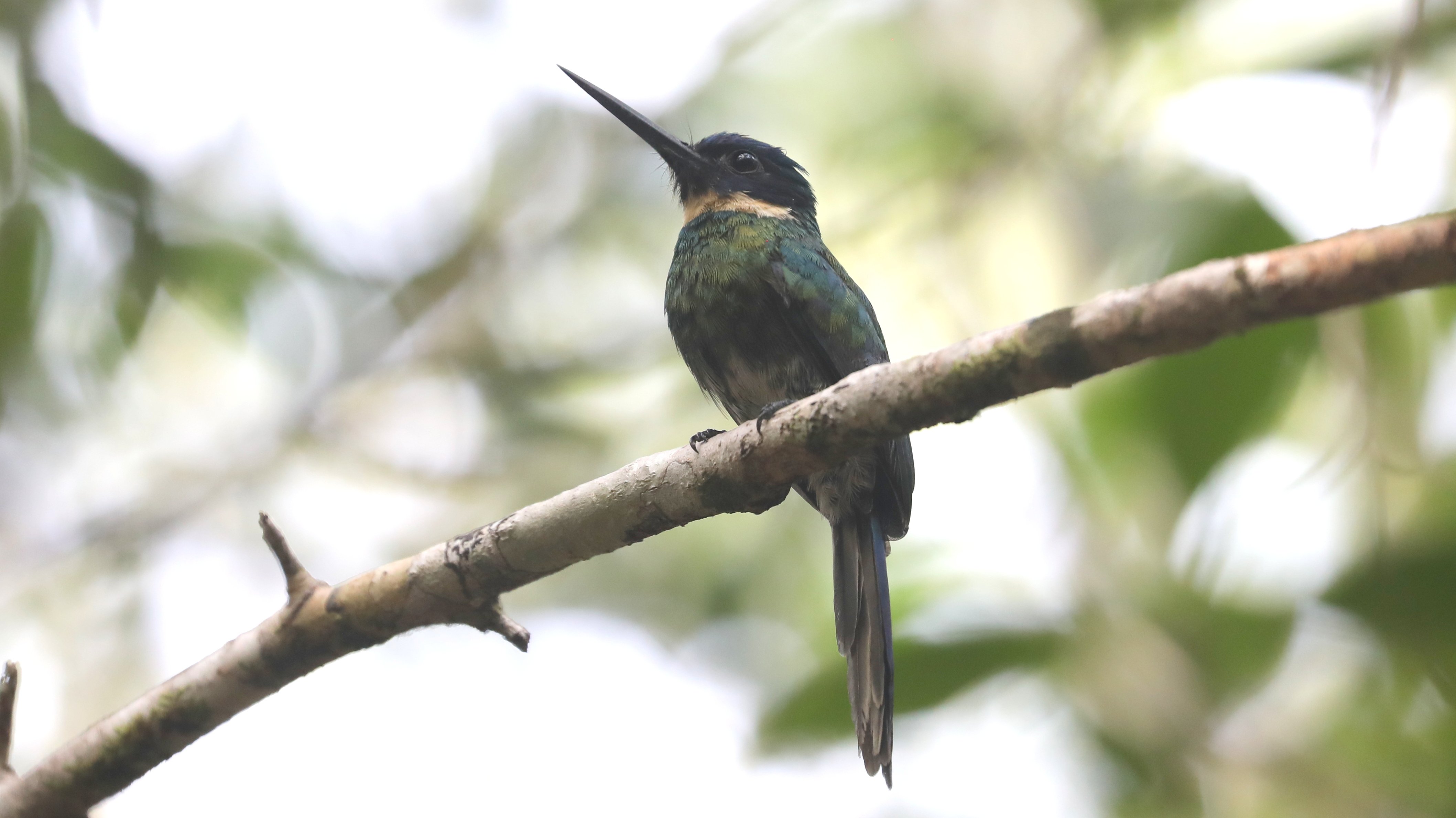
Tour Gallery
View a gallery of images for this tour below, click on an image to view as full size with caption
